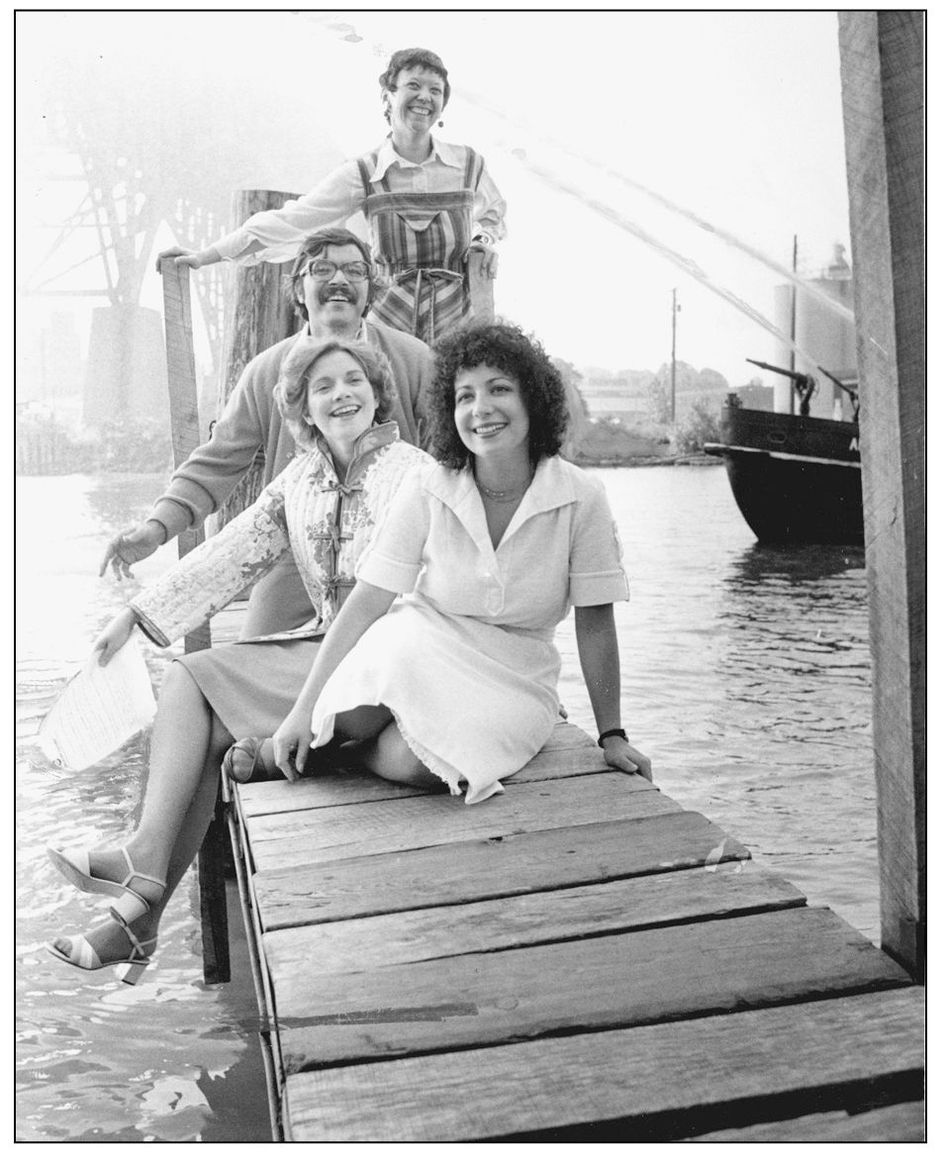Three
1960–1979
DECLINE AND DETERIORATION

SOHIO would set up an observation porch over its operations for the 1960 edition of the Industrial Valley Tour. (Cleveland Press Archives—CSU Library Special Collections.)
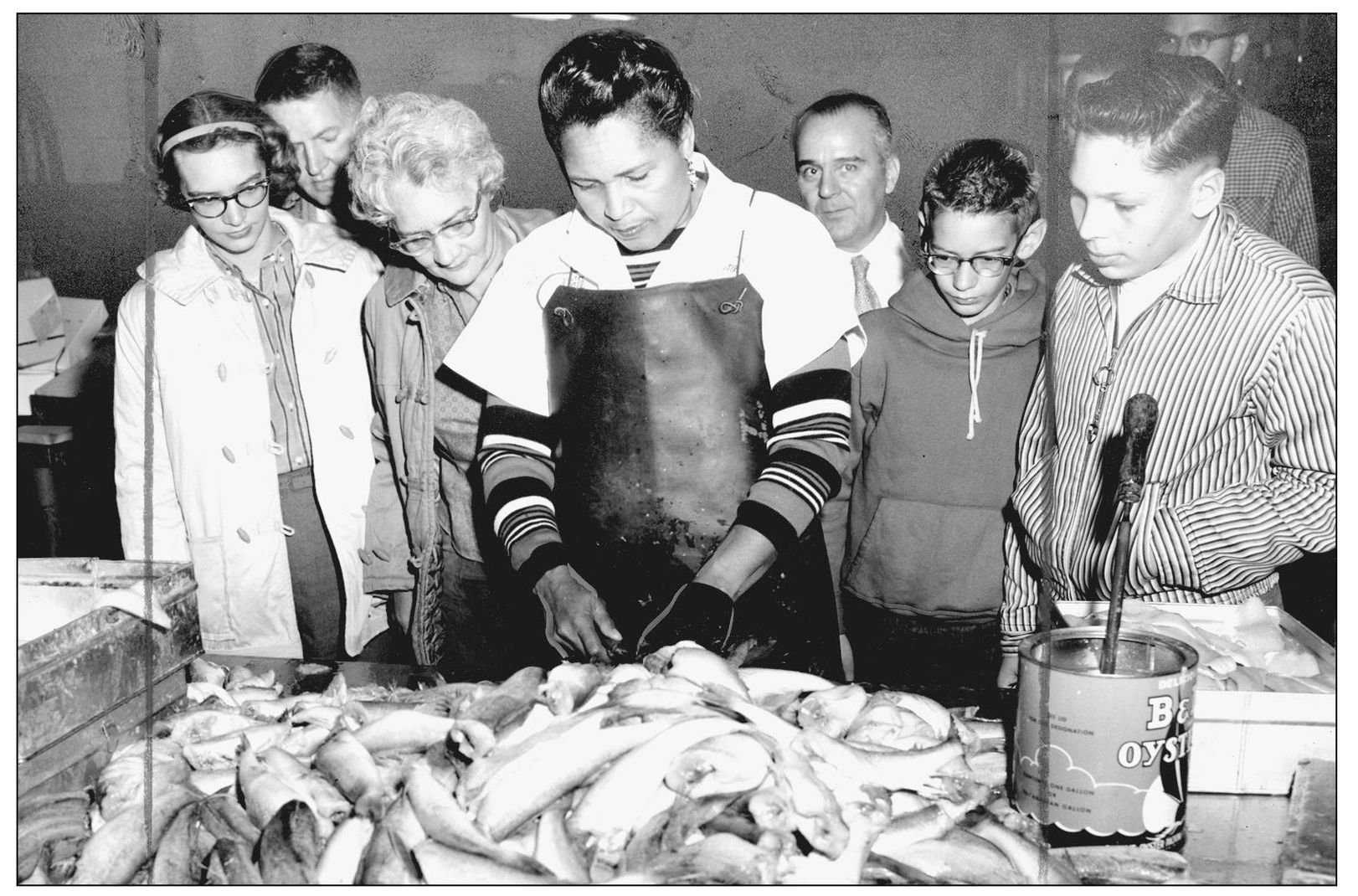
Travelers along the Industrial Valley Tour watch as an employee from the State Fish Company prepares a fresh catch for sale. The State Fish Company was founded in 1933, and it grew into the Cleveland area’s top seafood wholesaler. (Cleveland Press Archives—CSU Library Special Collections.)
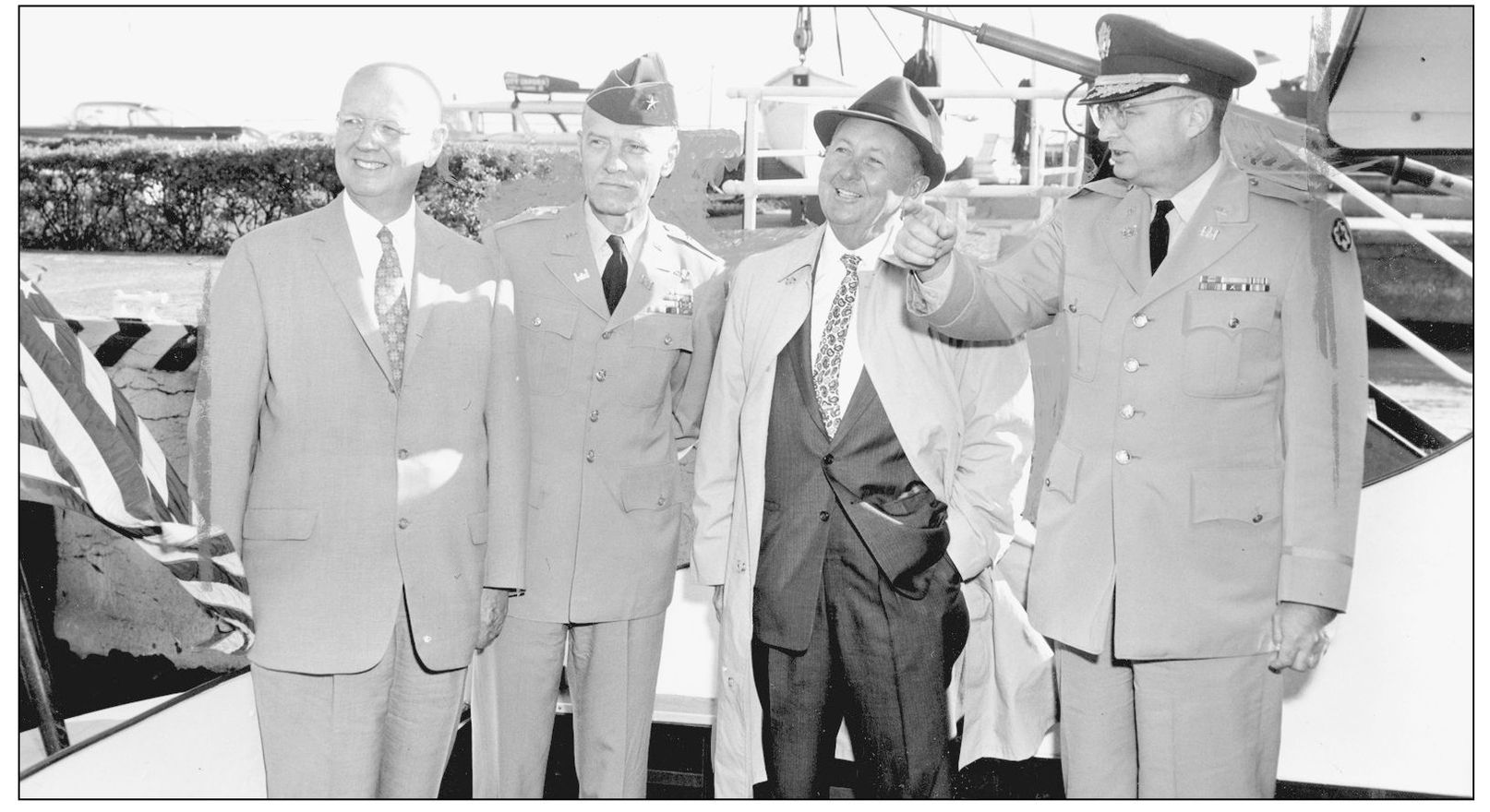
Although Cleveland lagged behind other Great Lakes’s ports in its St. Lawrence Seaway–related improvements, $25 million was spent on replacing old bridges and improving navigation on the Cuyahoga. Inspecting the results of this project in September 1960 are (from left to right) O. A. Reynolds from Cleveland’s chamber of commerce, Gen. Thomas D. Rogers of the U.S. Army Corps of Engineers, port director W. J. Rogers, and Col. Earle B. Butler, also from the Army Corps of Engineers. (Cleveland Press Archives—CSU Library Special Collections.)
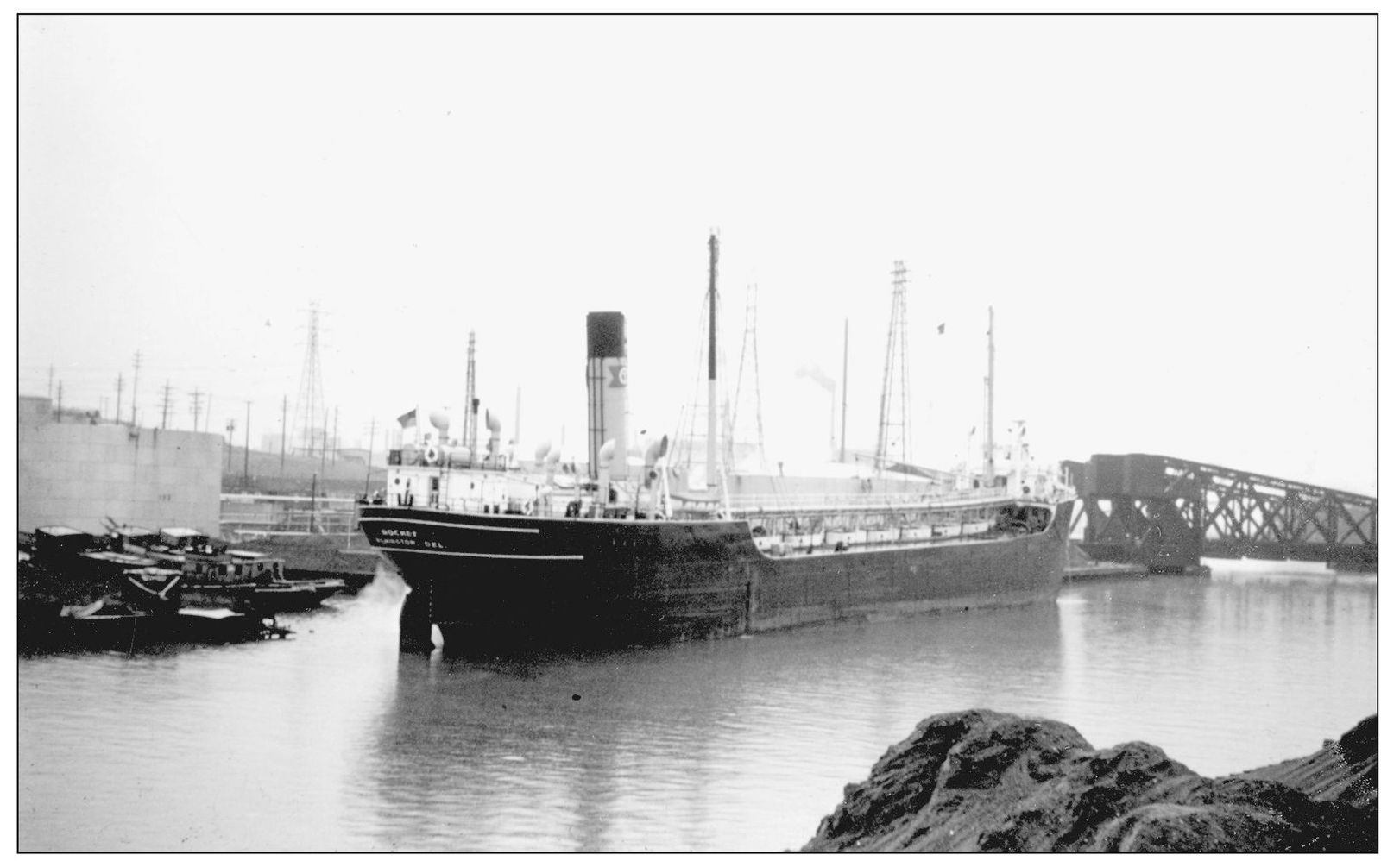
The oil tanker Rocket was built in 1913 as the Radiant for the Standard Oil Company. Acquired by Cleveland Tankers Incorporated in 1933, the 349-foot-long boat was towed to Spain in 1974 for scrapping. (Photograph by W. W. Vance; the Robert Vance Collection)
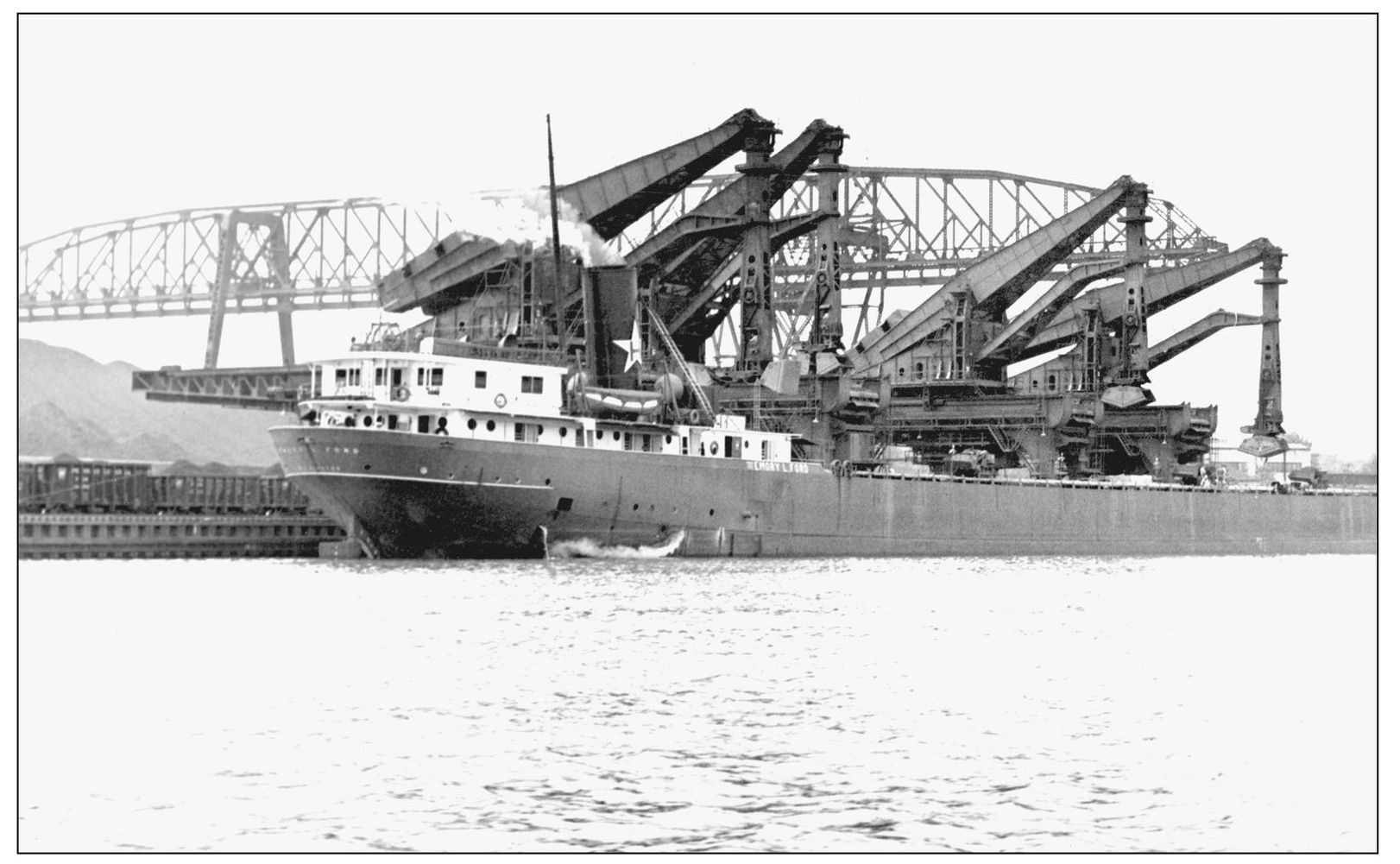
The Emory L. Ford, a member of the Hannah fleet, unloads at the lakefront Huletts on Whiskey Island. The Ford went through several owners and saw its name changed to Raymond H. Reiss before ending up with Cleveland-Cliffs. The boat was scrapped in 1981. (Cleveland Press Archives—CSU Library Special Collections.)
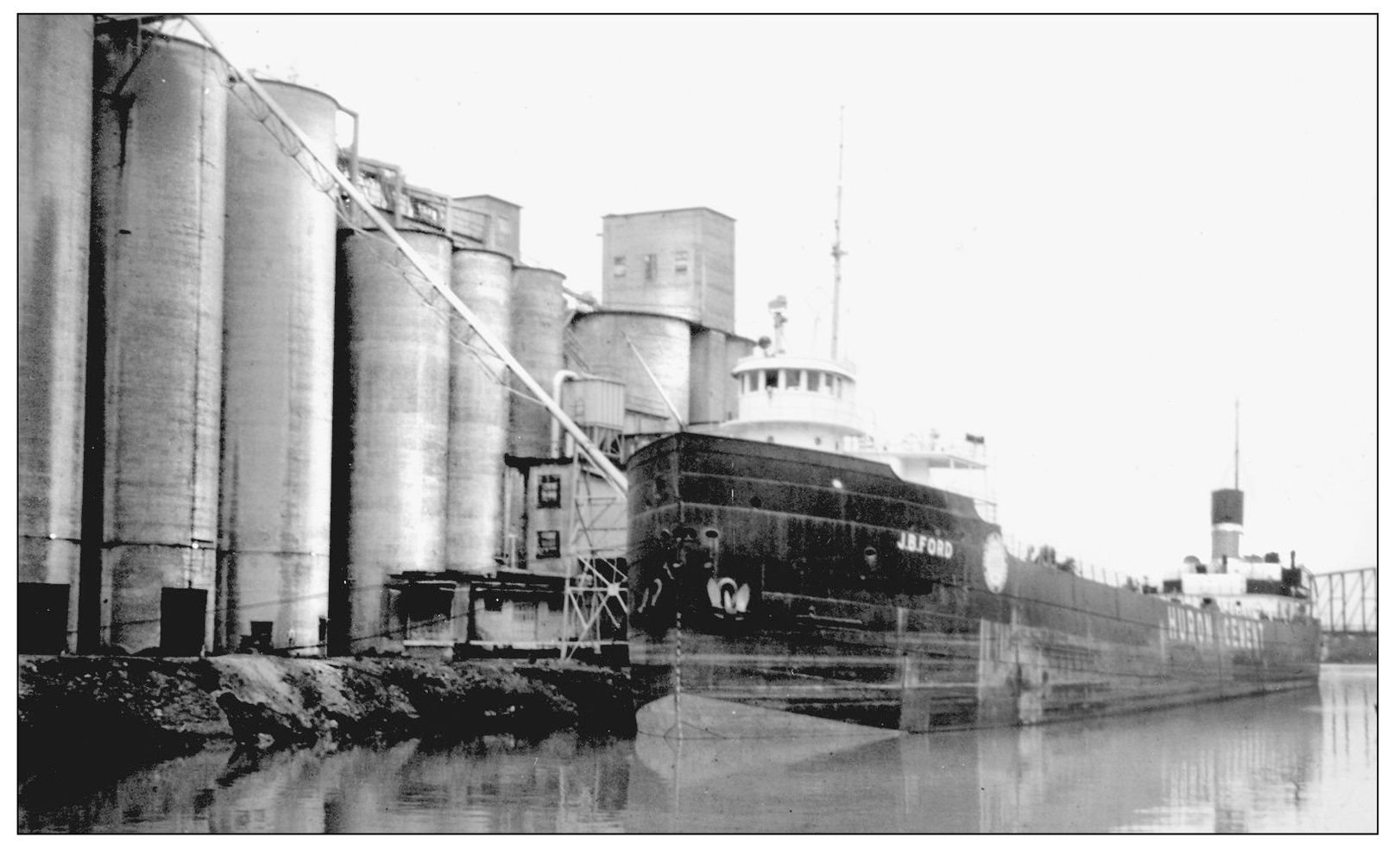
Another Ford, this time it is the J. B. Ford, which began its career in 1904 as the Edwin F. Holmes. When other ships of its size (420 feet long) and vintage began to be scrapped, the Ford found a comfortable niche in the cement trade where boats did not need to be large, new, or particularly fast. (Photograph by W. W. Vance; the Robert Vance Collection.)
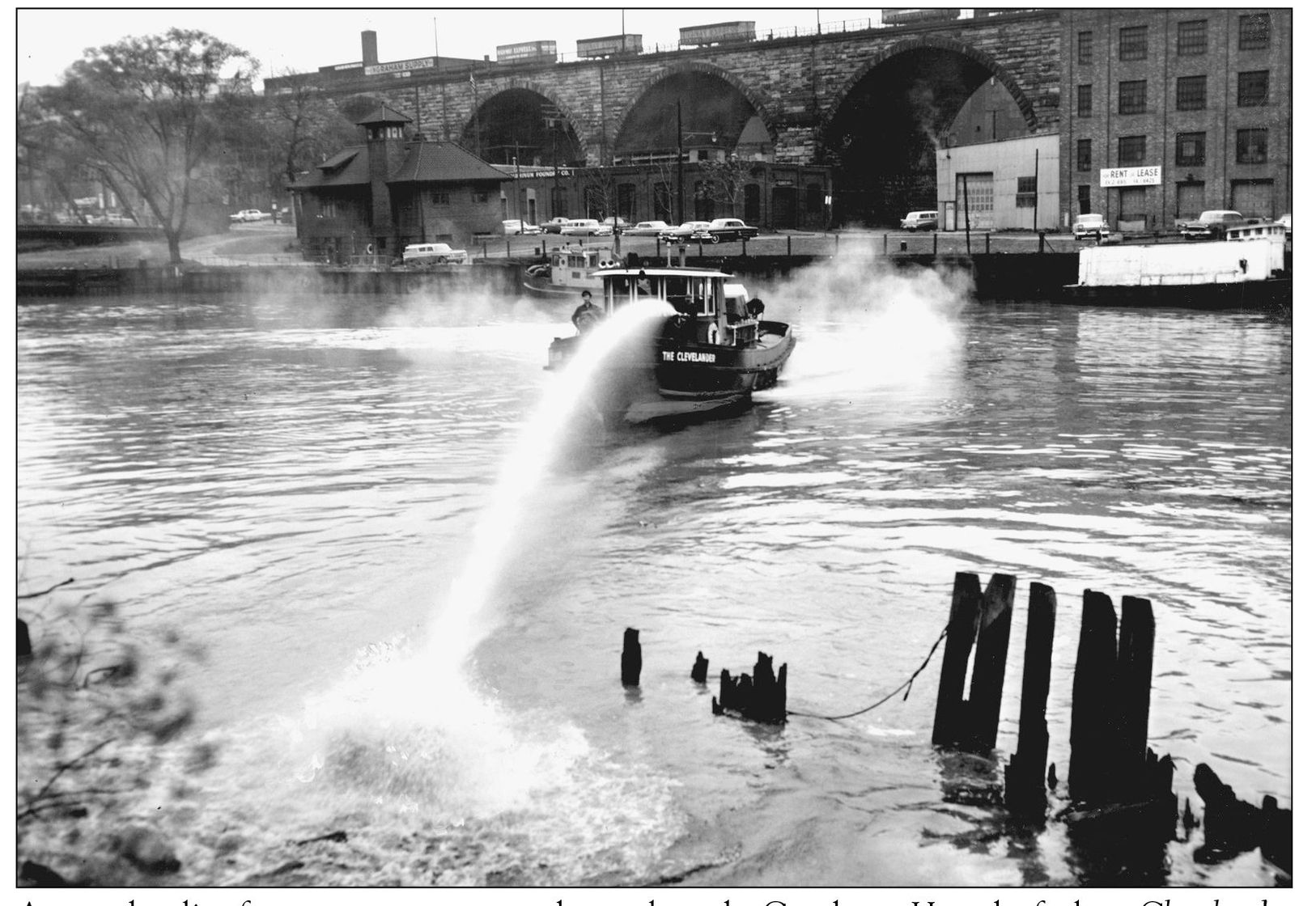
As noted earlier, fire was an ever-present threat along the Cuyahoga. Here the fireboat Clevelander attempts to prevent an oil blaze by breaking up a slick near the Superior Viaduct. (Cleveland Press Archives—CSU Library Special Collections.)
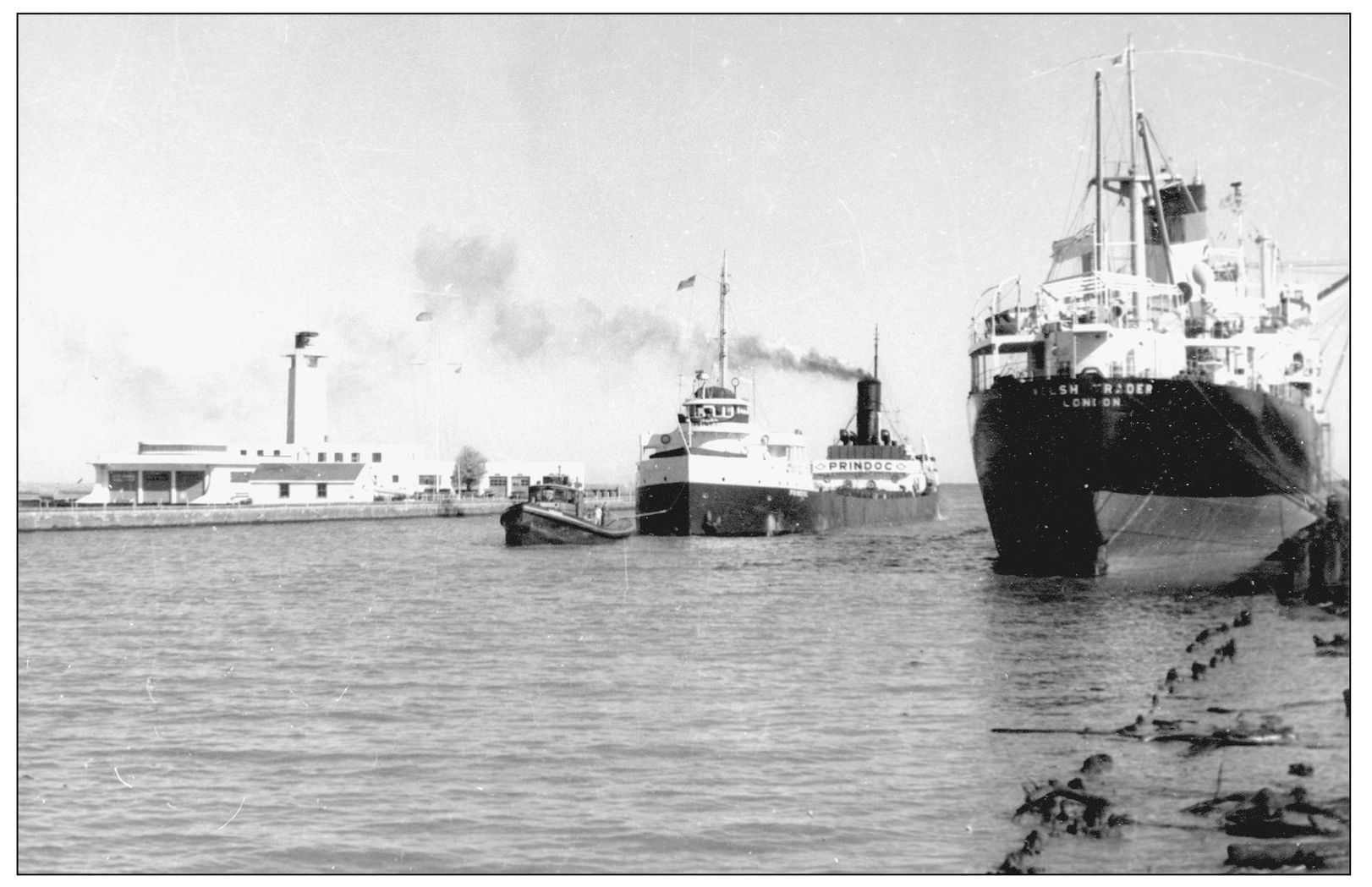
The early 1960s would see an increase in the number of ocean-going foreign vessels that visited Cleveland via the St. Lawrence Seaway. Among them was the Welsh Trader, seen in this image near the entrance to the Cuyahoga. The inbound lake boat is the Prindoc, a 387-foot-long boat that was built in 1902 as the Harold B. Nye. (Photograph by Joseph Ostendorff; the Robert Vance Collection.)
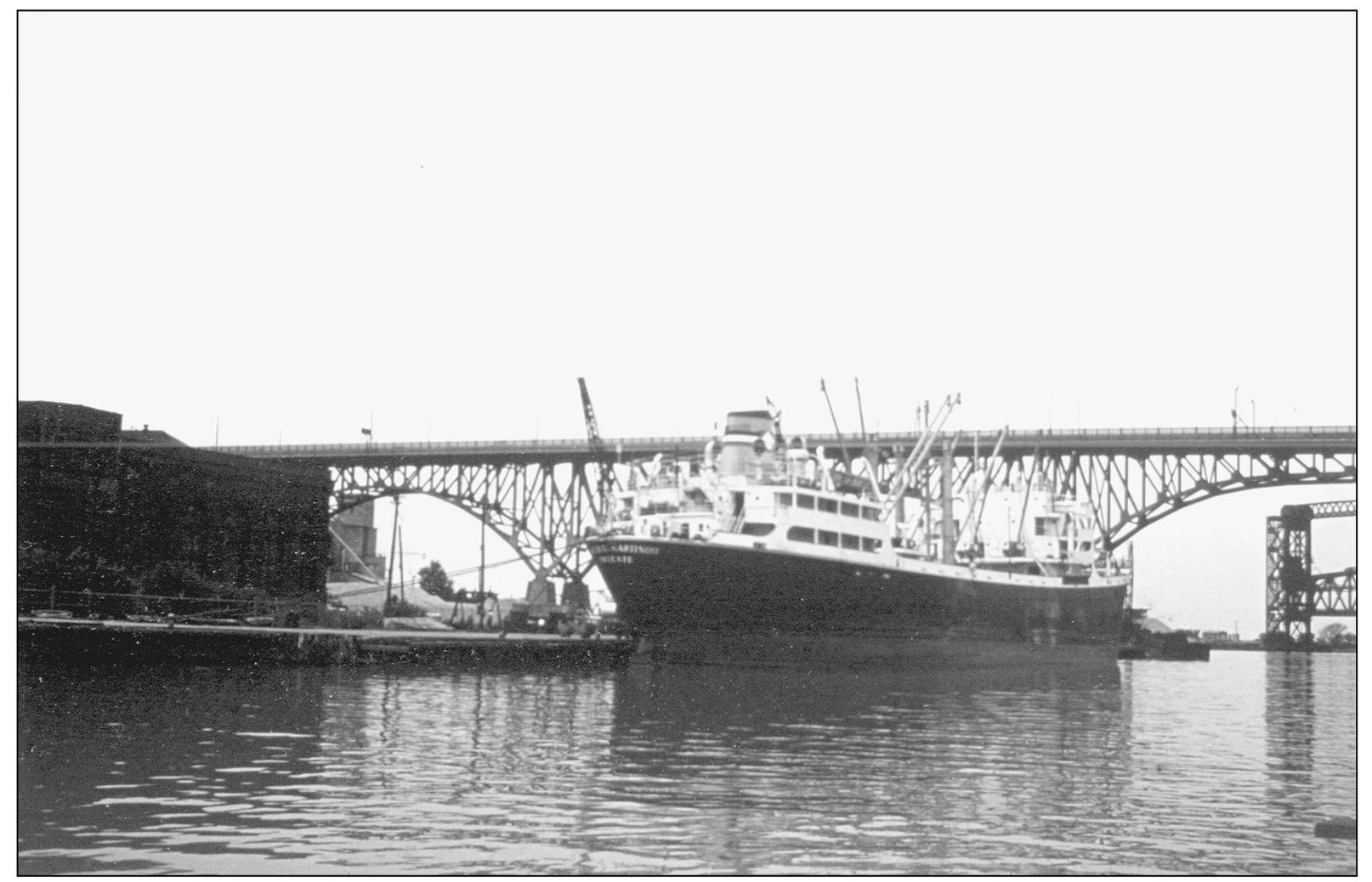
An Italian “salty,” or ocean-going ship, is docked south of the Main Avenue Bridge in 1962. (Photograph by Robert Vance.)
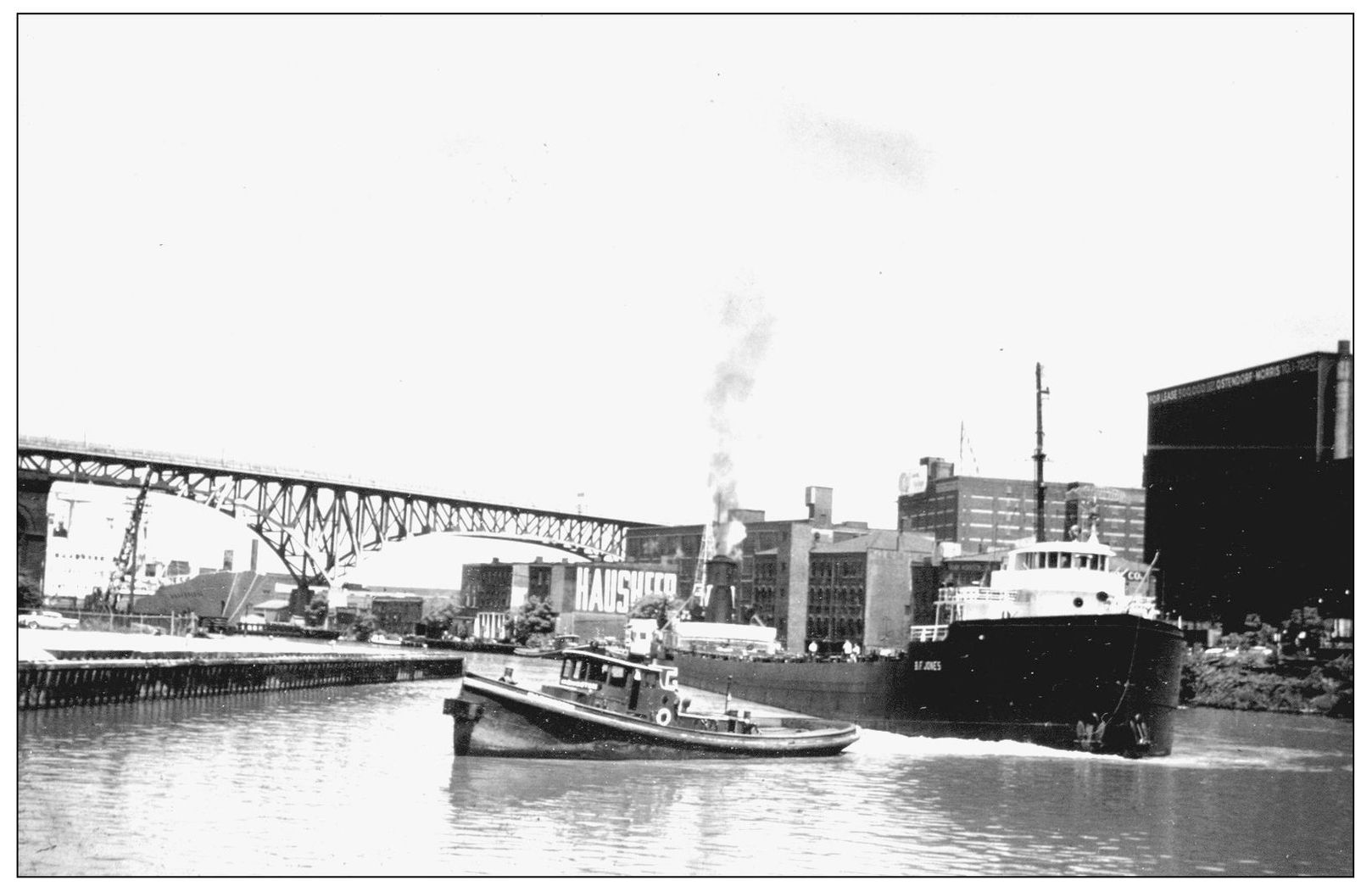
By the time this photograph was taken in 1962, the B. F. Jones (originally known as the General Garretson) had been sailing the lakes for 55 years. The 520-foot-long veteran of the Inland Seas did not survive indefinitely, however, as it was scrapped in Spain in the early 1970s. (Photograph by Robert Vance.)
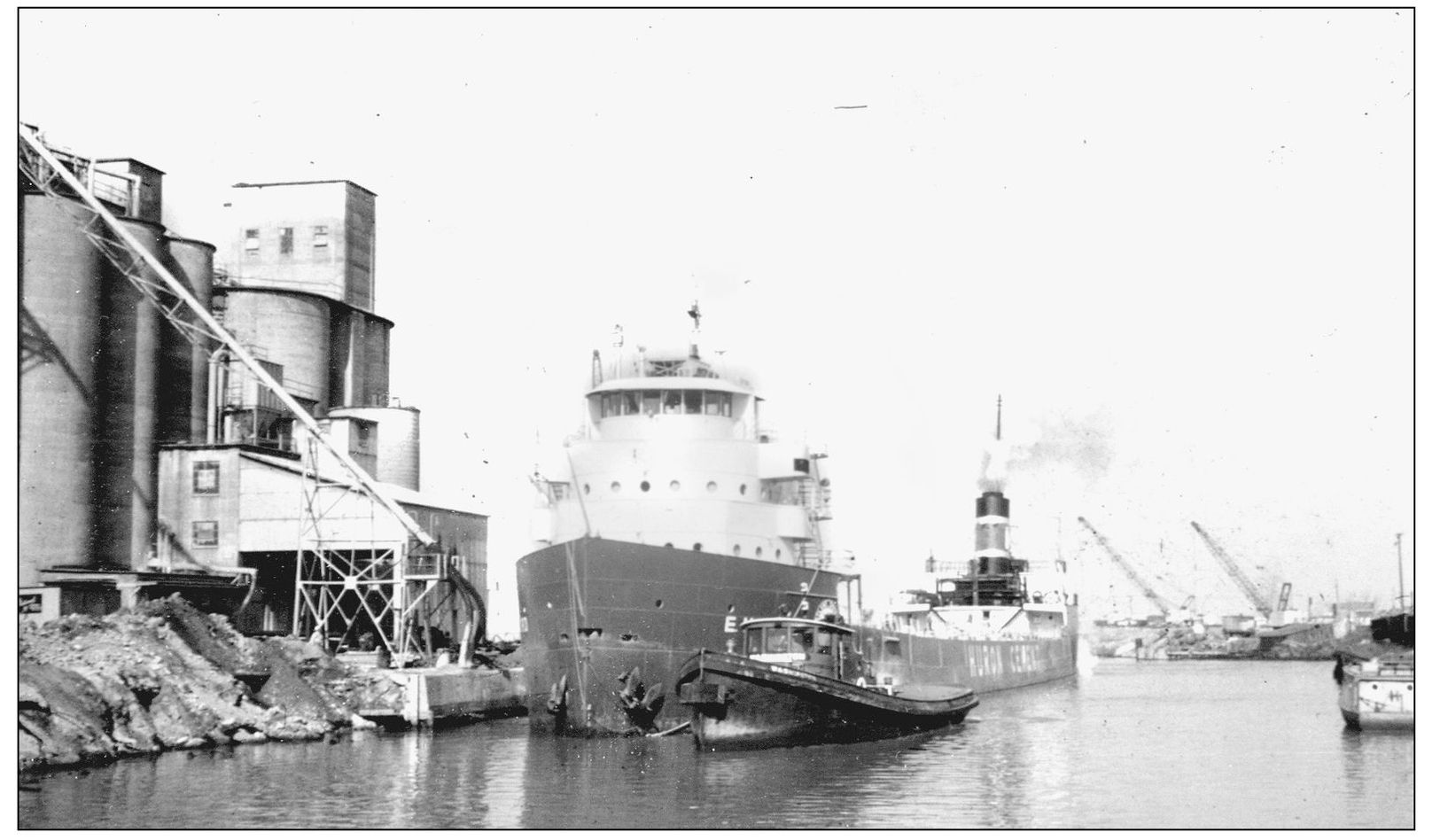
Huron Cement had a penchant for operating ancient boats with Ford in their names. Seen with the Great Lakes Towing Company tug Washington is the E. M. Ford. This particular Ford was built in 1898 and would remain in use into the 1980s. The crews in the background are busy dismantling the old Willow Street Bridge to make way for a new lift-bridge. (Photograph by Robert Vance.)
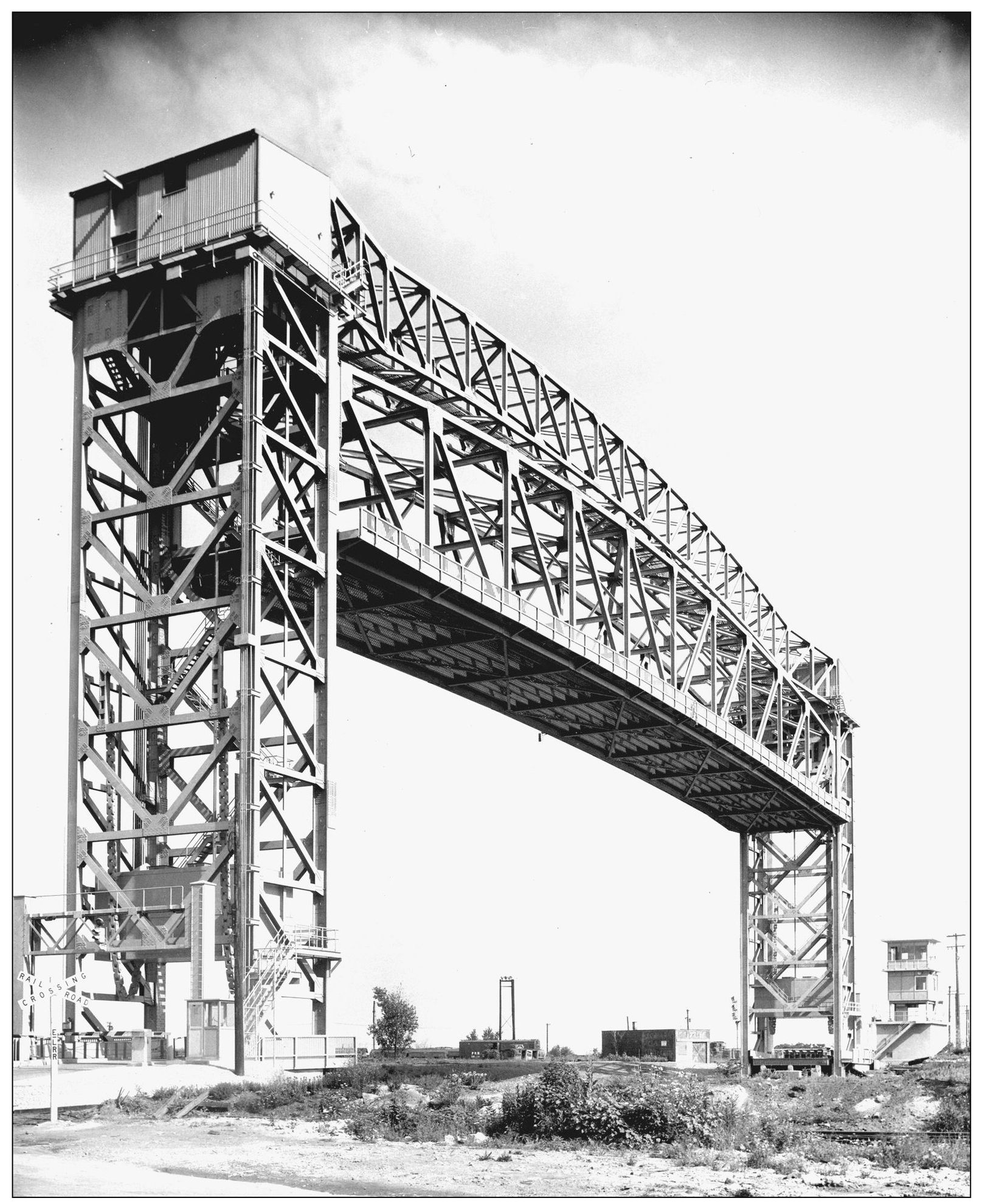
Finished in 1964, the Willow Street lift-bridge replaced a swing-bridge that had previously spanned the old river bed of the Cuyahoga. Spanning over 300 feet, the bridge is raised nearly 100 feet over the river’s surface when vessels need to pass. (Cleveland Press Archives—CSU Library Special Collections.)
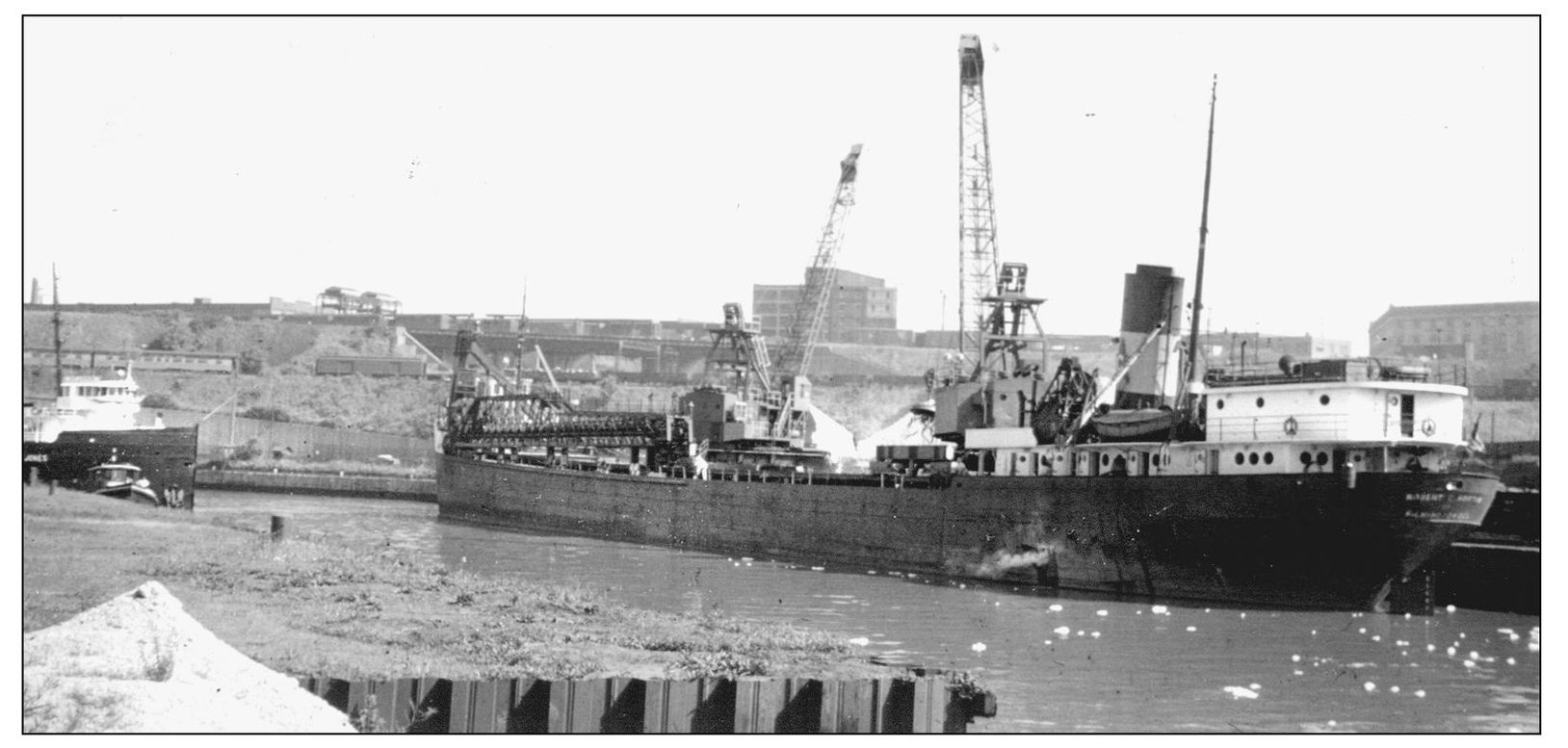
A summer’s day in 1964 finds one of the Great Lakes’ floating oddities moored at the Central Furnace dock. The Robert C. Norton began its life in 1910 as a conventional lake boat named the Leonard B. Miller. The boat was acquired by the Columbia Steamship Company in 1921 and then converted into a hybrid self-unloader/crane ship in 1958. While the Norton could discharge cargoes such as iron ore using conveyor belts, it could also load or unload scrap metal with its electro-magnet equipped cranes. (Photograph by Robert Vance.)
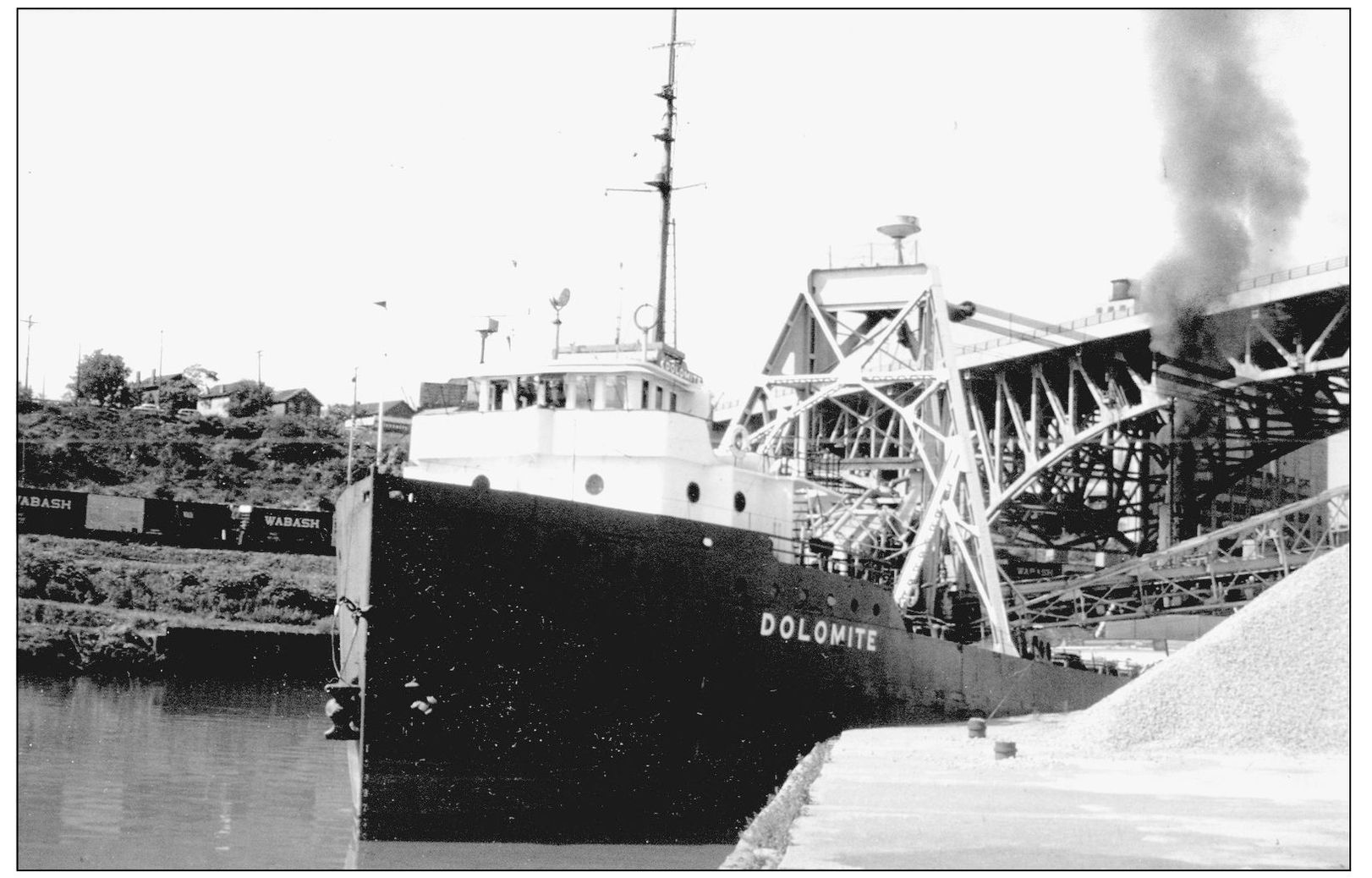
Unloading limestone near West Third Street is the Dolomite. Constructed in 1897 and originally named the Empire City, this boat was best known as the Sumatra from 1929 until 1962. It was as the Sumatra that the ship earned a well-deserved reputation as one of the worst on the lakes. Cramped quarters and suspect hull plates made the Sumatra a nightmare for its crews. The boat was so bad that its owners had difficulties finding men willing to sail aboard it. Very few tears were shed when it was scrapped in 1968. (Photograph by W. W. Vance; the Robert Vance Collection.)
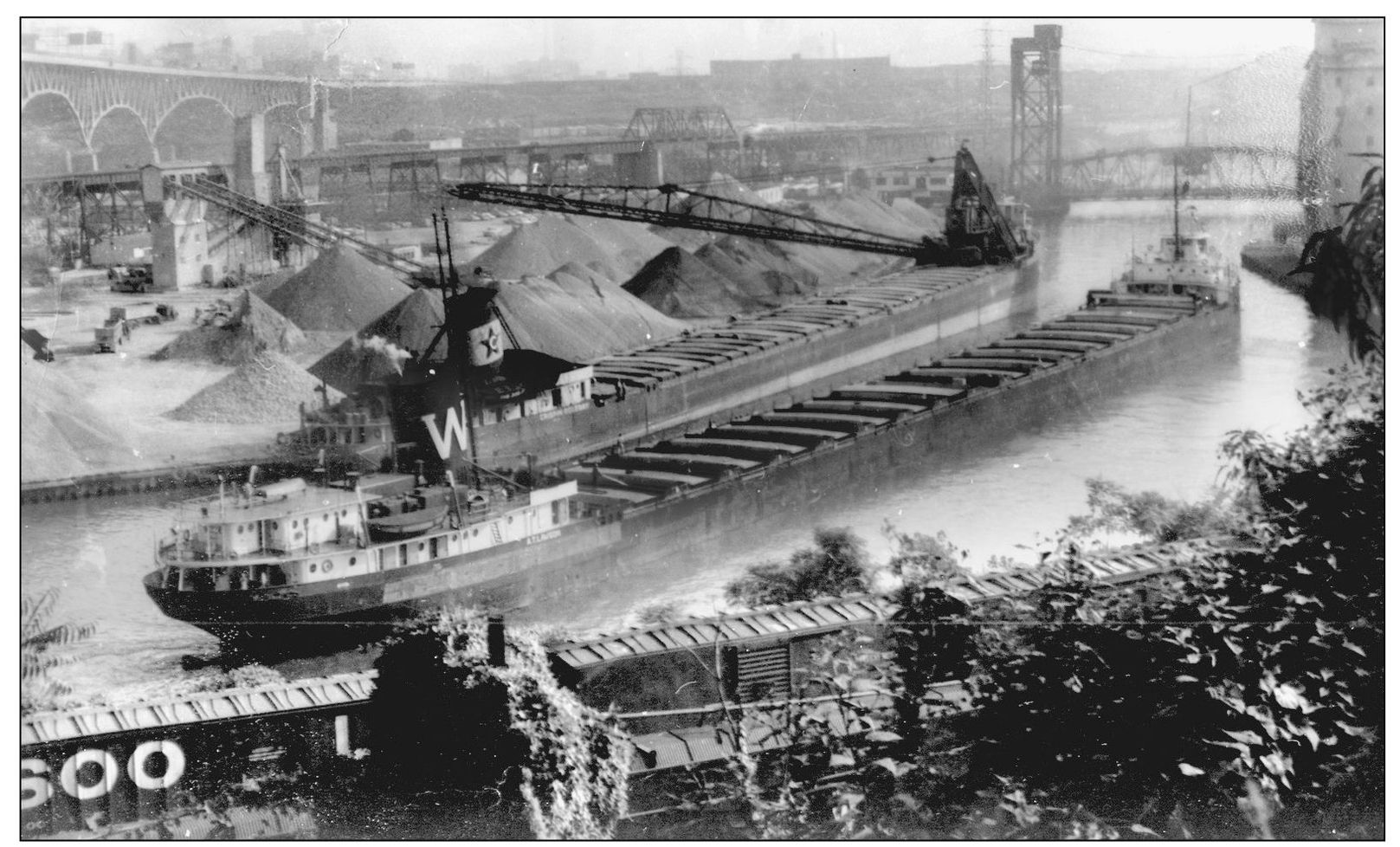
The Wilson Marine Transit Company’s A. T. Lawson waits for the West Third Street lift-bridge to be raised while the Columbia Transportation Company’s Crispin Oglebay unloads. The deck of the West Third Street Bridge was removed in 2005 and was rebuilt and reinstalled in early 2006. (Photograph by Joseph Ostendorff; the Robert Vance Collection.)
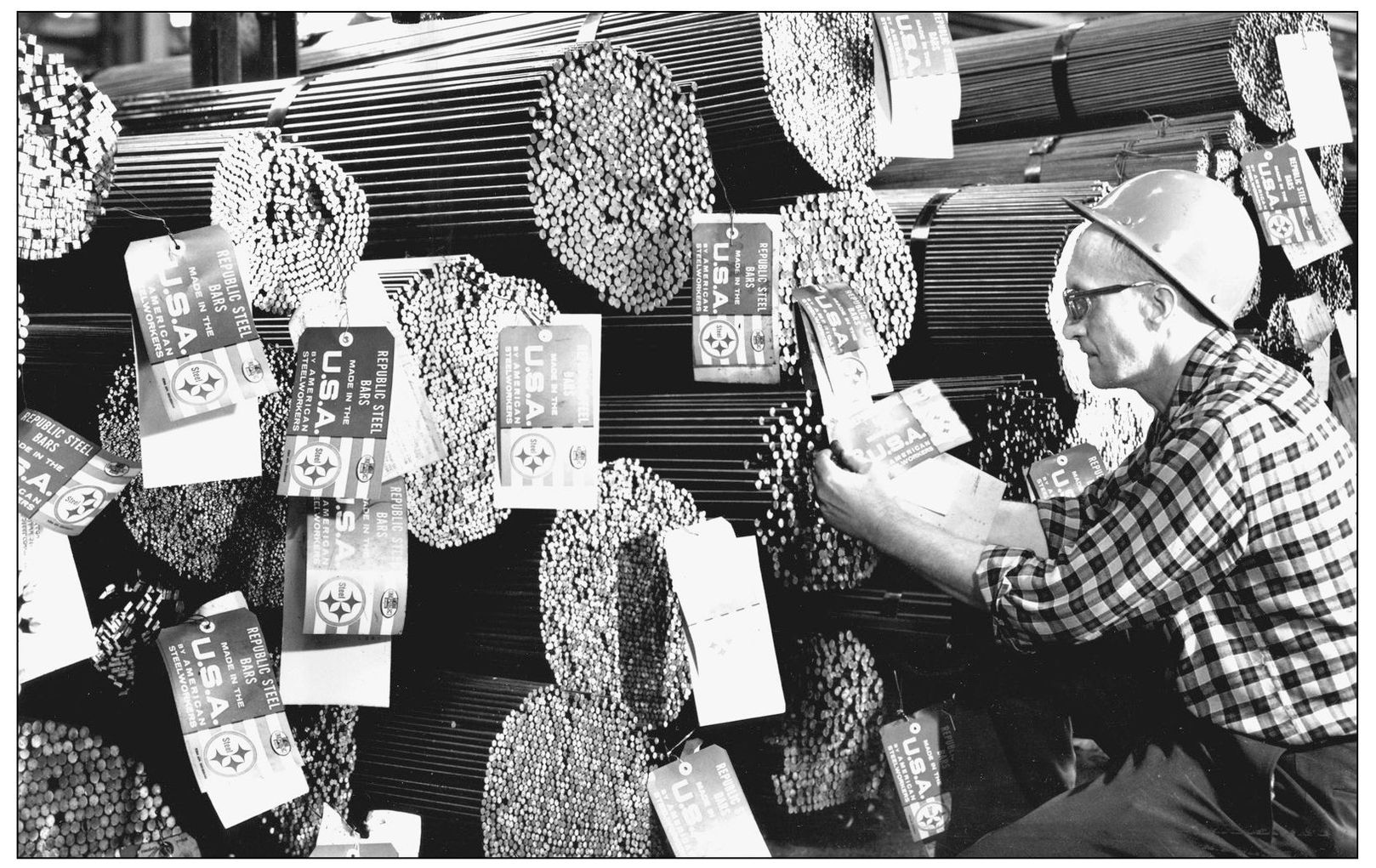
As early as 1964, competition from foreign steel makers was beginning to make an impact in the American steel market. One aspect of the response by domestic steel producers was to emphasize the quality of American-made steel products. As such, a worker from Republic Steel affixes “Made in the USA by American steelworkers” labels to a batch of freshly produced bars. (Cleveland Press Archives—CSU Library Special Collections.)
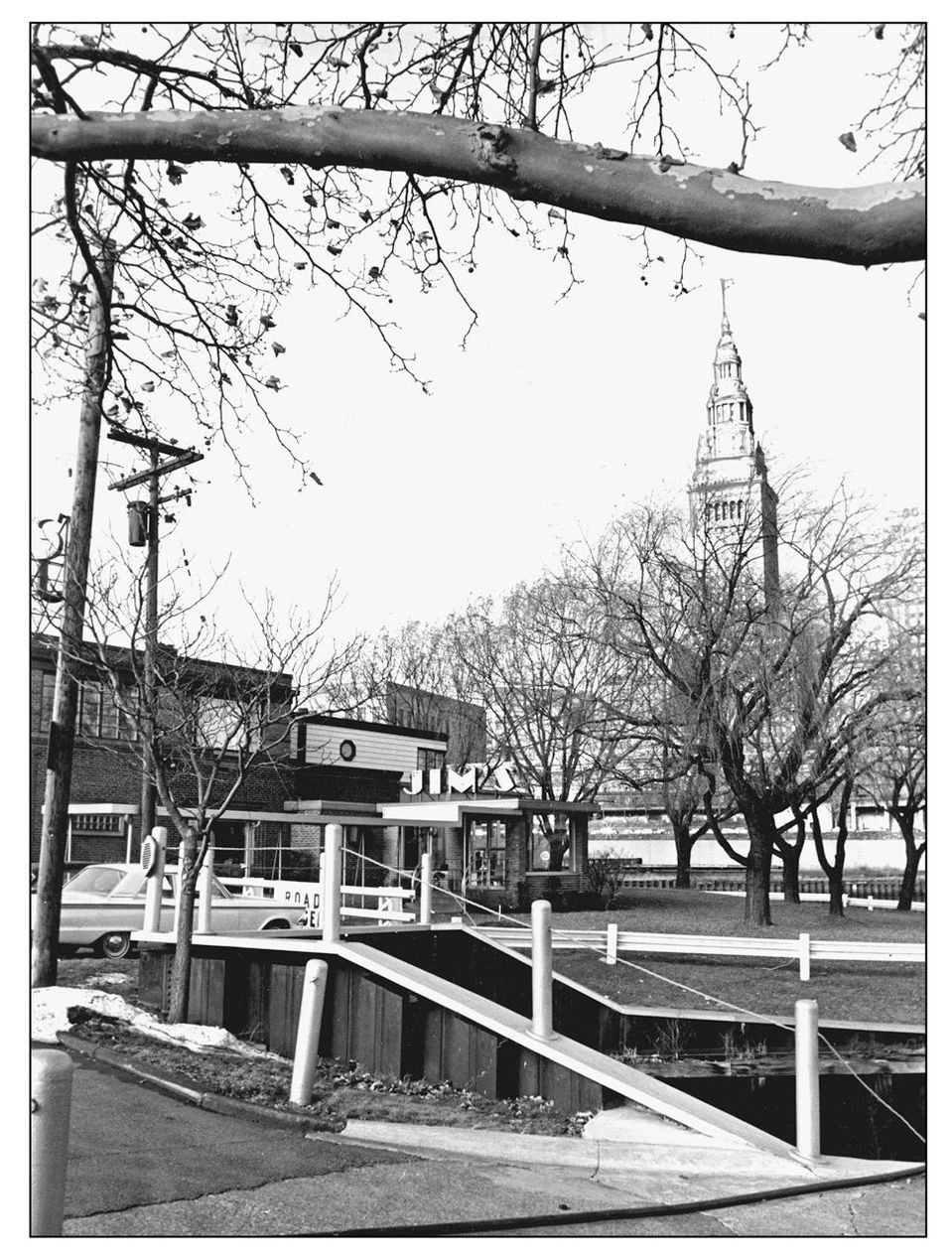
Jim’s Steakhouse is shown here on a winter’s day in 1964. (Photograph by Bill Nehez; Cleveland Press Archives—CSU Library Special Collections.)
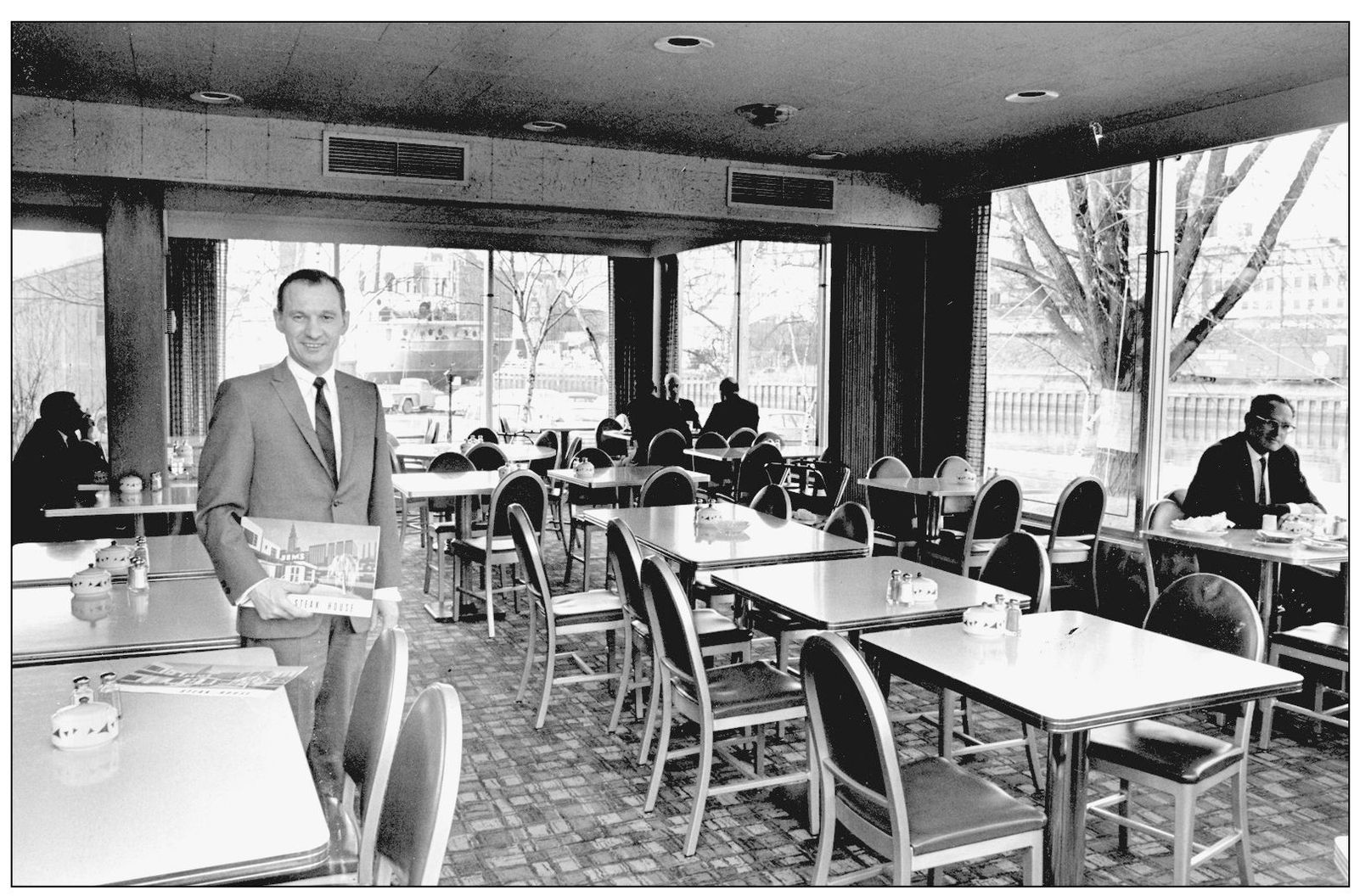
Inside Jim’s Steakhouse, manager Raymond Rockey stands ready to attend to his lunch-time guests. (Photograph by Bill Nehez; Cleveland Press Archives—CSU Library Special Collections.)
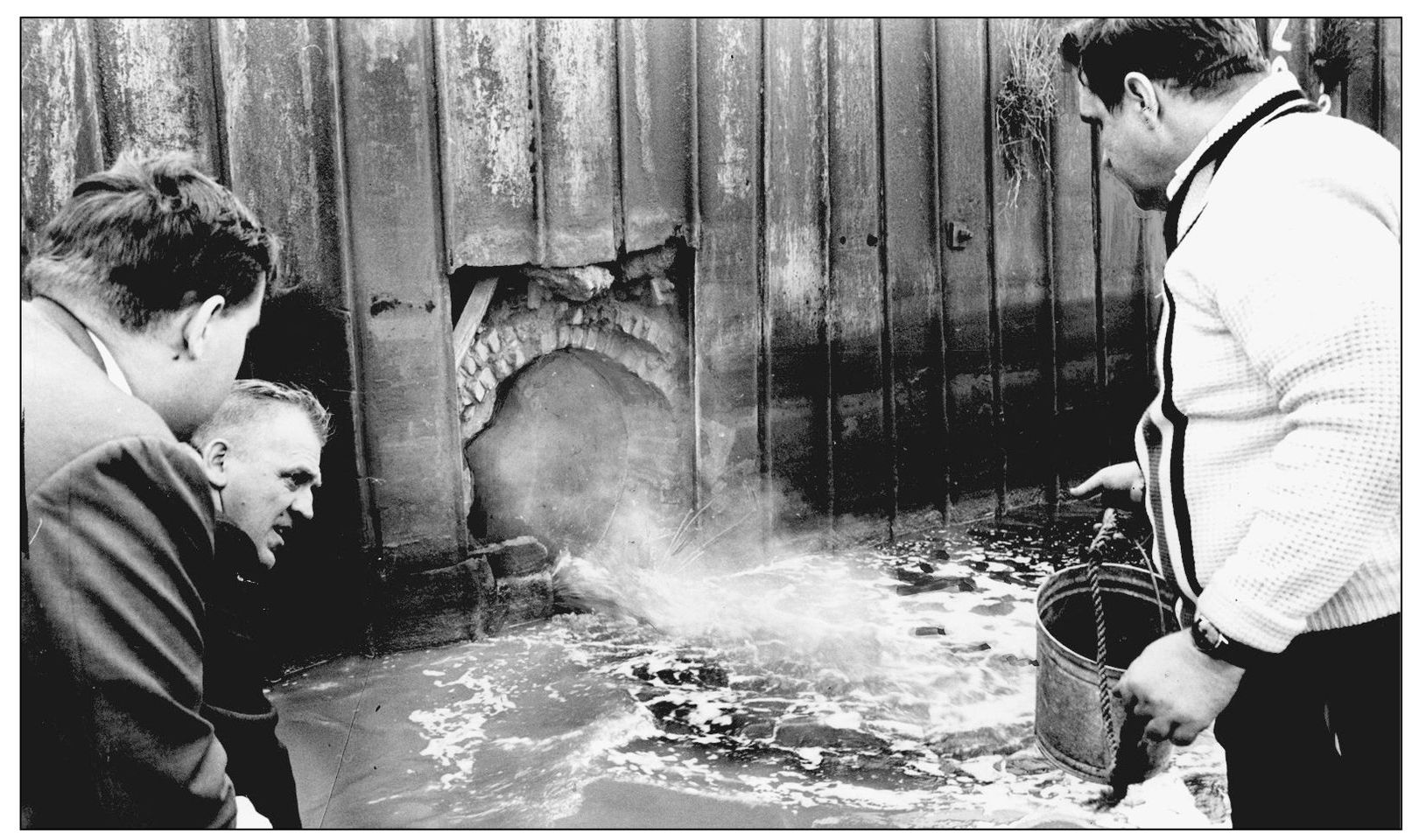
Pollution in the Cuyahoga was a growing concern for Clevelanders in the 1960s. In this photograph, city councilmen Edward F. Katalinas, John Pilch, and Henry Sinkiwicz inspect waste from Jones and Laughlin Steel. (Cleveland Press Archives—CSU Library Special Collections.)
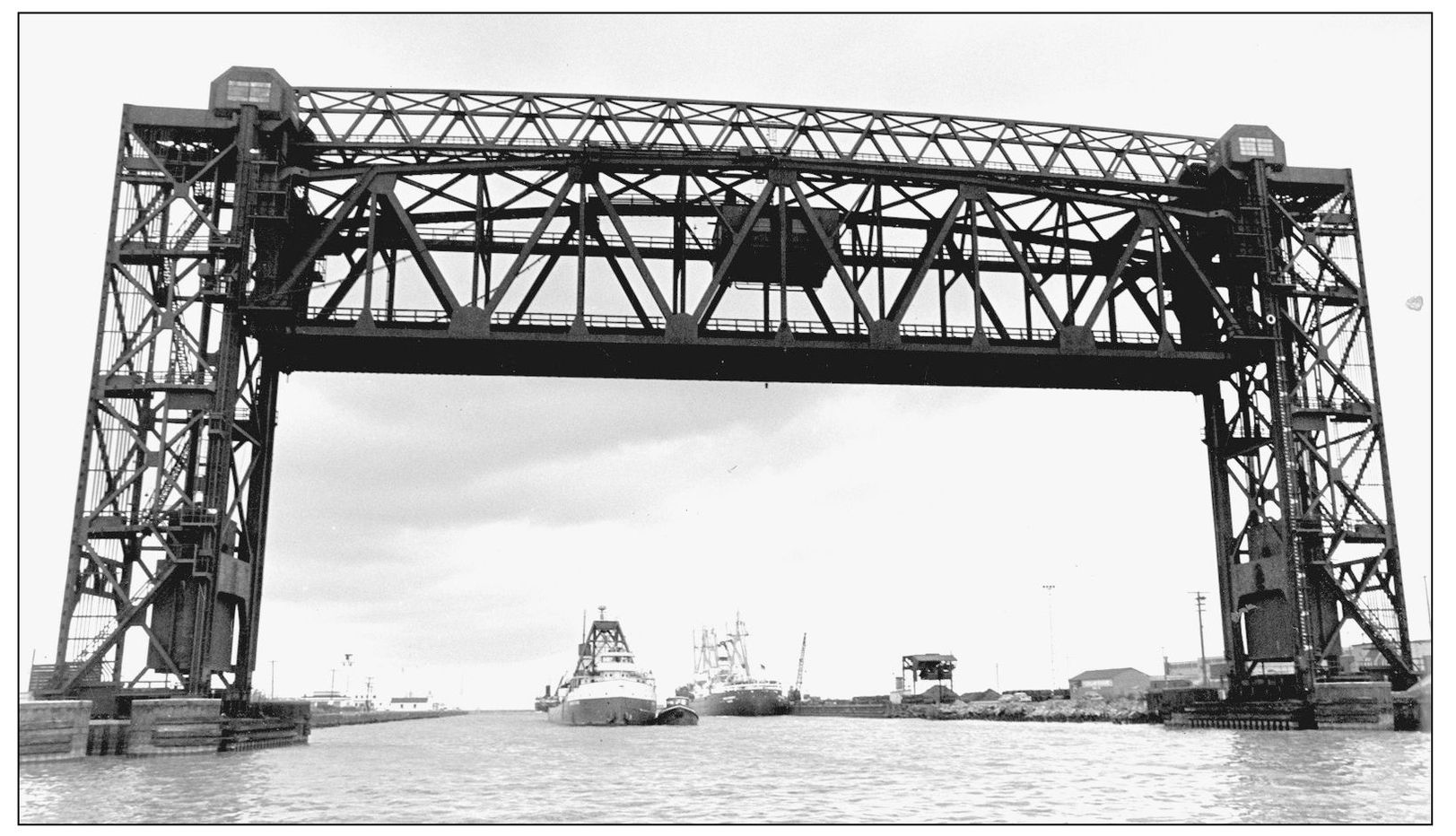
Another bridge to be replaced along the Cuyahoga in the 1960s was the old rail swing-bridge at the mouth of the river. The bridge’s center-mount took up so much space that virtually half of the river was blocked. Plans for a new lift-bridge were drawn up in the late 1940s and the results are seen here. The trestle is raised in this image to allow vessel traffic to pass. (Photograph by Bernie Noble; Cleveland Press Archives—CSU Library Special Collections.)
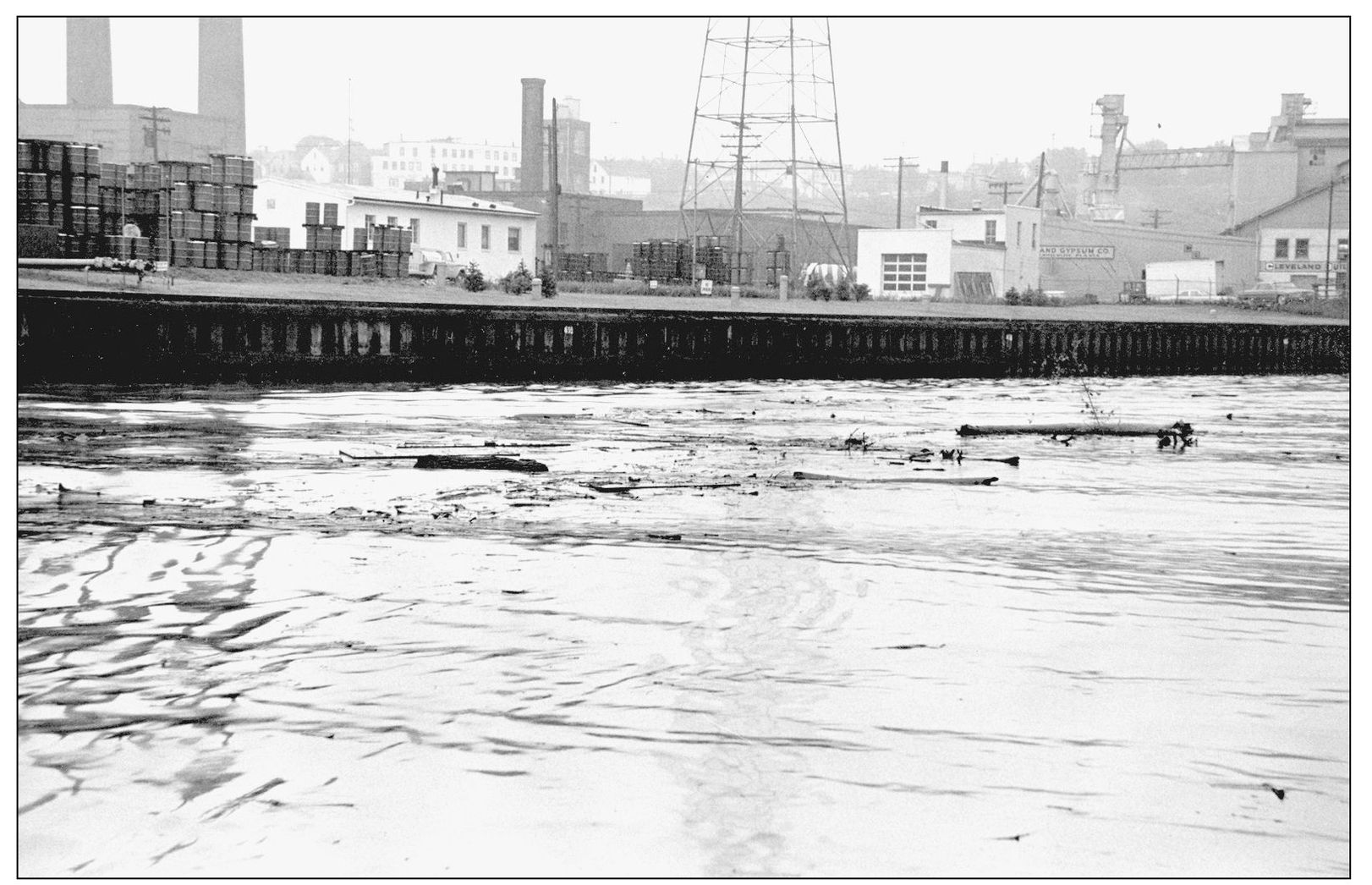
In August 1965, Cleveland played host to a Federal Pollution Conference. This image of waste from a summer storm was captured not long after the conference. (Cleveland Press Archives—CSU Library Special Collections.)
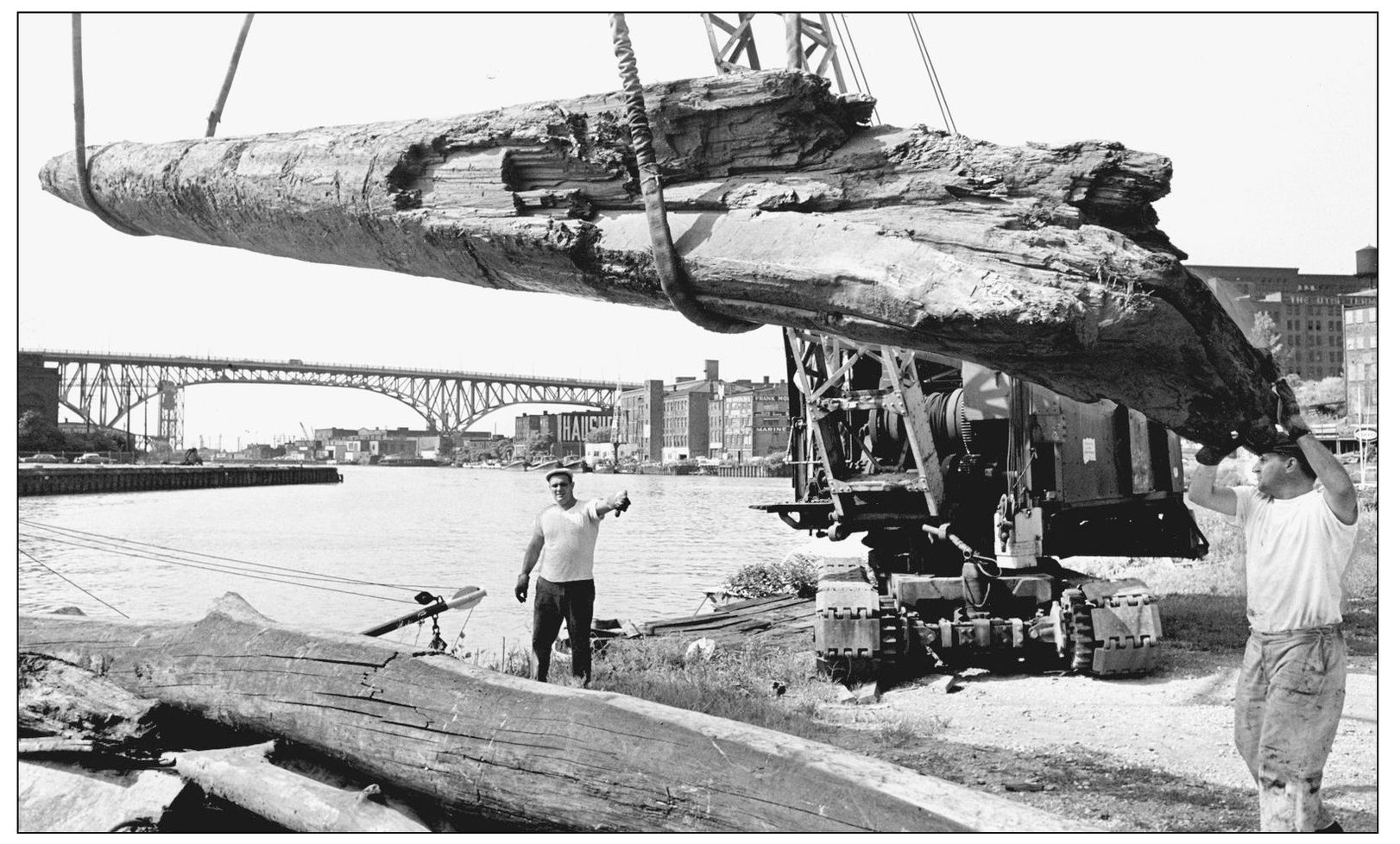
Large logs such as these will float into the Flats either from further up the Cuyahoga itself or from one of its several tributaries. No matter where they come from, however, logs of this size present a hazard to navigation and must be removed. (Cleveland Press Archives—CSU Library Special Collections.)
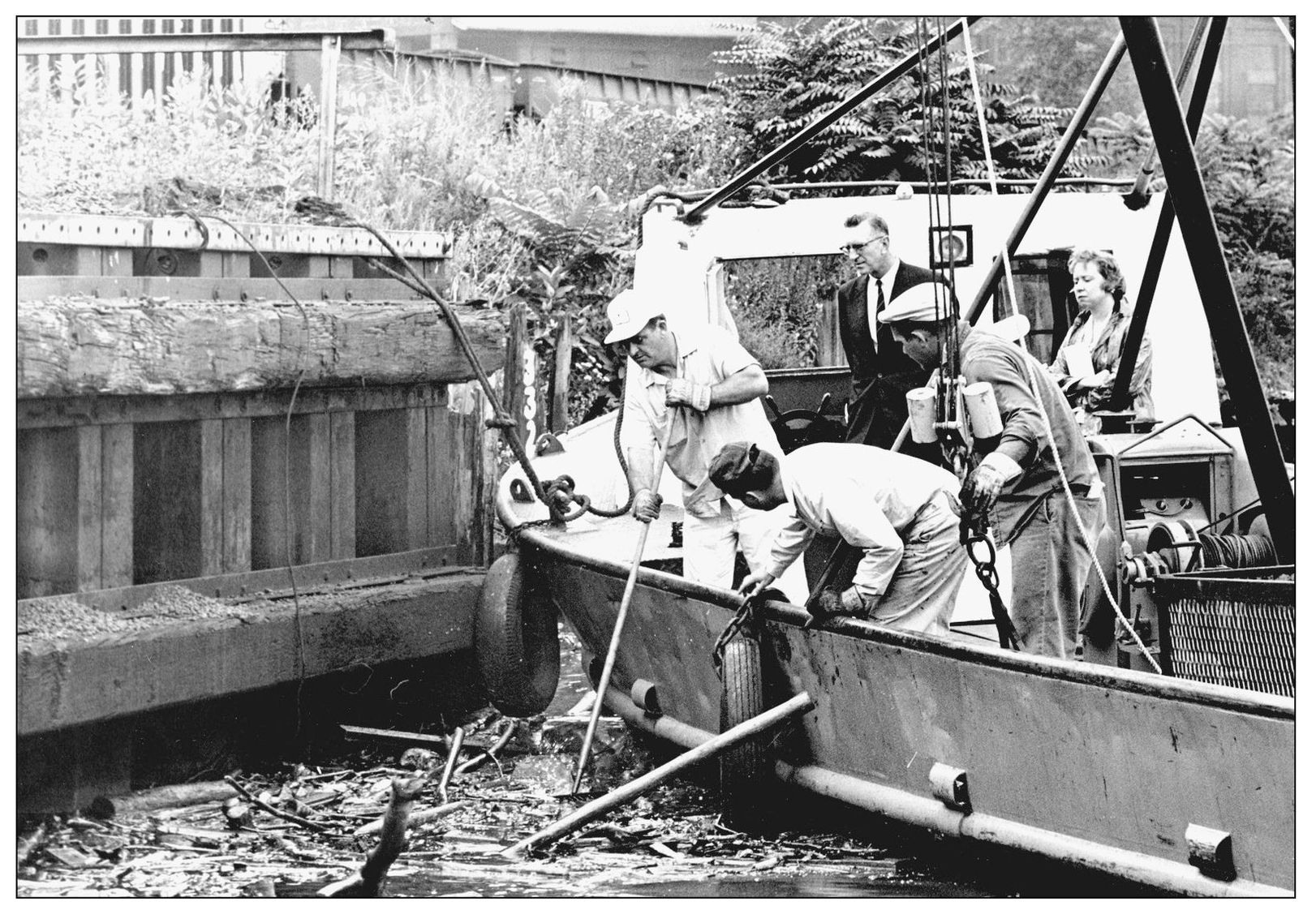
Workers dredge out and inspect a mass of waste matter along the Cuyahoga. (Photograph by Herman Seid; Cleveland Press Archives—CSU Library Special Collections.)
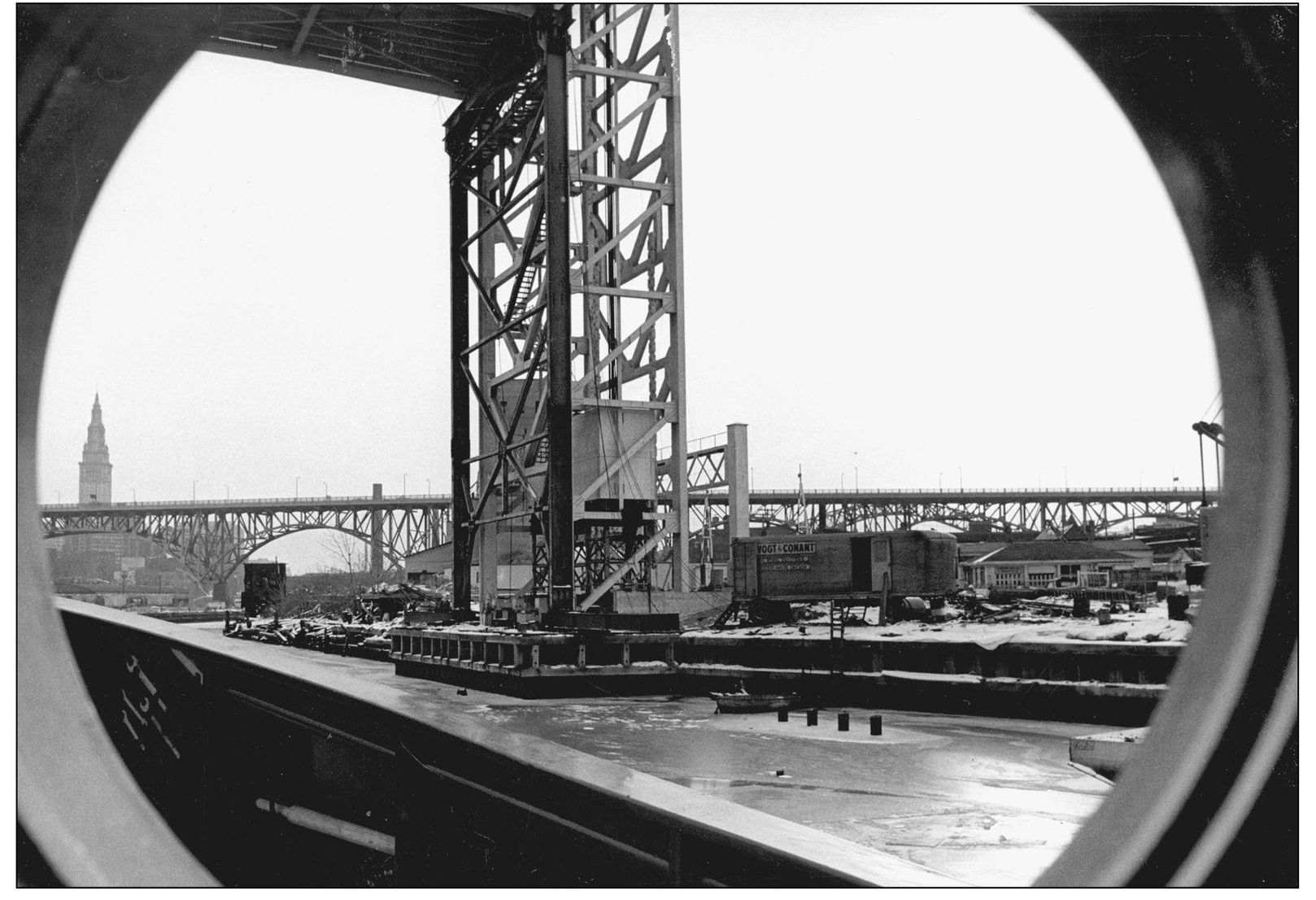
Here is a porthole perspective of an icy Cuyahoga during the winter of 1964–1965. (Photograph by Clayton Knipper; Cleveland Press Archives—CSU Library Special Collections.)
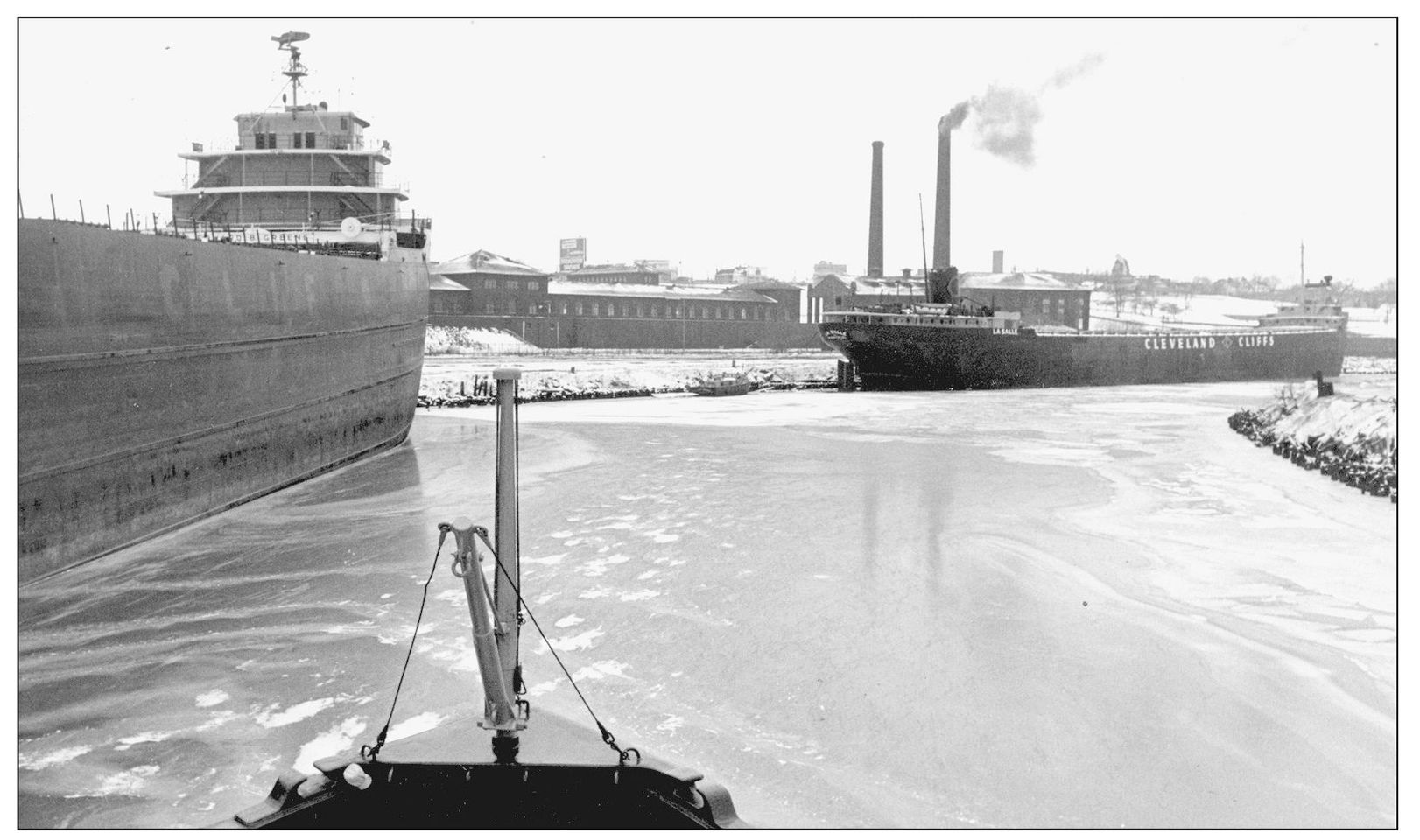
Virtually encased in ice, the Cleveland-Cliffs’ steamers Edward B. Greene and La Salle sit out the winter near one of Cleveland’s water treatment facilities along the old bed of the Cuyahoga. The Greene was constructed in 1952 to be the new flagship for the Cleveland-Cliffs’ fleet, a position it held for nine years. The boat eventually ended up with the Interlake Steamship Company in the late 1980s and it still sails today as the Kaye E. Barker. (Cleveland Press Archives—CSU Library Special Collections.)
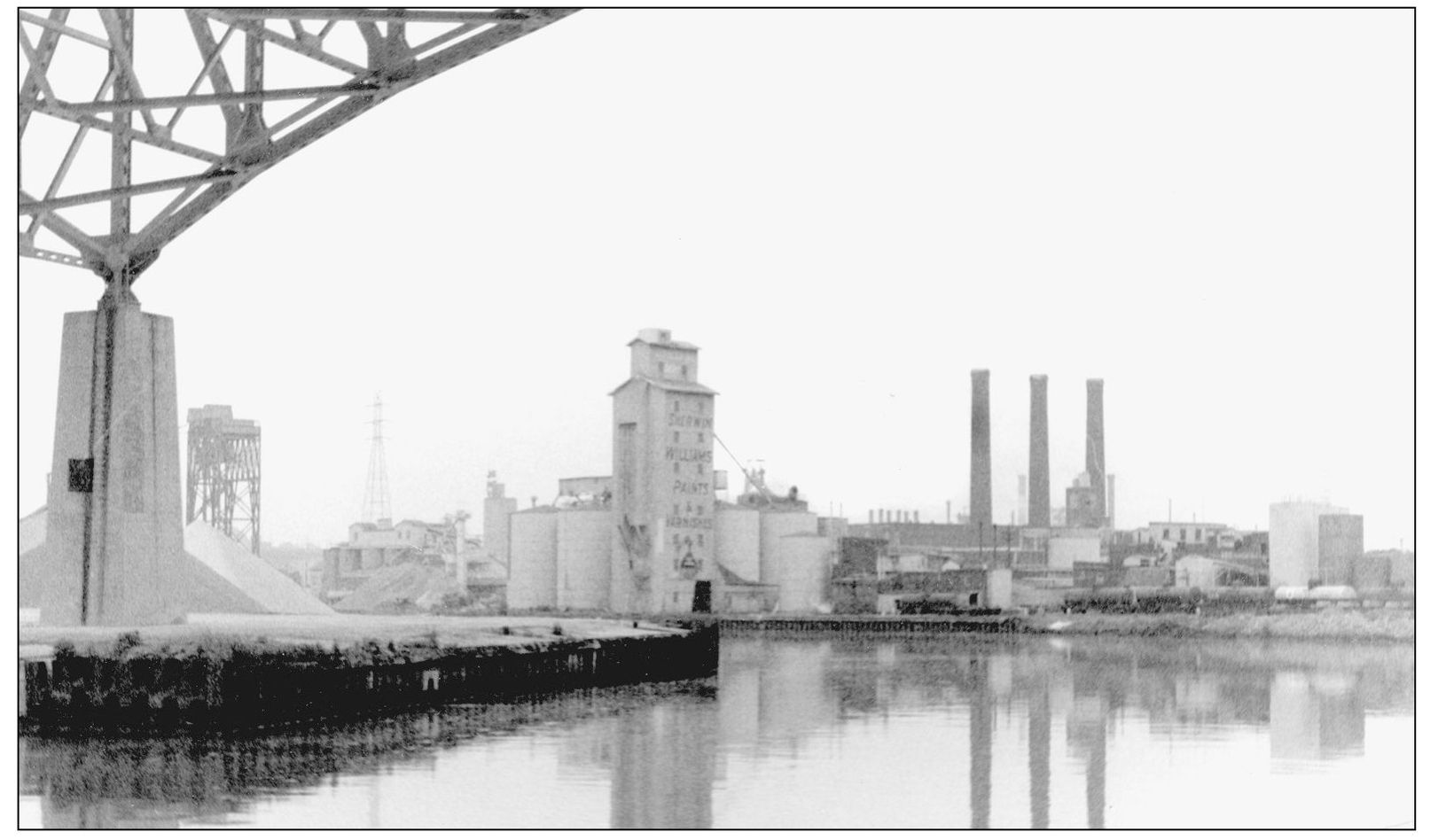
A river’s eye view of the Sherwin-Williams Company linseed oil plant. The plant was 64 years old by the time this image was taken in 1966. Although this plant and several other aspects of Sherwin-William’s works have since left the Flats, the company still has a research facility along Canal Road near Carter Street. (Cleveland Press Archives—CSU Library Special Collections.)
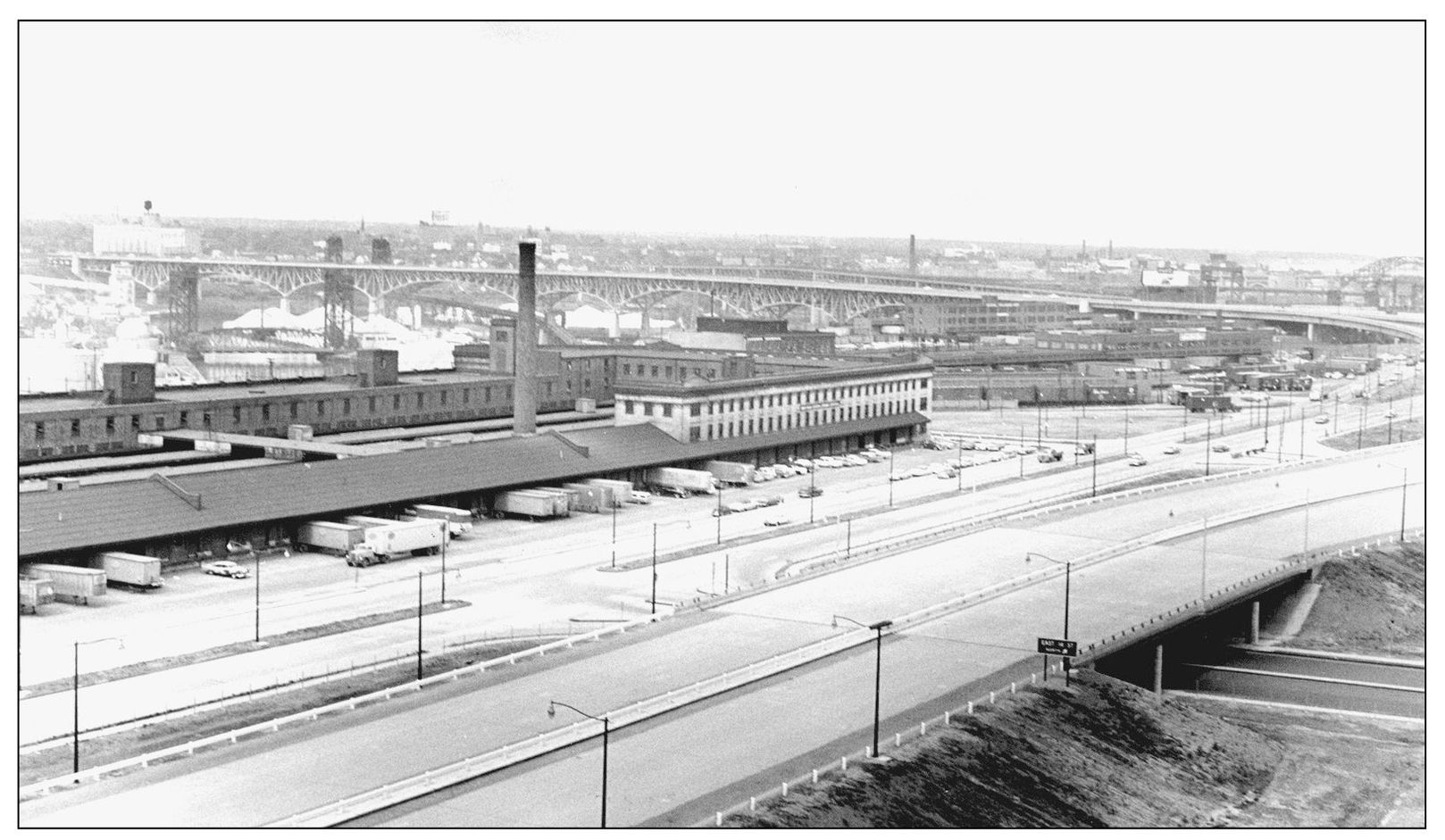
This is a 1966 view of the New York Central Railroad’s freight facility looking southwest from East 22nd Street and Woodland Avenue. Rail historians will note that the New York Central would soon no longer exist as it would merge with the Pennsylvania Railroad to form PennCentral by the year’s end. (Cleveland Press Archives—CSU Library Special Collections.)
Dumping had always been a problem in the Flats, especially underneath the region’s various bridges. An observer watches as the David P. Thompson navigates past a trash pile beneath the Detroit-Superior Bridge in the summer of 1966. (Photograph by Paul Teppley; Cleveland Press Archives—CSU Library Special Collections.)
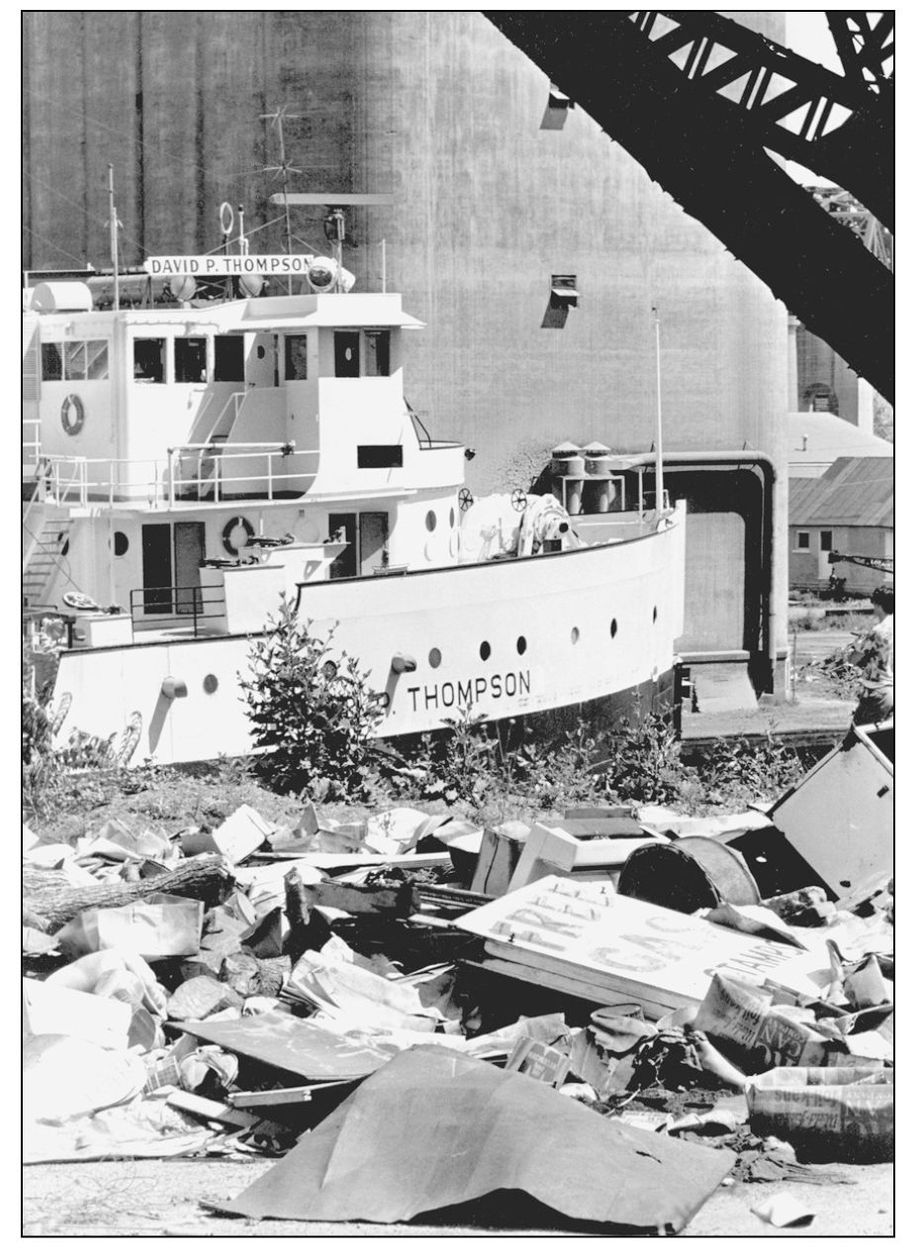
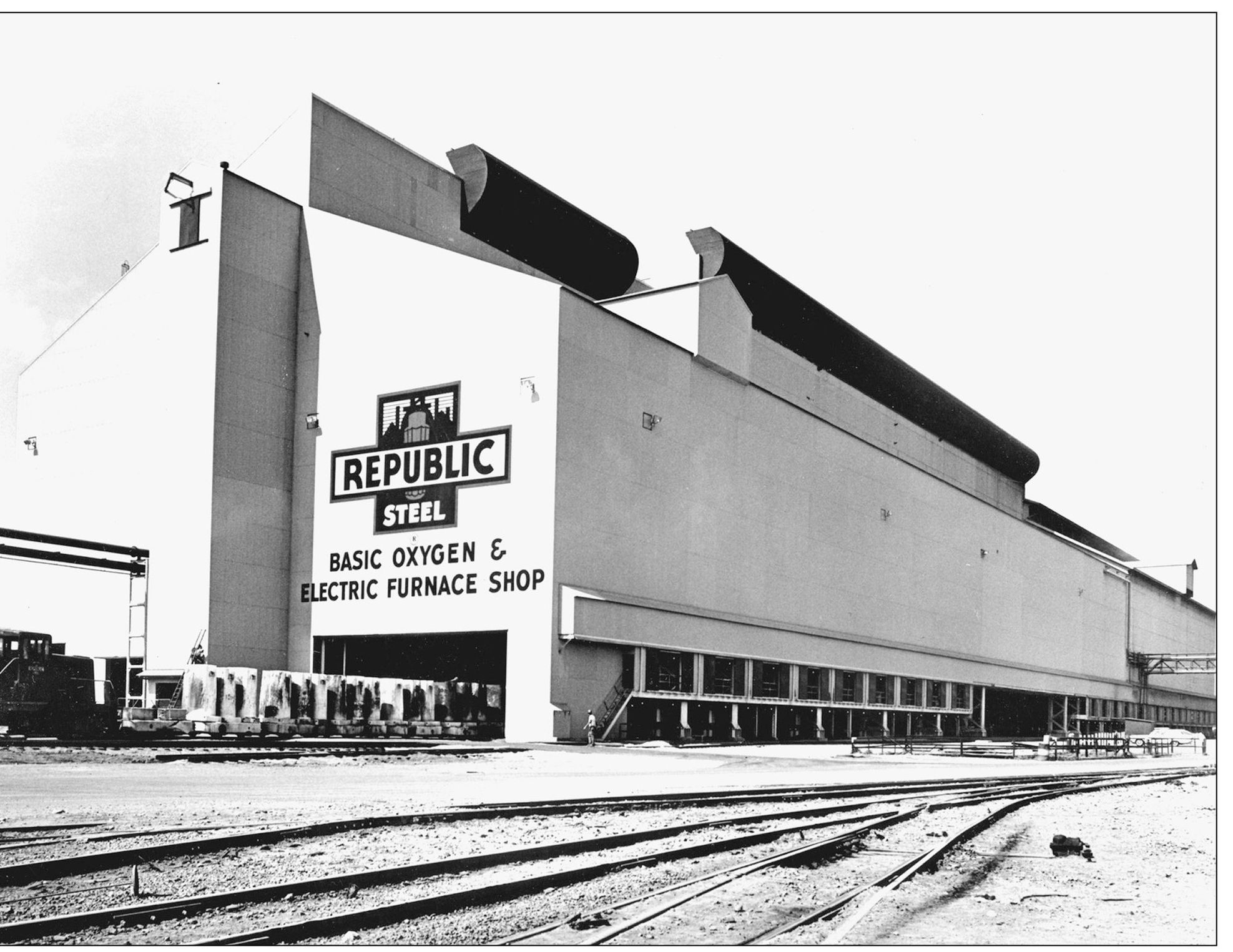
Republic Steel had many enormous buildings such as this located in the Flats. For a sense of scale, note the worker standing near the center of the image. (Cleveland Press Archives—CSU Library Special Collections.)
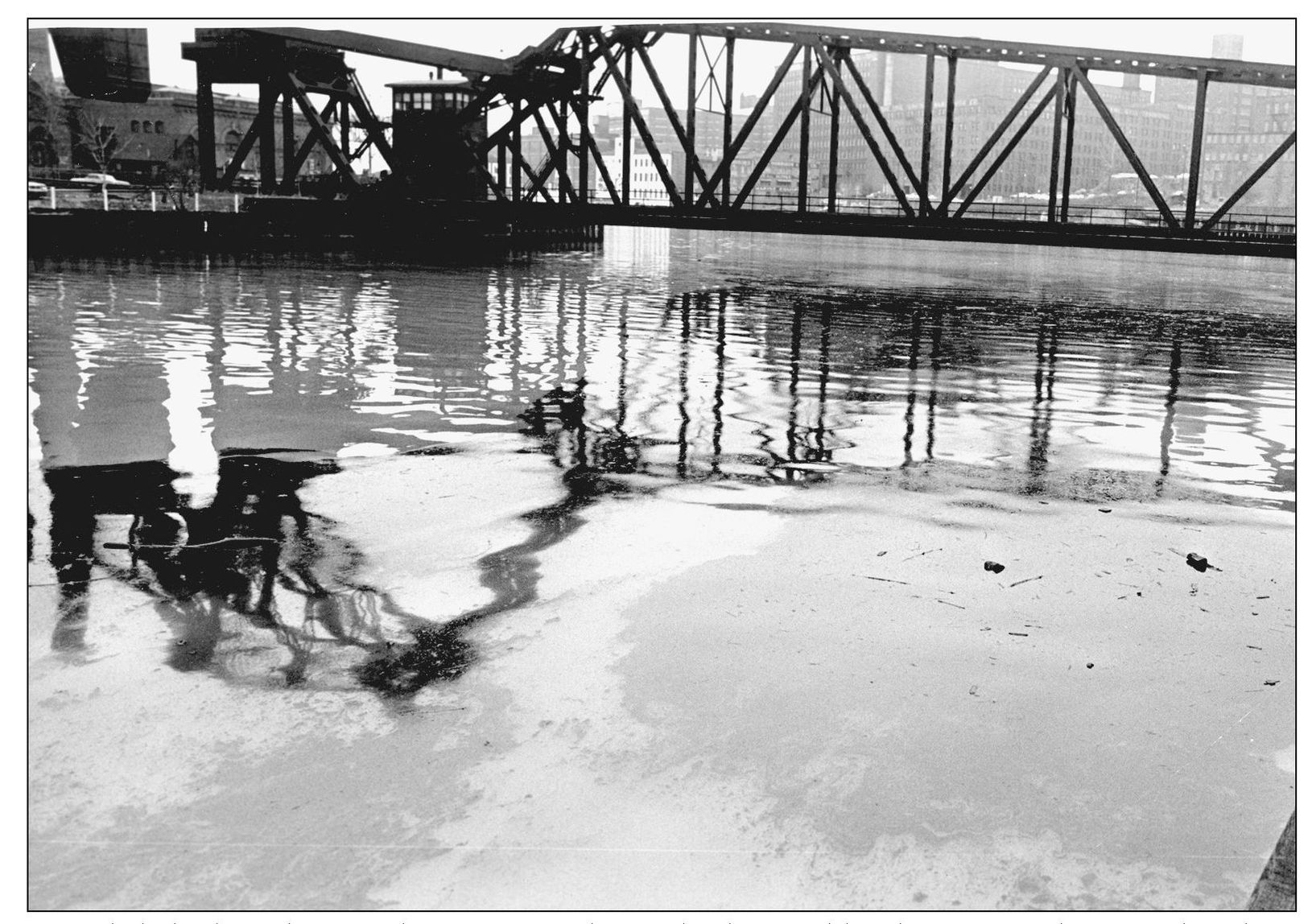
An oil slick clogs the Cuyahoga just south of a bridge used by the New York Central and St. Louis Railroads. This large jackknife bridge is 255 feet long and has been kept in its raised position for over 35 years. (Photograph by Bill Nehez; Cleveland Press Archives—CSU Library Special Collections.)

Another man’s trash . . . While many people would see only garbage, these students from the Cooper Art School see a medium for creating a sculpture. (Photograph by Tom Prusha; Cleveland Press Archives—CSU Library Special Collections.)
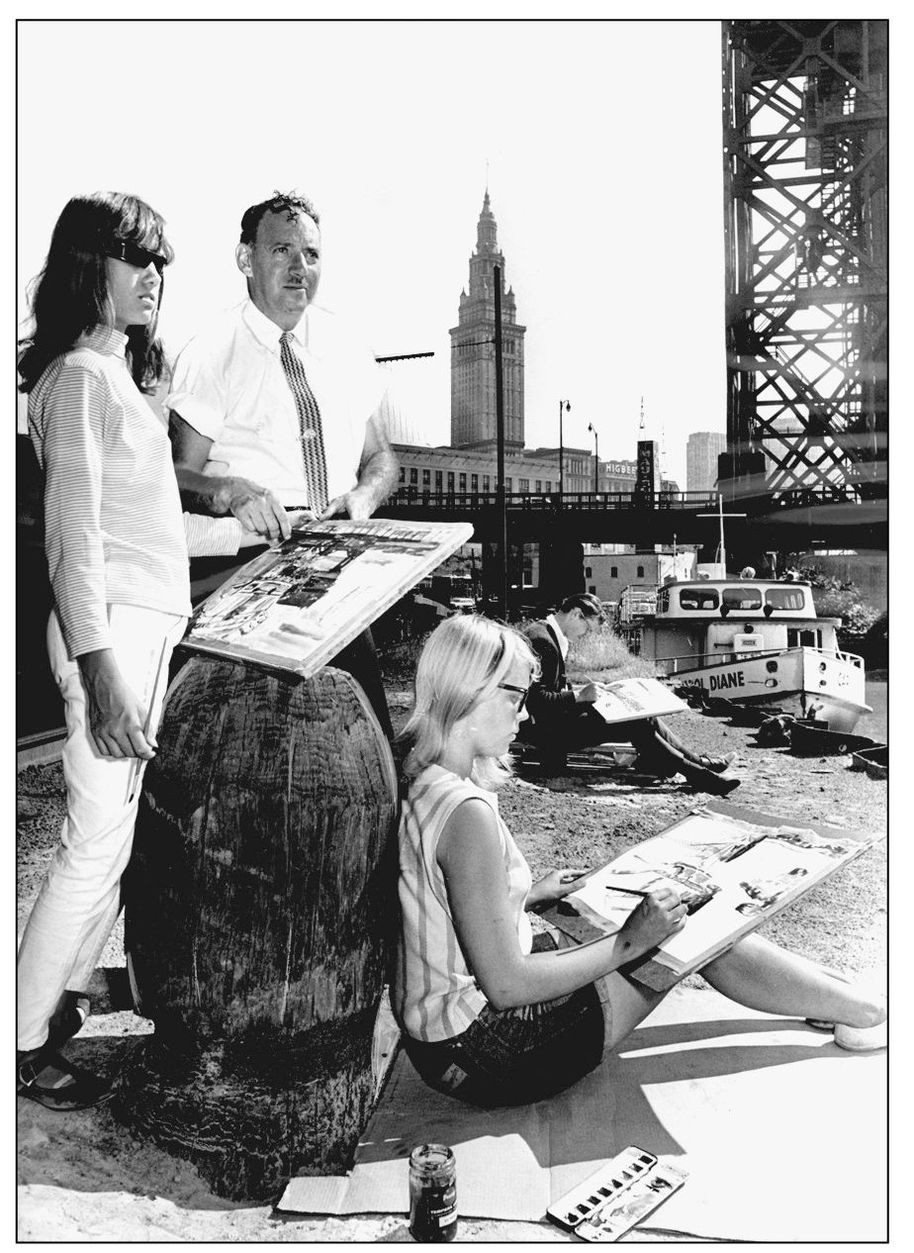
Using a more traditional medium of pencil and paper, Cleveland art teacher Moses Pearl and his students find inspiration near the Carter Street Bridge. (Cleveland Press Archives—CSU Library Special Collections.)
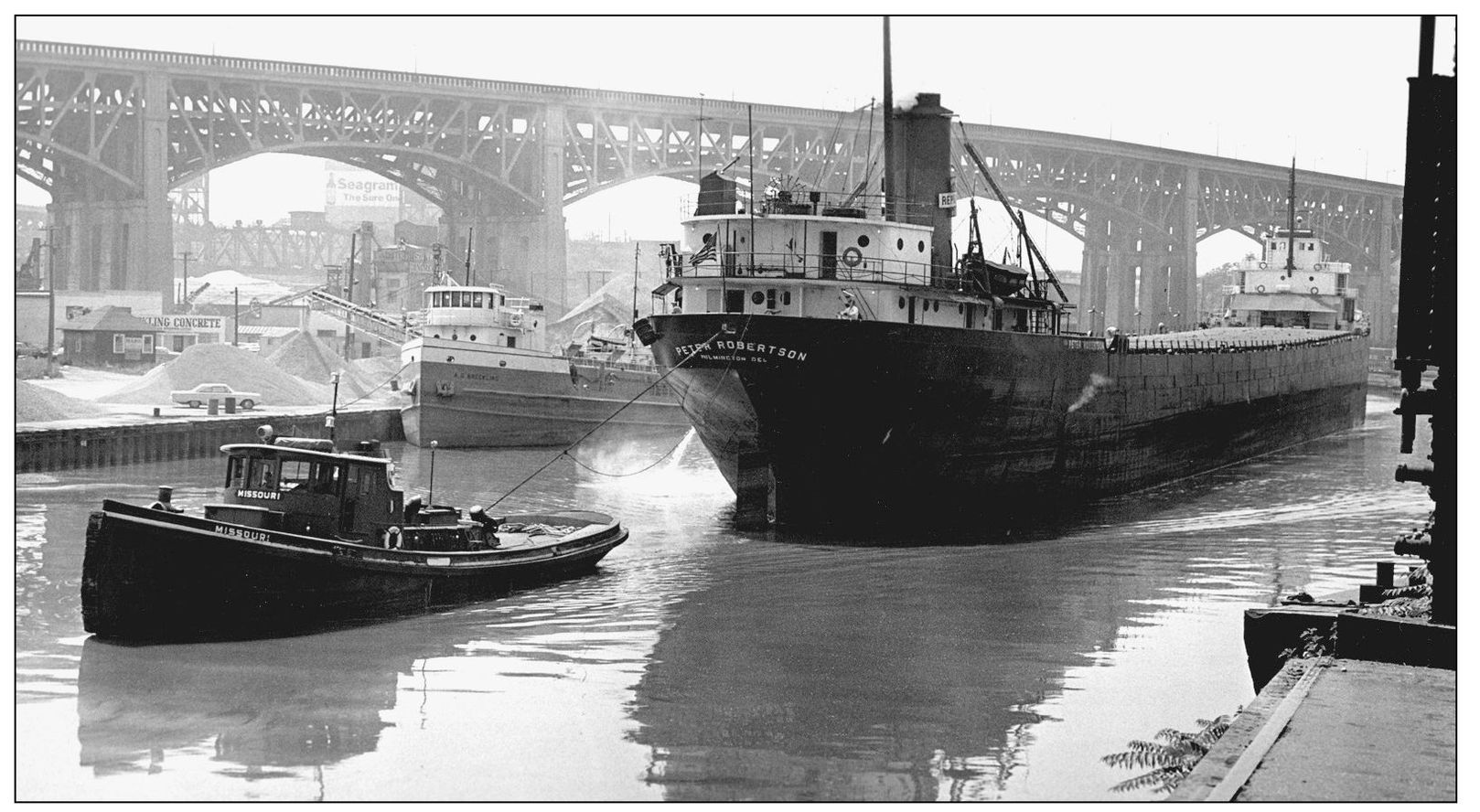
Pictured here is Republic Steel’s Peter Robertson getting an assist from the Great Lakes tug Missouri. The Robertson, built in 1906, met an ignoble end in 1969 as it was being towed to Europe for scrapping. The ship broke free of its tug boats and wound up beached near La Coruna, Spain. It eventually snapped in two. In the background, the 147-foot-long A. G. Breckling can be seen at a stone dock. (Photograph by Bill Nehez; Cleveland Press Archives—CSU Library Special Collections.)
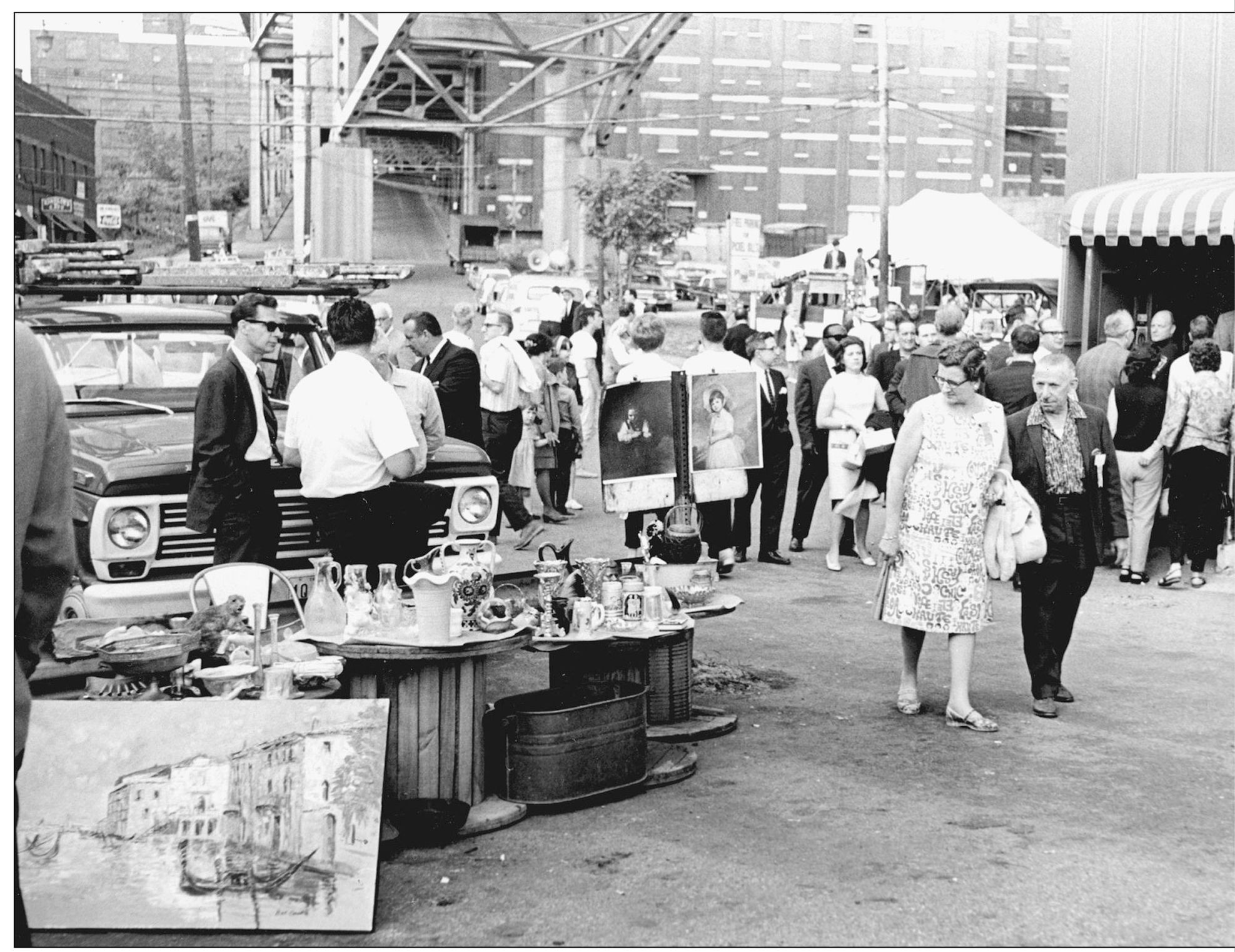
Shoppers enjoy an outdoor market near the Main Avenue Bridge in the summer of 1968. (Photograph by Van Dillard; Cleveland Press Archives—CSU Library Special Collections.)
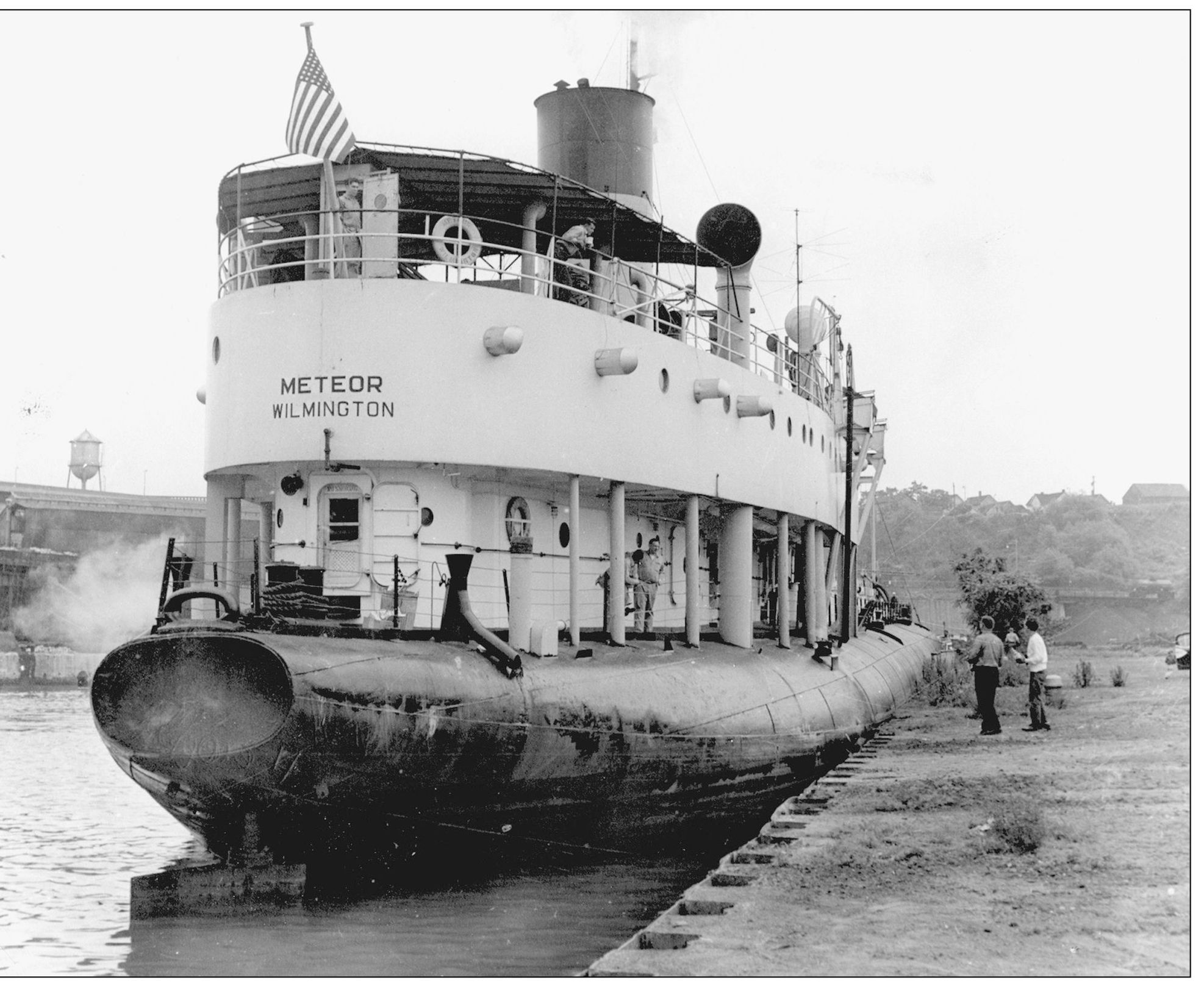
Here is a close-up view of the Meteor in 1969, its last season of operation. Launched in 1896 as the Frank Rockefeller, this boat was one of several whaleback steamers designed by Alexander McDougal in the late 19th century. Originally a part of the Pittsburg Steamship Company, the ship was eventually bought by Cleveland Tankers in 1943 and converted into an oil tanker. It is now a museum ship in Superior, Wisconsin. (Photograph by Joseph Ostendorff; the Robert Vance Collection.)
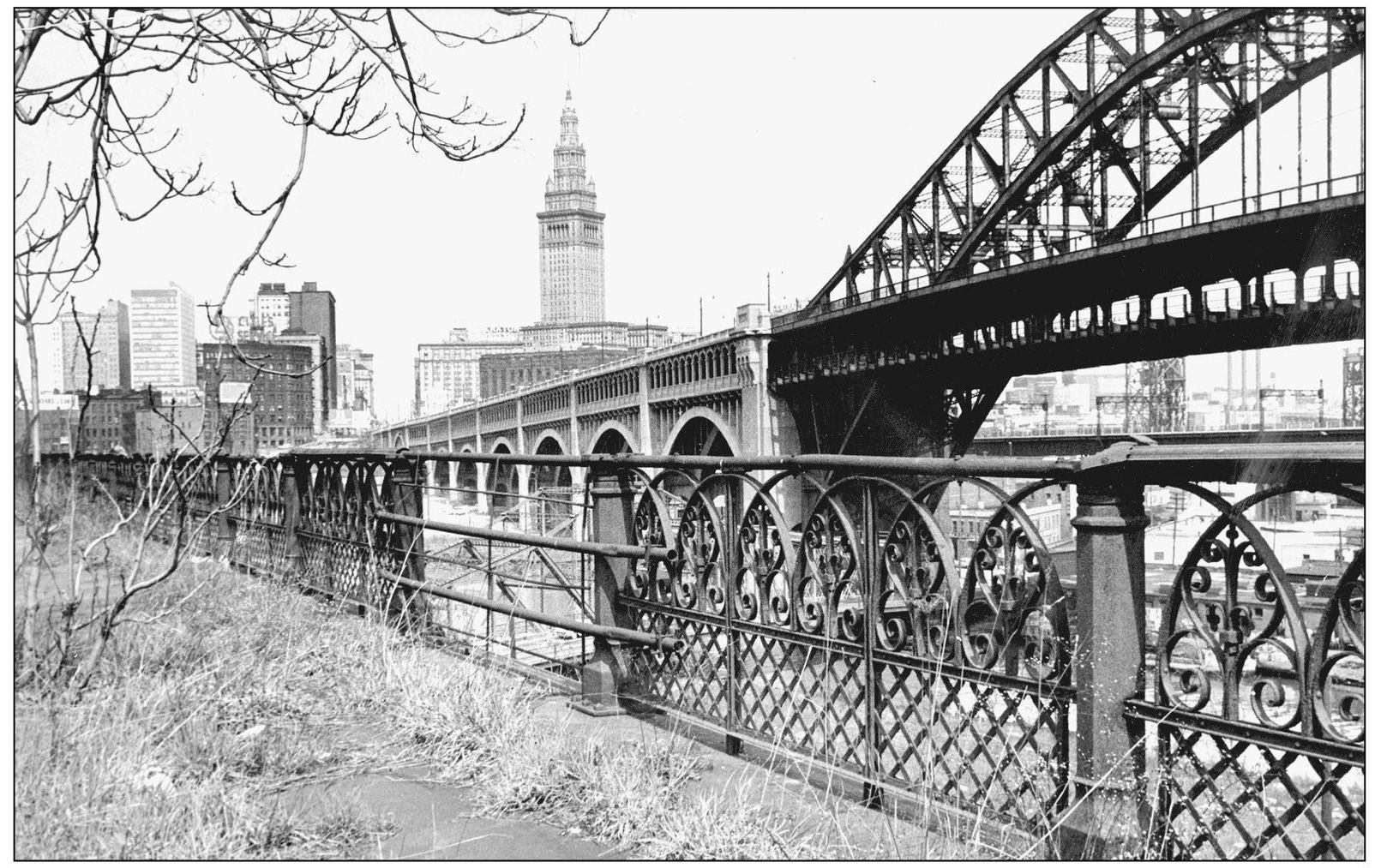
By the 1960s, the remaining section of the Superior Viaduct had fallen into disrepair. Trees grew where carriages and street cars once traveled and the Viaduct’s decorative ironwork was left to rust. (Photograph by Frank Aleksandrowicz; Cleveland Press Archives—CSU Library Special Collections.)
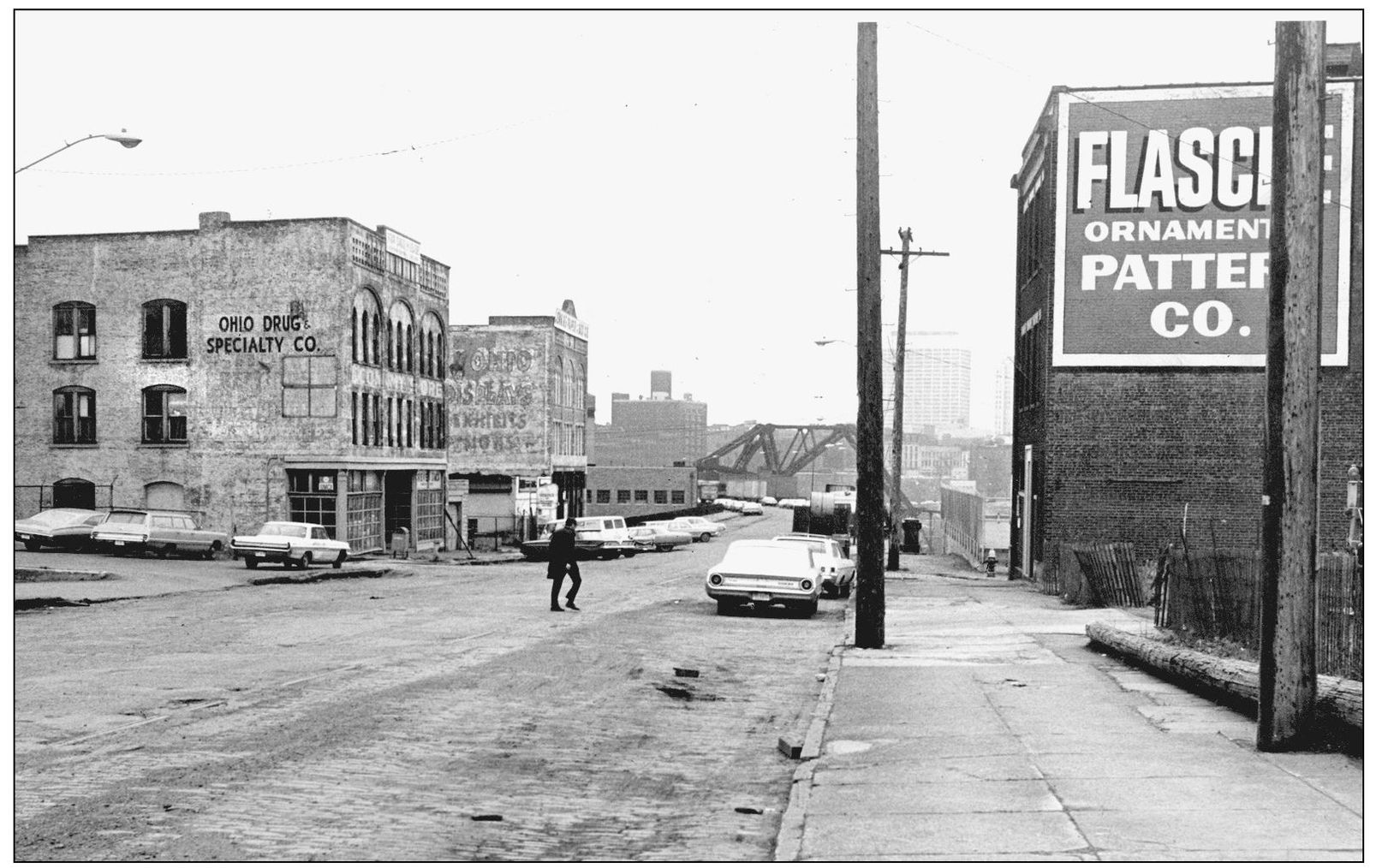
Unfortunately the Superior Viaduct resembled much of Cleveland when this image was taken in 1969. Crumbling buildings and streets were all too common as more residents fled to the city’s suburbs, taking Cleveland’s tax base with them. (Photograph by Van Dillard; Cleveland Press Archives—CSU Library Special Collections.)
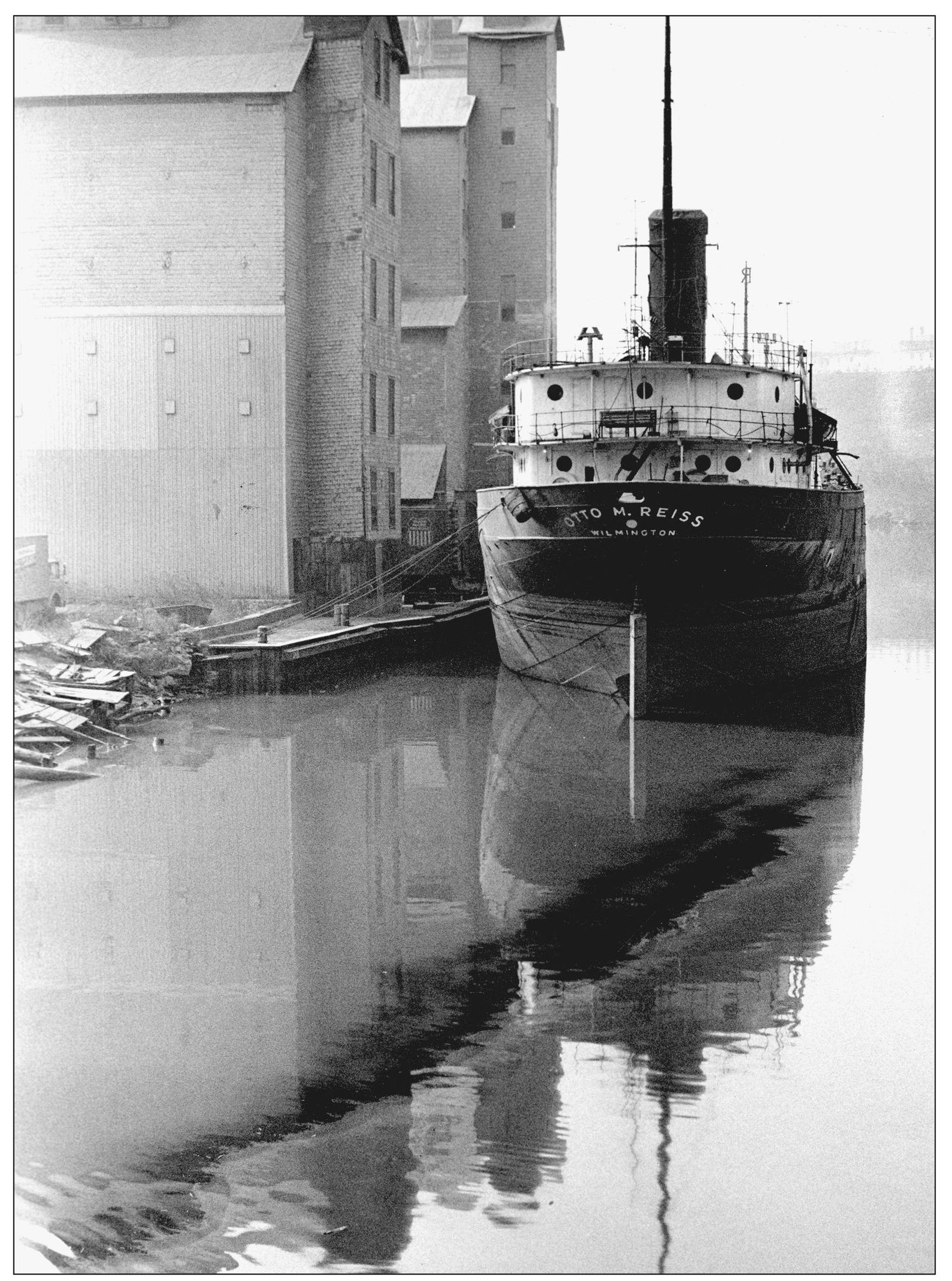
An oil slick floats ominously past the Otto M. Reiss in March 1969. This photograph would prove sadly prophetic as another oil slick caught fire along the Cuyahoga three months later. While Clevelanders were used to images of the river in flames, the rest of the country was shocked when photographs of the burning Cuyahoga made their way into the August 1 issue of Time magazine. (Photograph by Bill Nehez; Cleveland Press Archives—CSU Library Special Collections.)
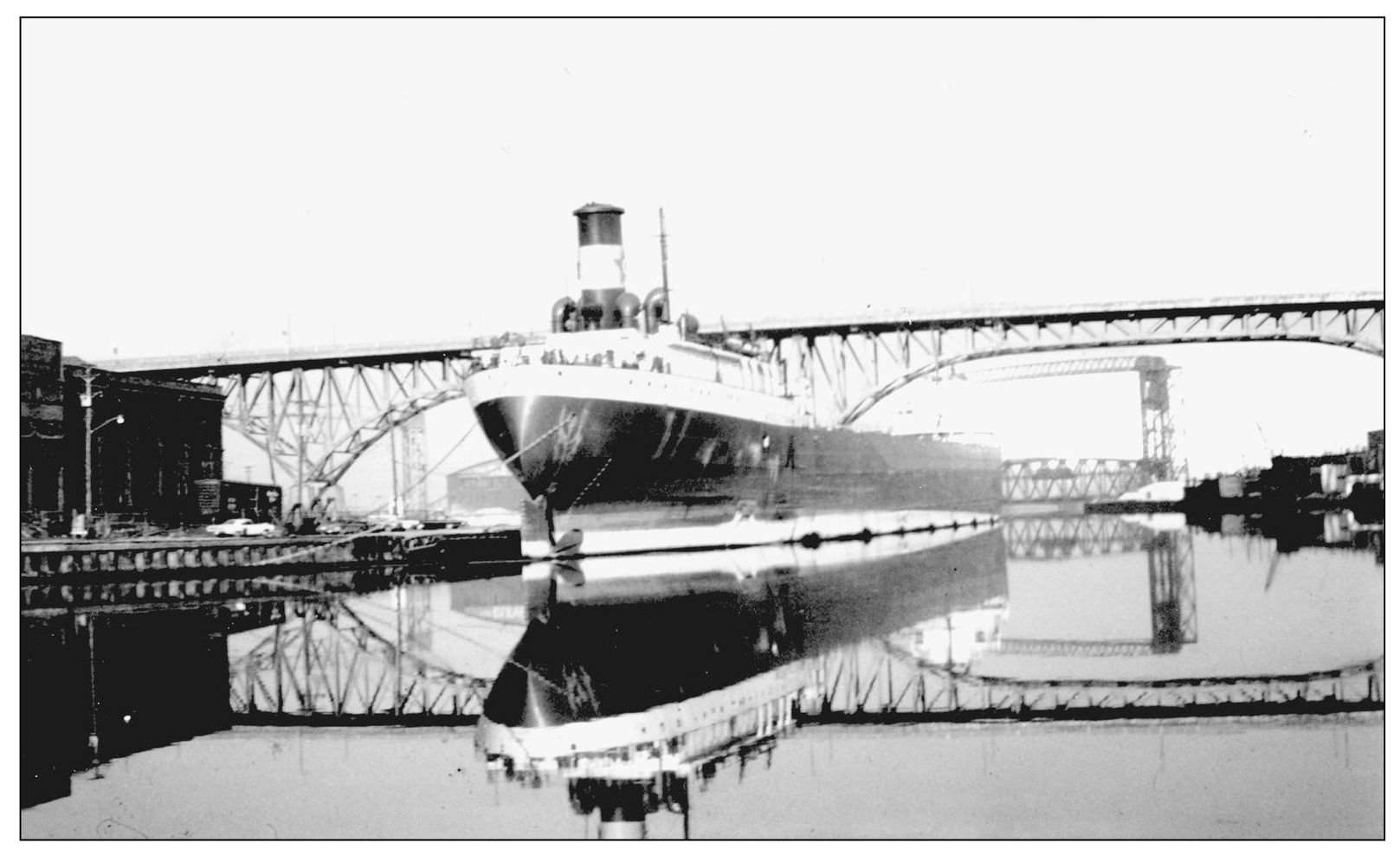
The waters of the Cuyahoga create a nearly perfect mirror image of the steamer Middletown. Built in 1943 as the Neshanic, this particular boat originally served in the U.S. Navy as an oil tanker. The vessel was converted into a dry bulk carrier in 1961 and lengthened to 730 feet long. Columbia Transportation acquired the ship in 1962 and renamed it Middletown. A self-unloading rig was added in 1982, and the boat works on into the present day. (Photograph by Robert Vance.)
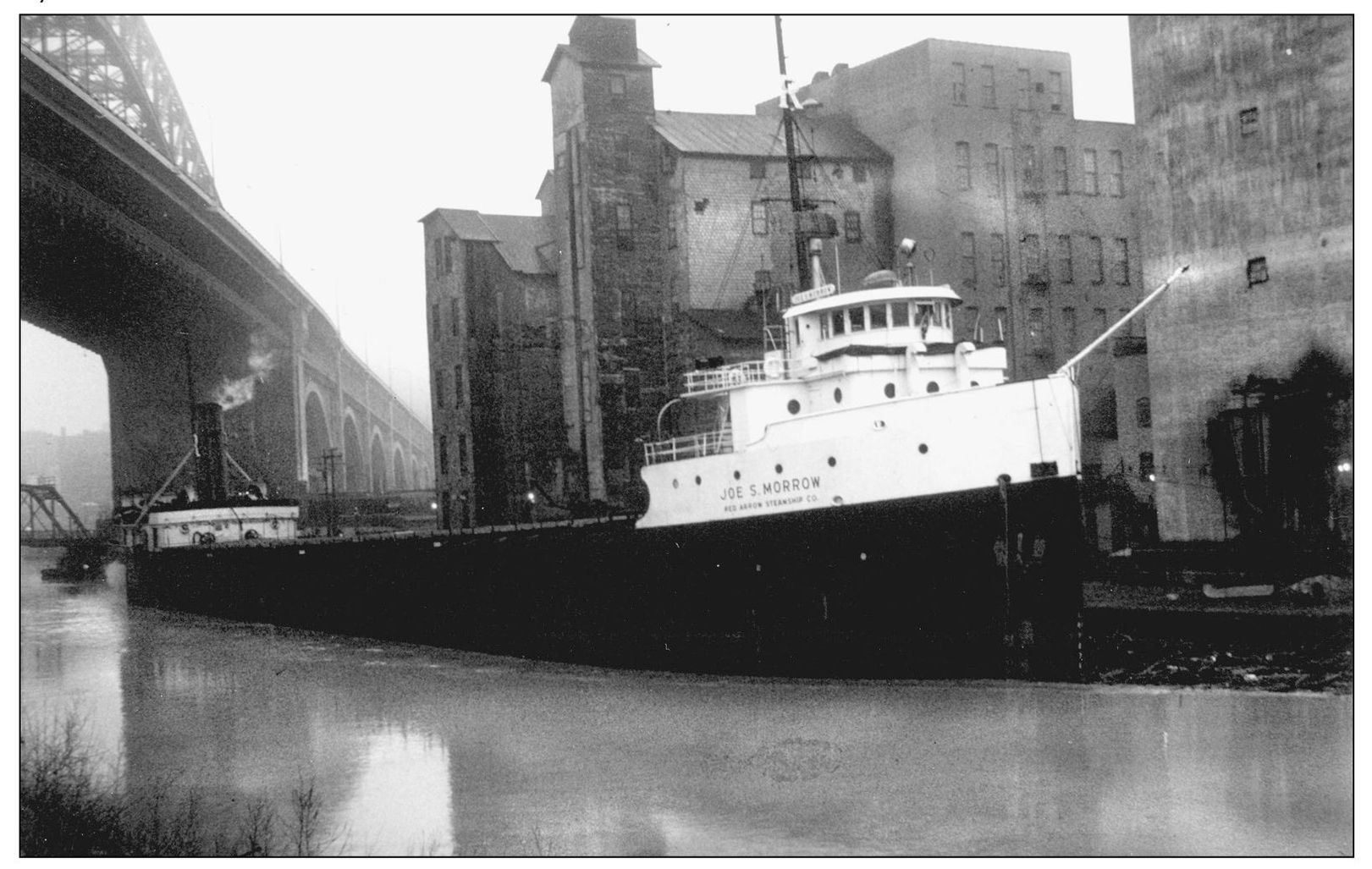
The 420-foot-long Joe S. Morrow sailed from 1907 until 1973. Seen here in 1969, the boat is moored at the Montana Flour Mills dock near the Detroit-Superior Bridge. (Photograph by Robert Vance.)
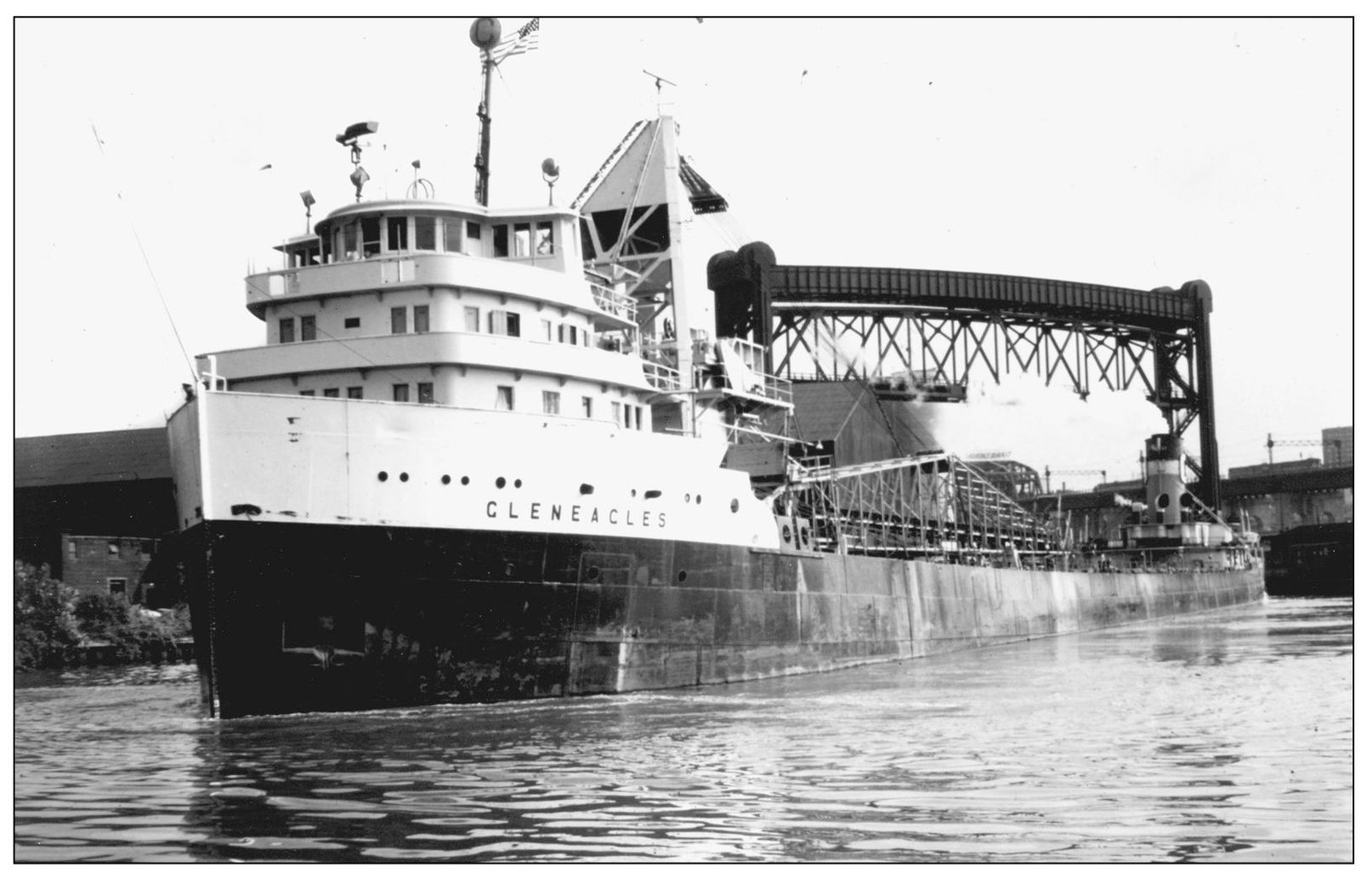
The Gleneagles was built in 1925 and measured in at 582 feet long. Fire caused $50,000 worth of damage to her aft deckhouse while laid up six months before this image was taken. The raised bridge in the background is still in use and allows traffic from the Flats Industrial Railroad to cross the river. (Photograph by Robert Vance.)
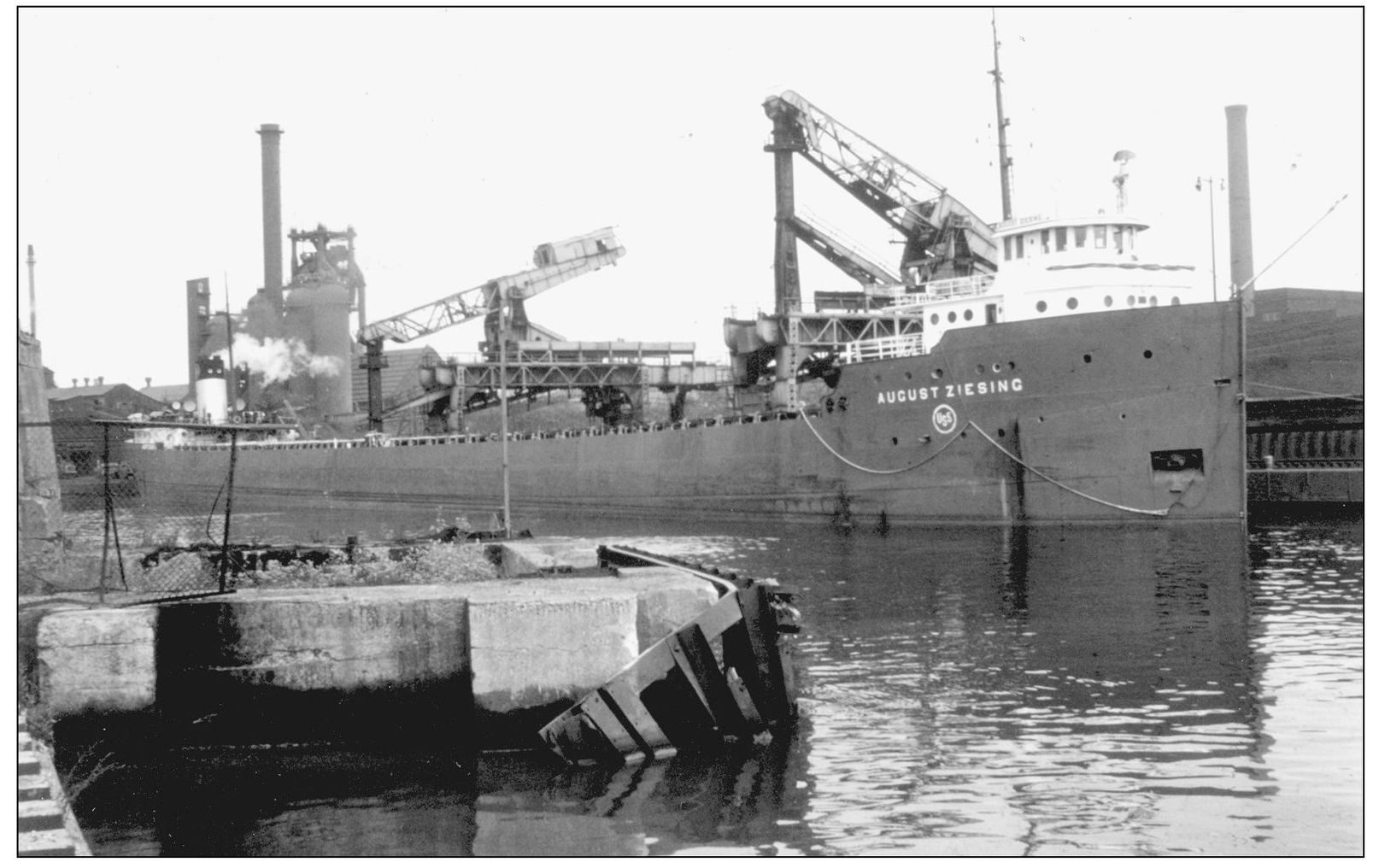
A pair of Huletts, each capable of lifting 10 tons of cargo, unload the August Ziesing at U.S. Steel’s Central Furnace dock in the summer of 1969. The Ziesing, which sailed for U.S. Steel from 1917 until 1984, was among the small number of boats that began and ended its career under the same name and ownership. (Photograph by Robert Vance.)
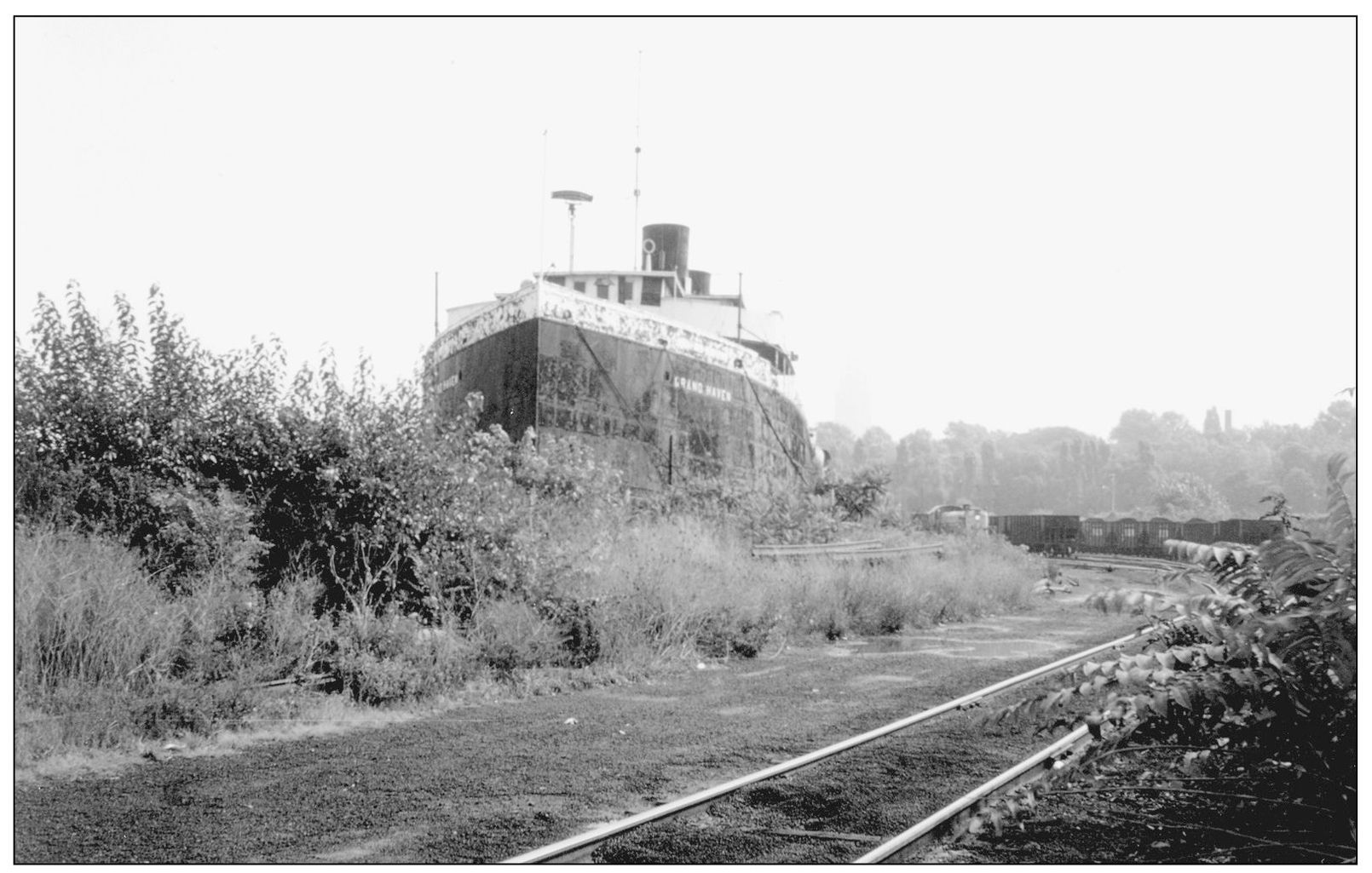
The Grand Haven faced a sad end along the old river bed of the Cuyahoga in June 1969. The 306-foot-long ship had been built in 1903 as a car ferry for the Grand Trunk Car Ferry Line. An outfit based in Honduras bought the ship in 1946 and it sailed in the Caribbean until 1964, when it returned to the Great Lakes. Its second stint on the Inland Seas did not last for long, however, as the ship was laid up for good a year later. (Photograph by Robert Vance.)
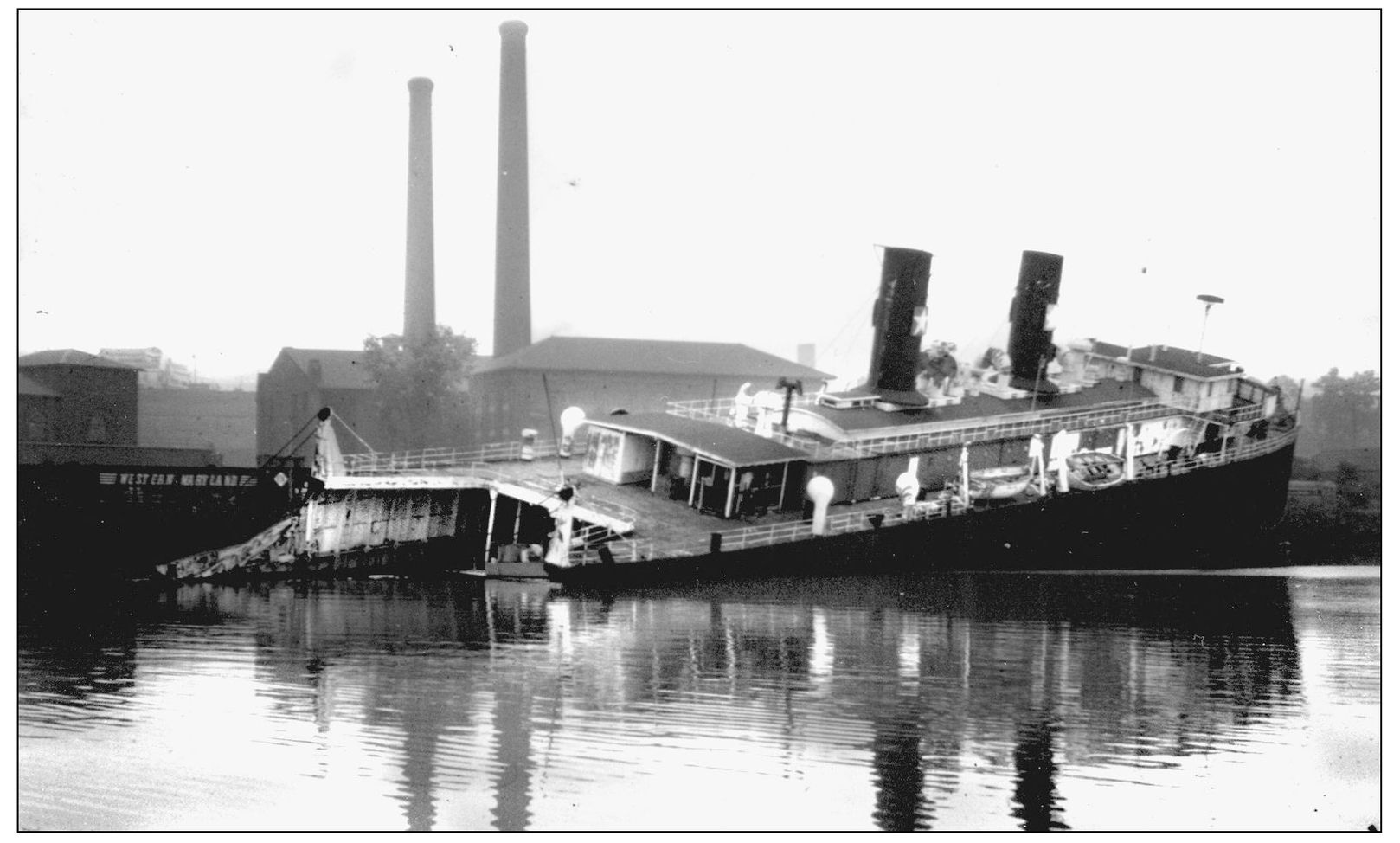
The Grand Haven sunk in the old flow, three months after the previous image was taken. The boat would be raised, but only so it could be scrapped. And as if the old ship had not been subjected to enough already, it would be ravaged by fire as it was being cut apart. (Photograph by Robert Vance.)
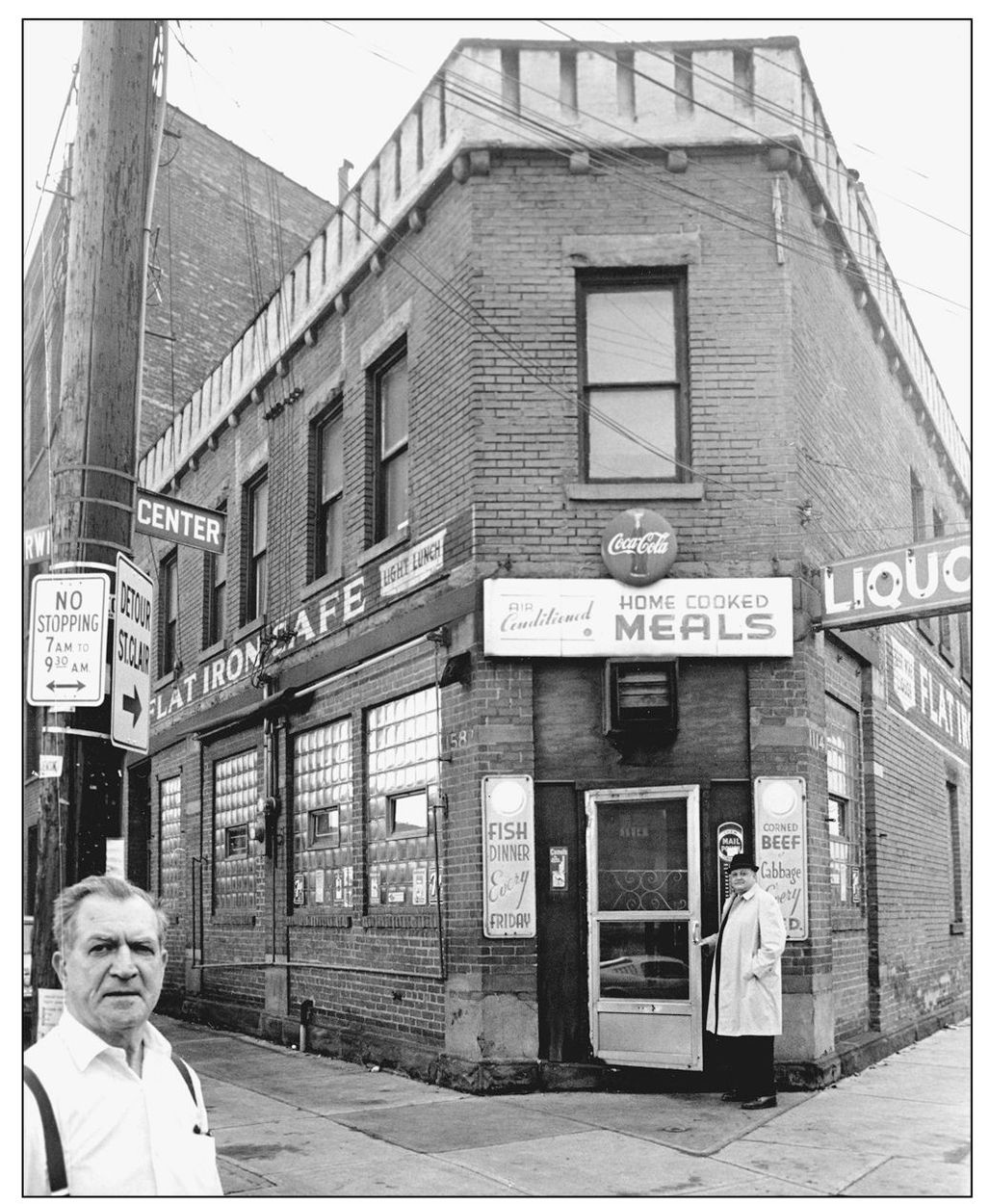
No discussion of the Flats would be complete without the Flat Iron Café. The building itself was once home to a four-story hotel (two stories were lost to fire), and the café would be founded in 1910, making it perhaps the oldest continuous establishment in the Flats. Pictured here in 1967 is Izzy Cohen (left), a long time owner of the Flat Iron who served staples such as corned beef and cabbage to many a hungry Clevelander. (Photograph by Bill Nehez; Cleveland Press Archives—CSU Library Special Collections.)
Shown here is a typical cast of characters in the Flat Iron in February 1970. Longshoremen, sailors, and steelworkers were regulars, but one could also find many white-collar types hanging around the Irish café as well. (Photograph by Tom Prusha; Cleveland Press Archives—CSU Library Special Collections.)
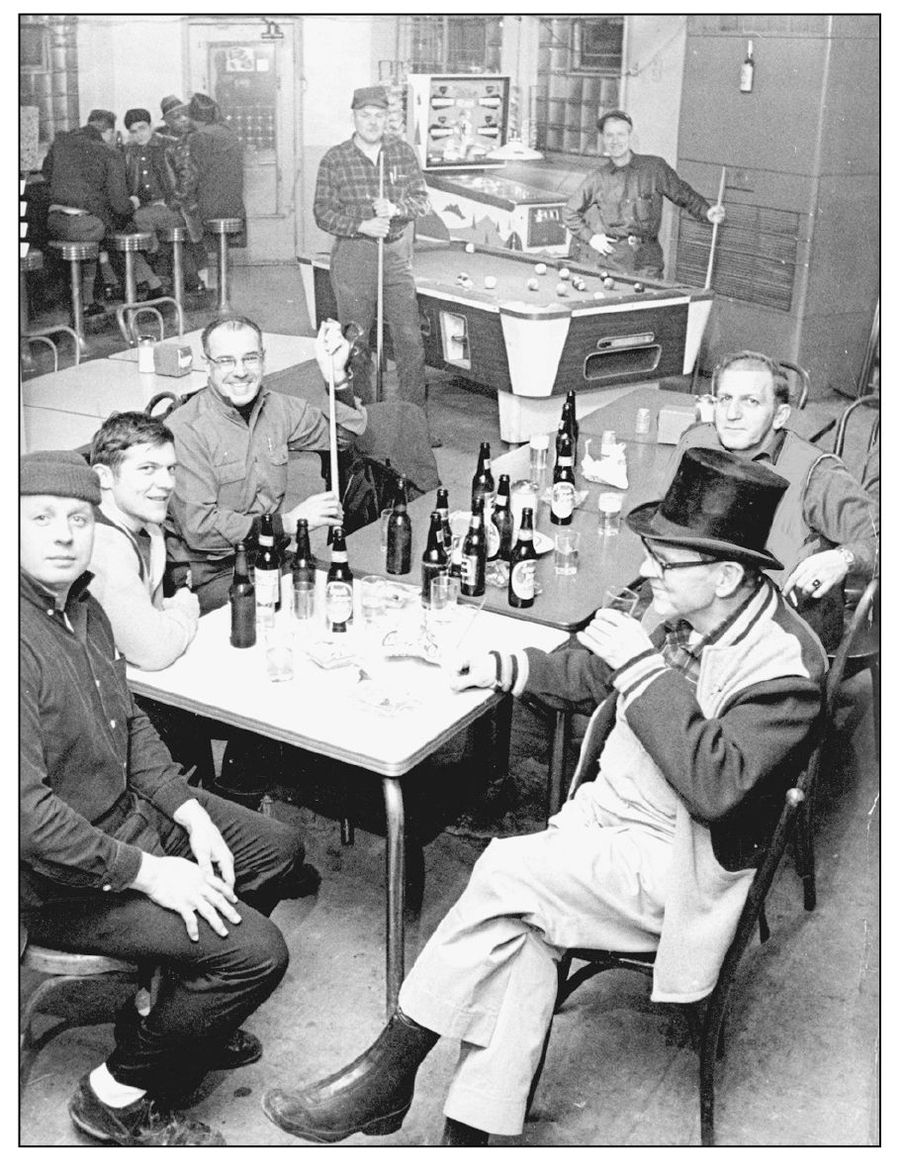
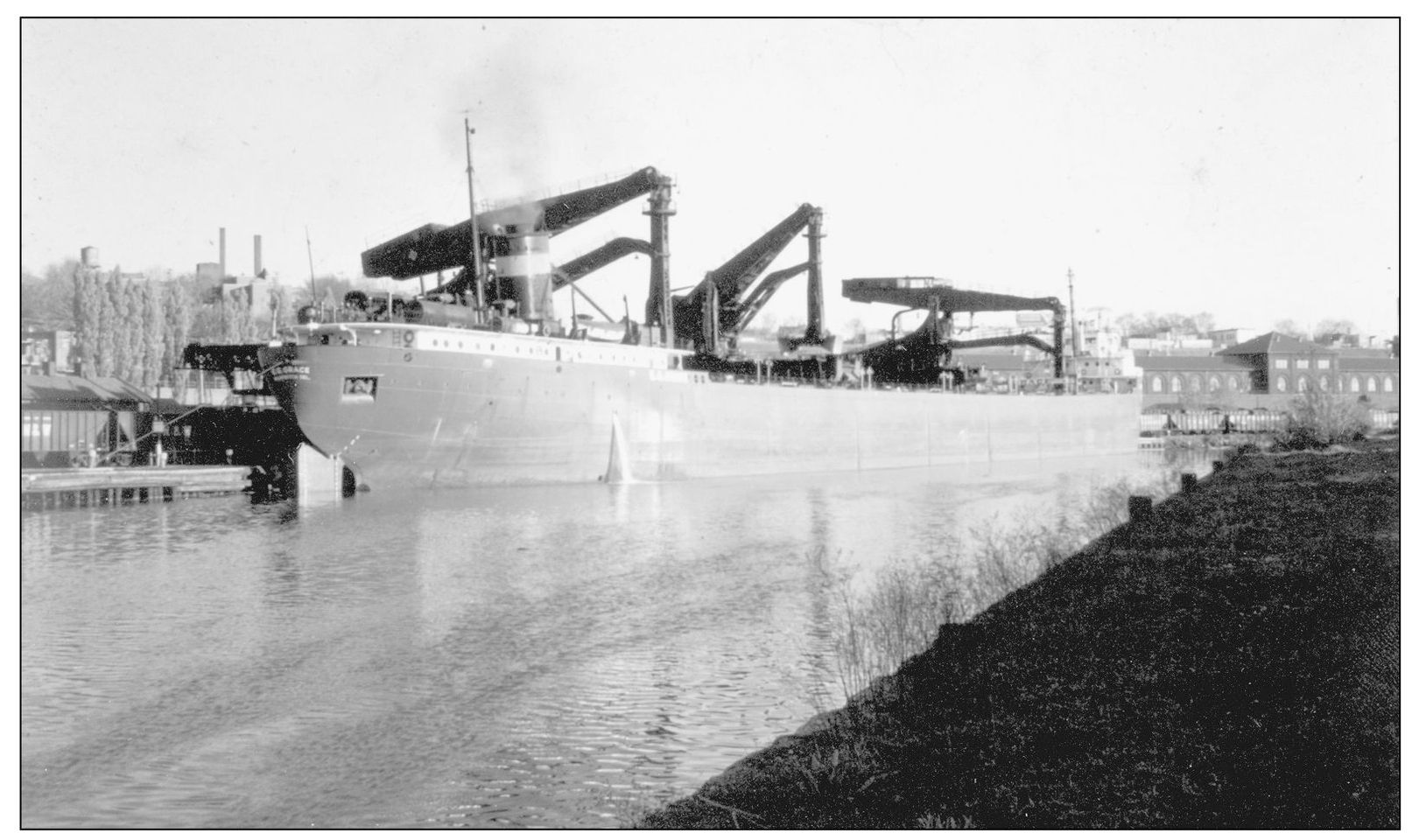
The Interlake Steamship Company’s E. G. Grace is unloaded by a trio of 17-ton Huletts at the Erie Railroad dock in the spring of 1970. (Photograph by Dave Smith; the Robert Vance Collection.)

Untreated discharge pours out of Republic Steel into the waters of the Cuyahoga. Scenes like this would not be upsetting if that was simply water flowing into the river. If the image were in color, however, one would see that the liquid is orange. (Photograph by Larry O. Nighswander; Cleveland Press Archives—CSU Library Special Collections.)
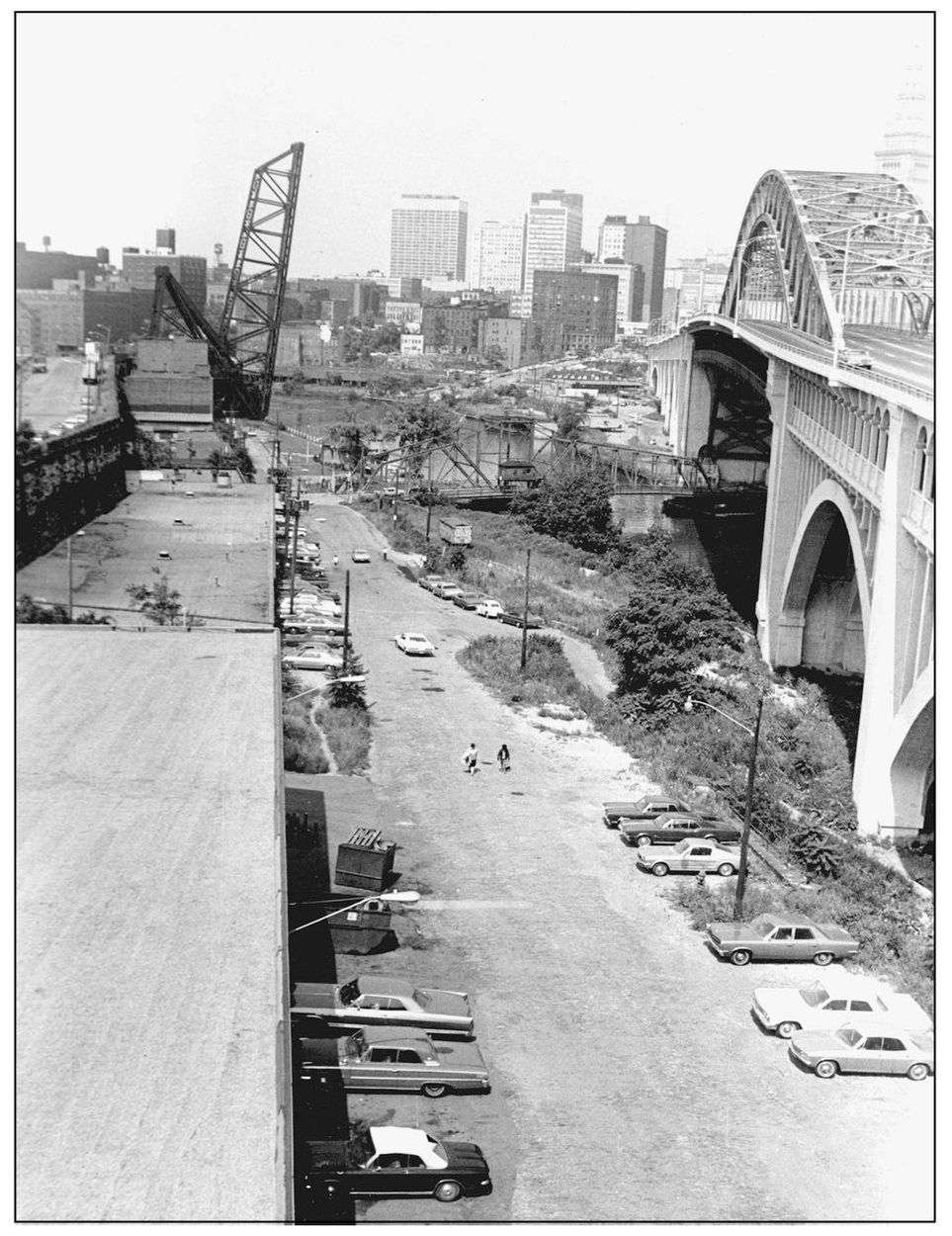
Four bridges share the spotlight in this view looking down Riverbed Street in August 1970: the Superior Viaduct, the New York Central-St. Louis Railroad Bridge, the Center Street swing bridge, and the Detroit-Superior Bridge. (Photograph by Van Dillard; Cleveland Press Archives—CSU Library Special Collections)

Here are the Mau-Sherwood Company and part of Sherwin-Williams operations in the Flats. Most of the structures seen in this image are now gone, and the space they once occupied now serves as a campus for Sherwin-Williams’s research facility. (Photograph by Herman Seid; Cleveland Press Archives—CSU Library Special Collections.)
A look at Consumers Power as she waits out winter lay-up in an ice-choked Cuyahoga. Consumers Power was once known as the George M. Humphrey, and it was under that name in 1943 that the ship sank in 74 feet of water after a collision in the Straits of Mackinac. All 39 of her crew members were rescued and the ship was salvaged. The 586-foot-long vessel would eventually succumb to the shipbreaker’s cutting torch in 1988. (Photograph by Glenn Zahn; Cleveland Press Archives—CSU Library Special Collections.)
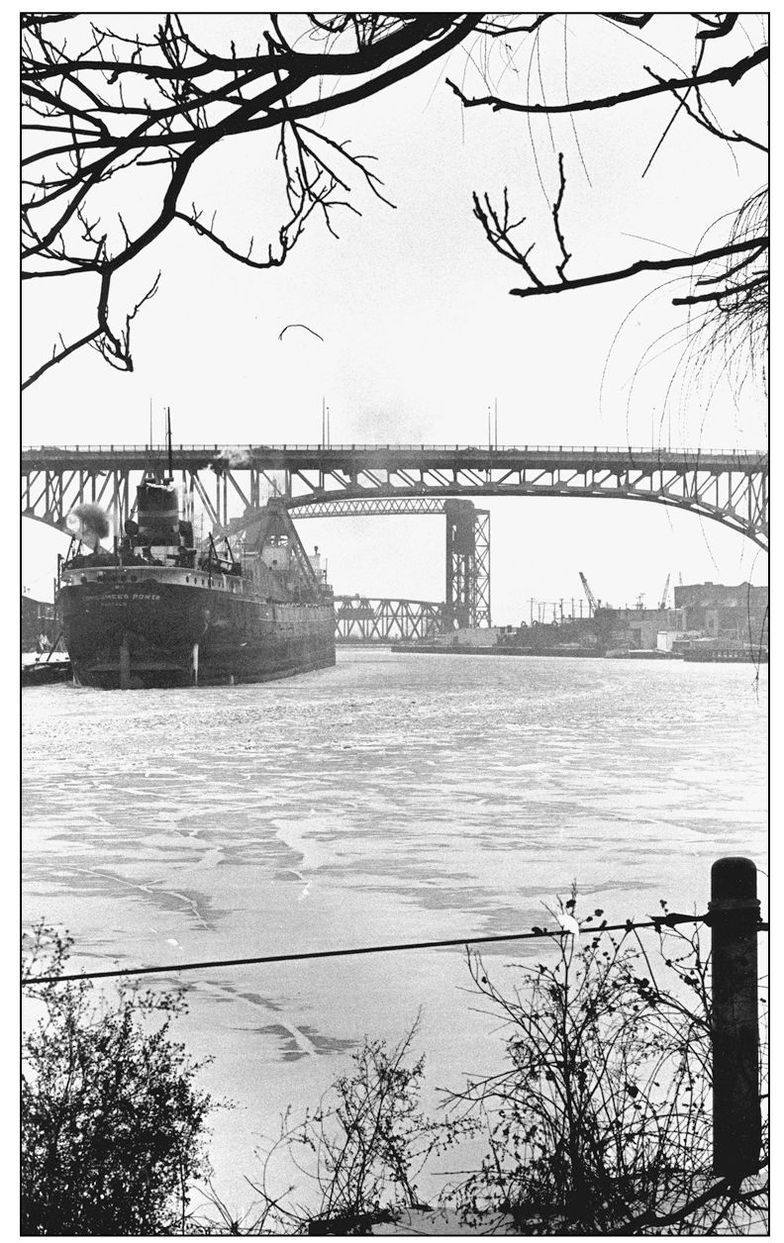
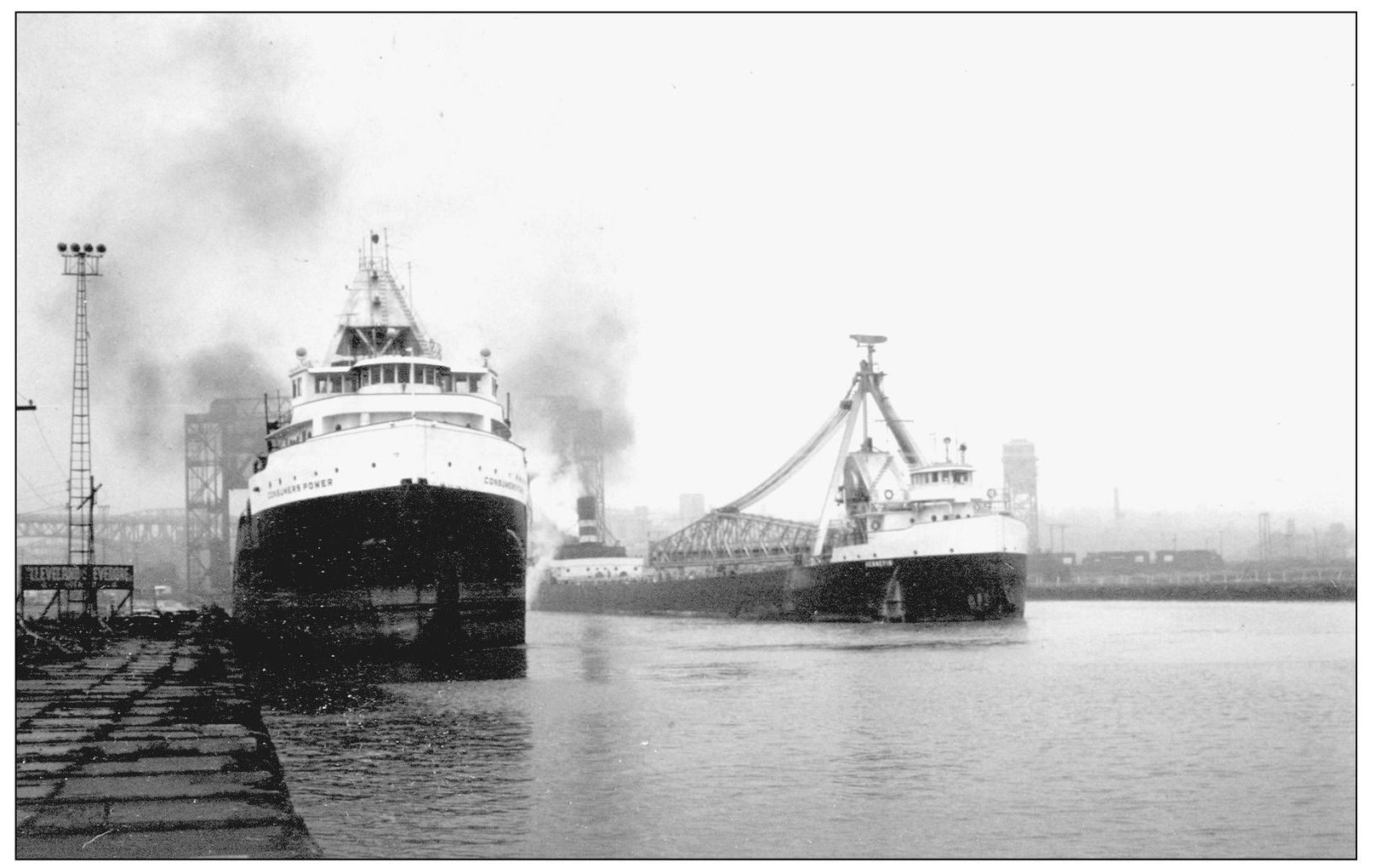
Hennepin, a steamer built in 1905, and Consumers Power appear to be drag racing past docks belonging to the Cleveland Stevedore Company in November 1970. (Photograph by Robert Vance.)
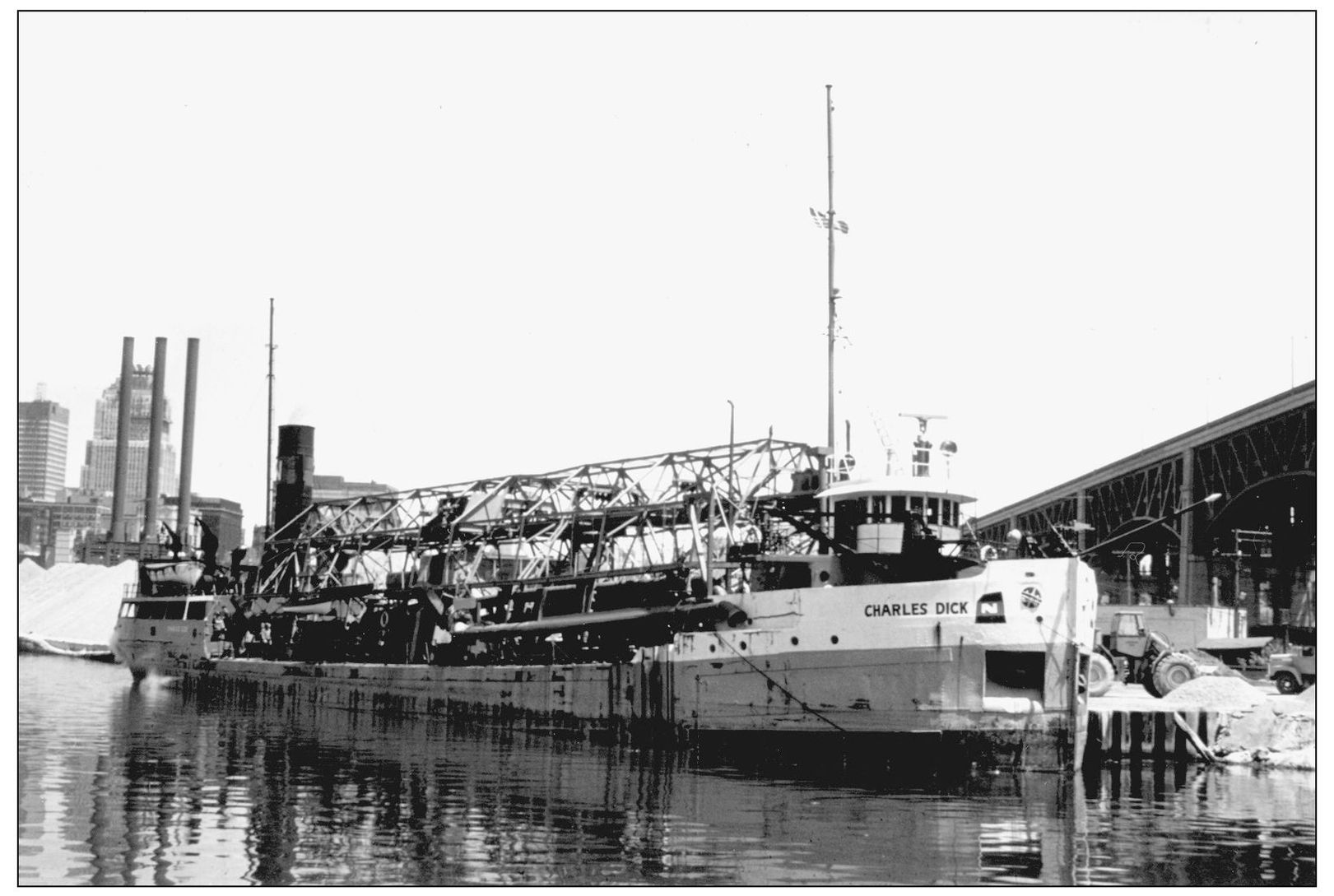
Built in 1922, the Charles Dick spent its entire career sailing for Toronto’s National Sand and Materials Company, Ltd. Boats such as the Charles Dick were designed to draw sand off of lake and river bottoms and were known as sand suckers. The ship was captured here in 1971 as it was docked just north of the Lorain-Carnegie Bridge. (Photograph by Robert Vance.)
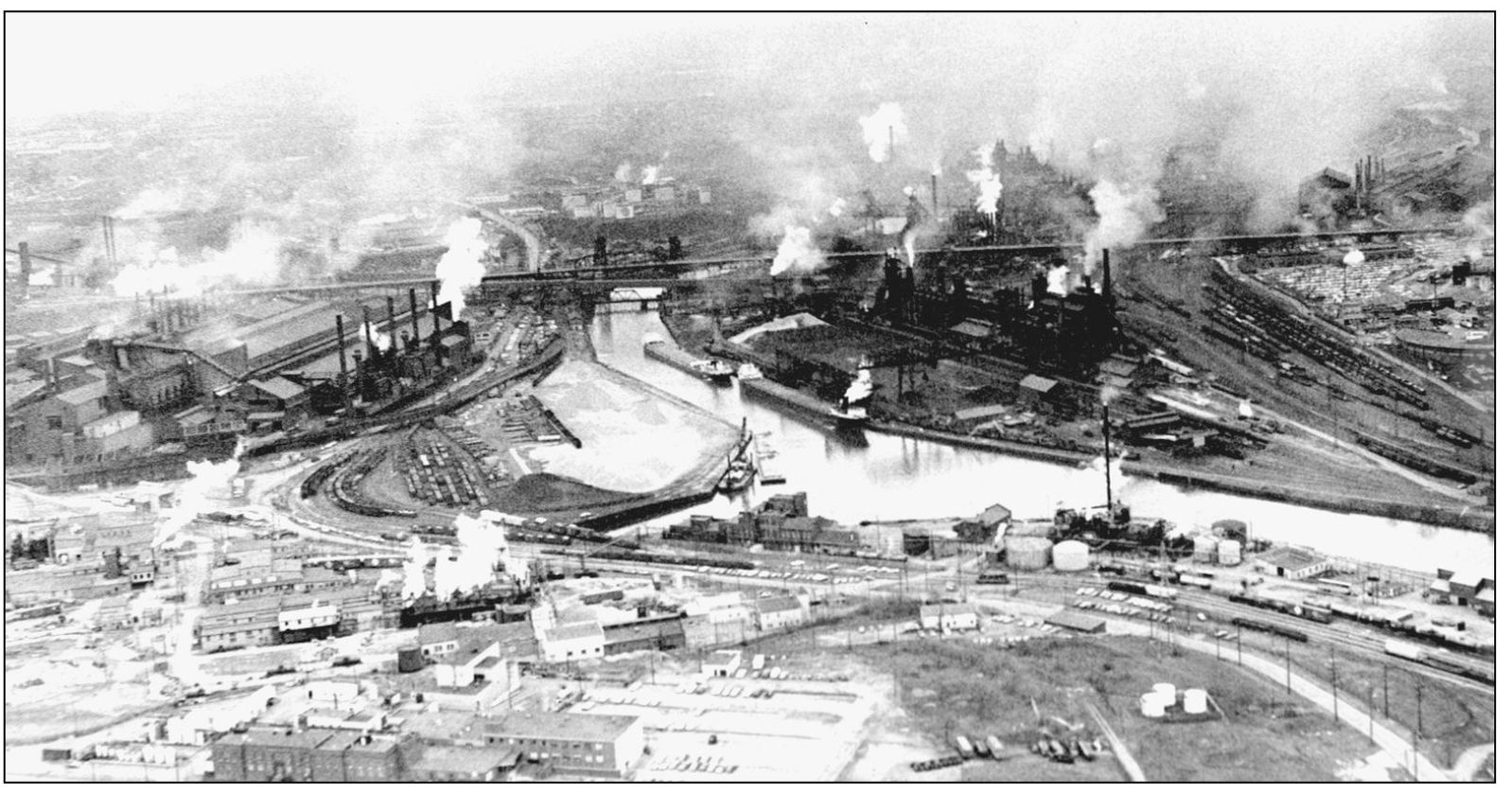
A pair of lake boats is shown at the docks of the Jones and Laughlin Steel Works. At left is Republic Steel. Long time rivals, Republic and Jones and Laughlin would become part of the same operation in 1984 when LTV Corporation (which acquired Jones and Laughlin in 1968) bought Republic. (Photograph by Bernie Noble; Cleveland Press Archives—CSU Library Special Collections.)
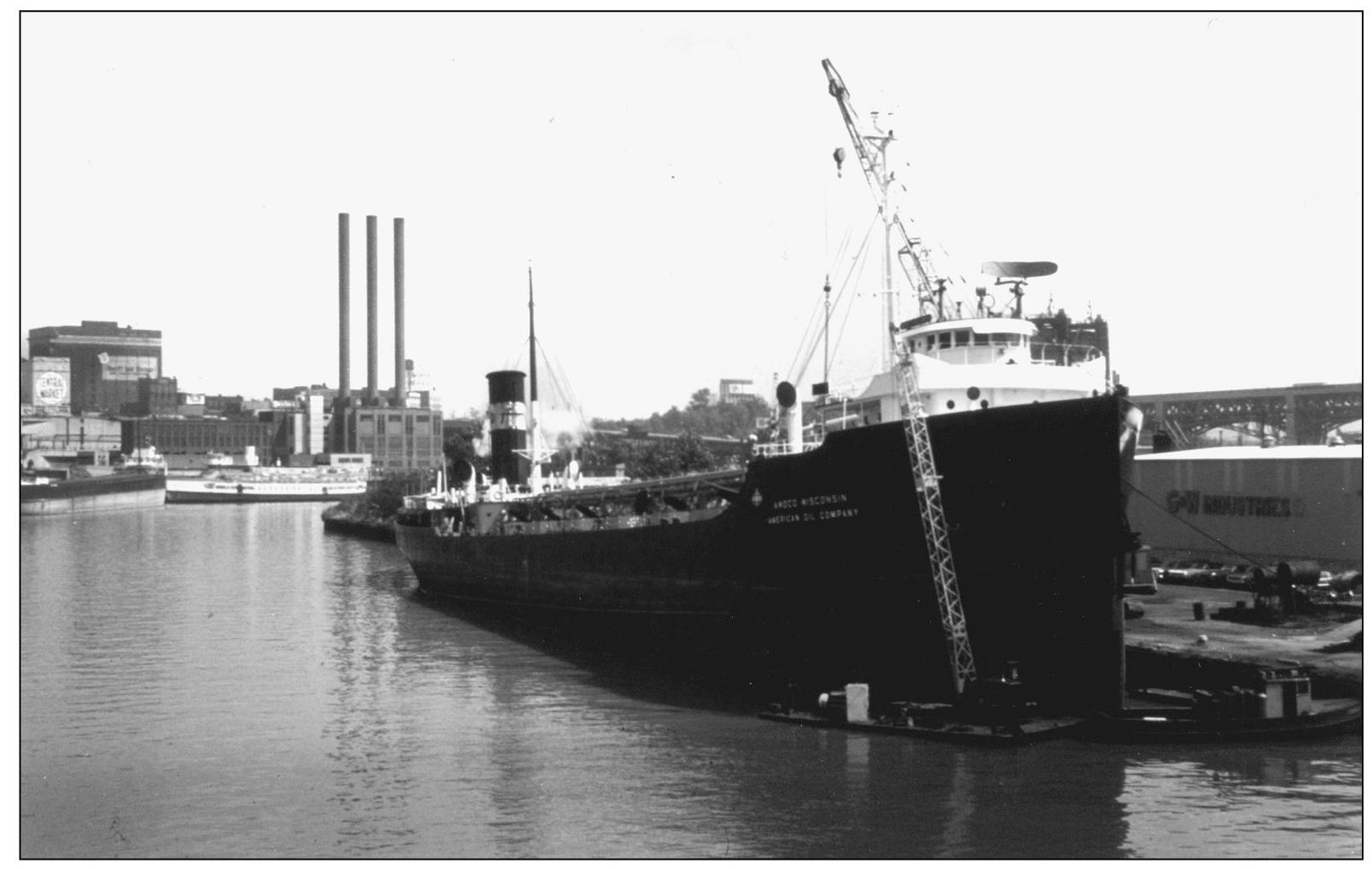
Amoco Wisconsin, an oil tanker built in 1930, undergoes repairs at G&W Industries. Located along Carter Road, G&W Industries was one of several companies that ran repair docks along the Cuyahoga. While G&W Industries is no longer in business, the dock still serves as a lay-up facility. (Photograph by Robert Vance.)
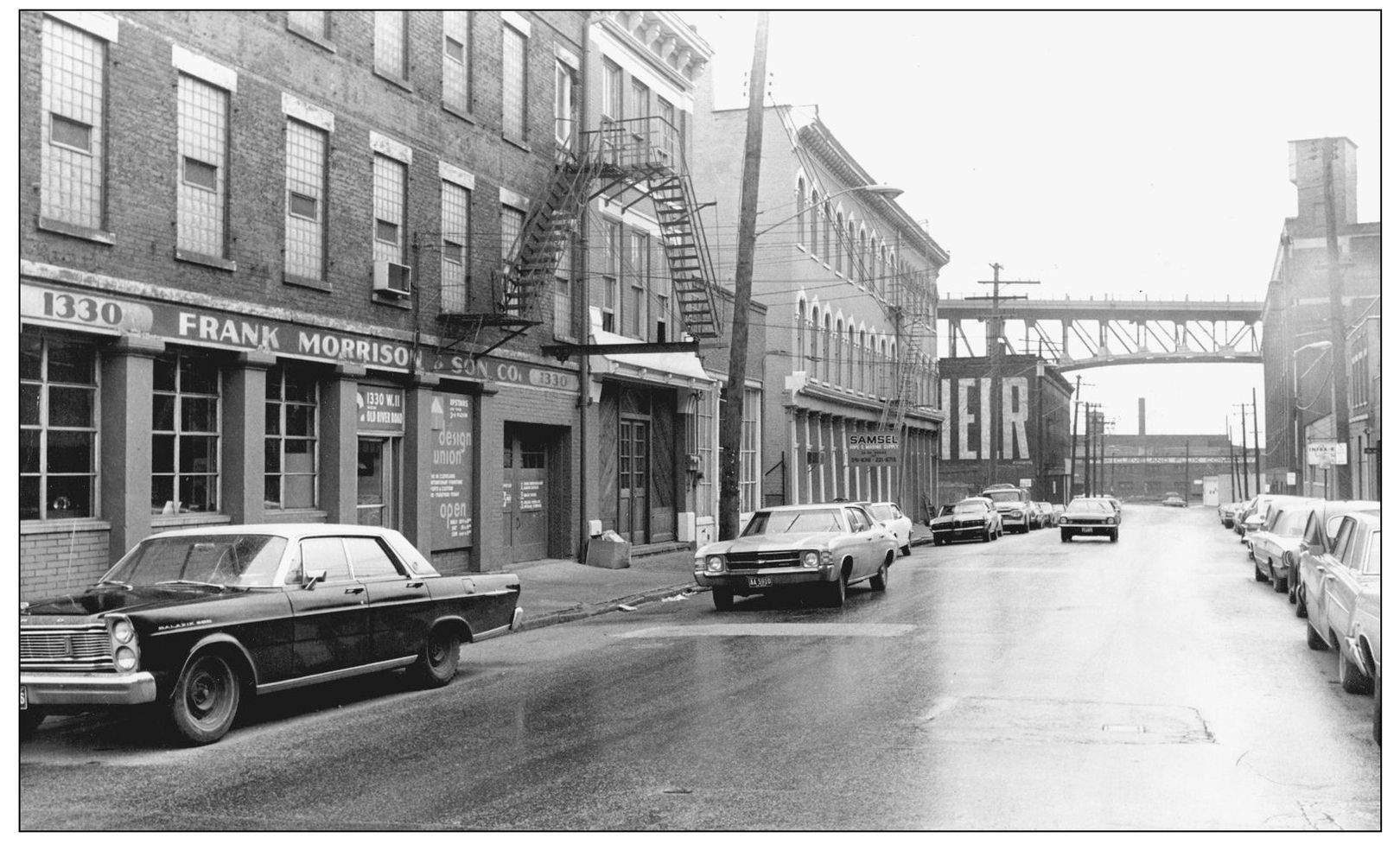
This section of Old River Road was once home to many businesses. As the 1970s wore on, however, many establishments would close leaving the street almost deserted. The area would experience a rebirth in the 1980s, as various trendy bars opened up in the same buildings where industrial supplies and marine fittings were once stored and sold. (Photograph by Clayton Knipper; Cleveland Press Archives—CSU Library Special Collections.)

Streets in the Flats have always taken a heavy beating from car and truck traffic. Thus, the ever-present need for maintenance crews such as this one seen in 1973. (Photograph by Timothy Culek; Cleveland Press Archives—CSU Library Special Collections.)
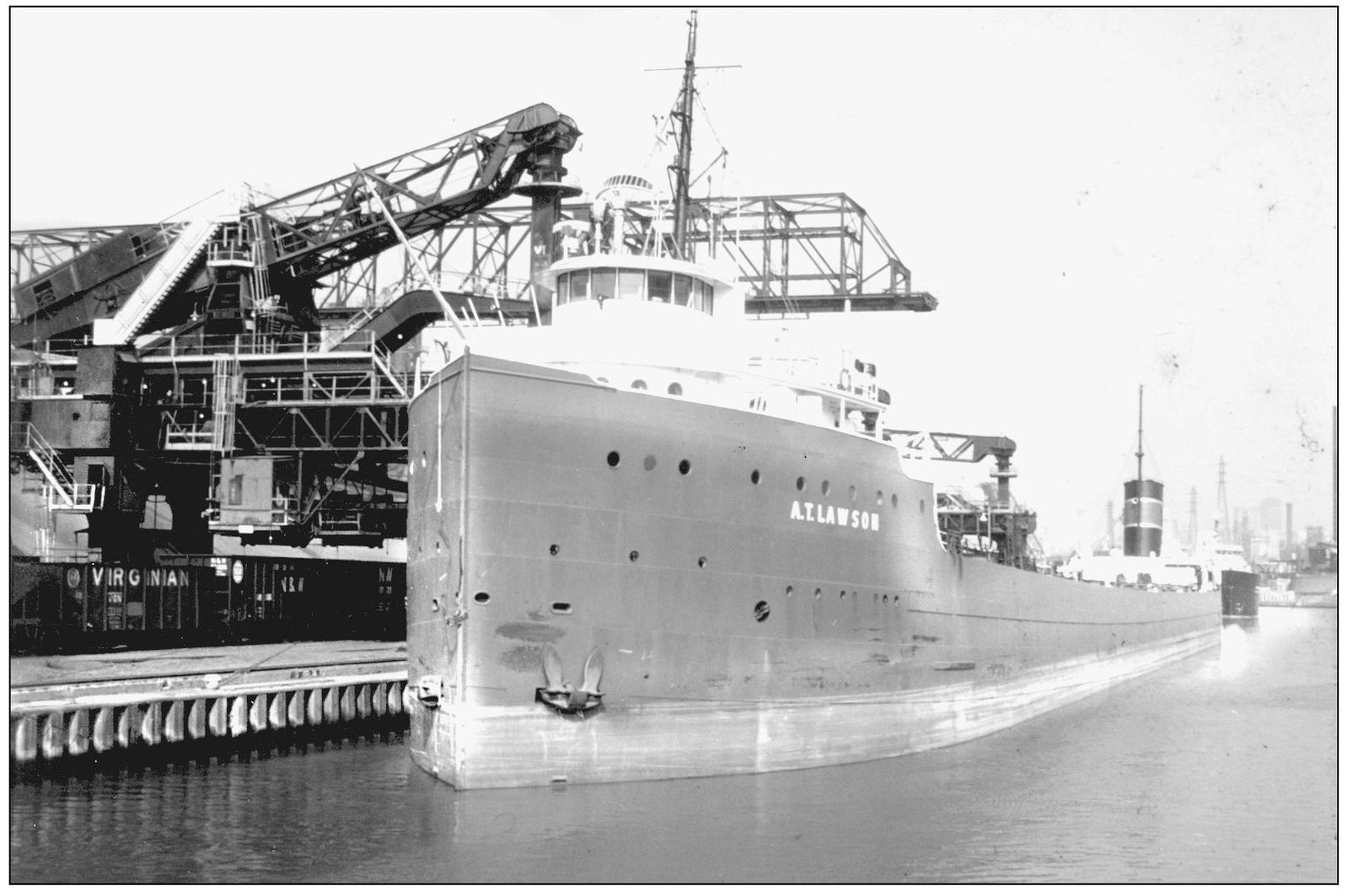
The A. T. Lawson, seen here under the Kinsman Marine Transit Company’s Flag, unloads at the Lower Republic Steel dock in September 1974. The Huletts at lower Republic were rated for only 10 tons, which made for rather lengthy unload times. (Photograph by Robert Vance.)
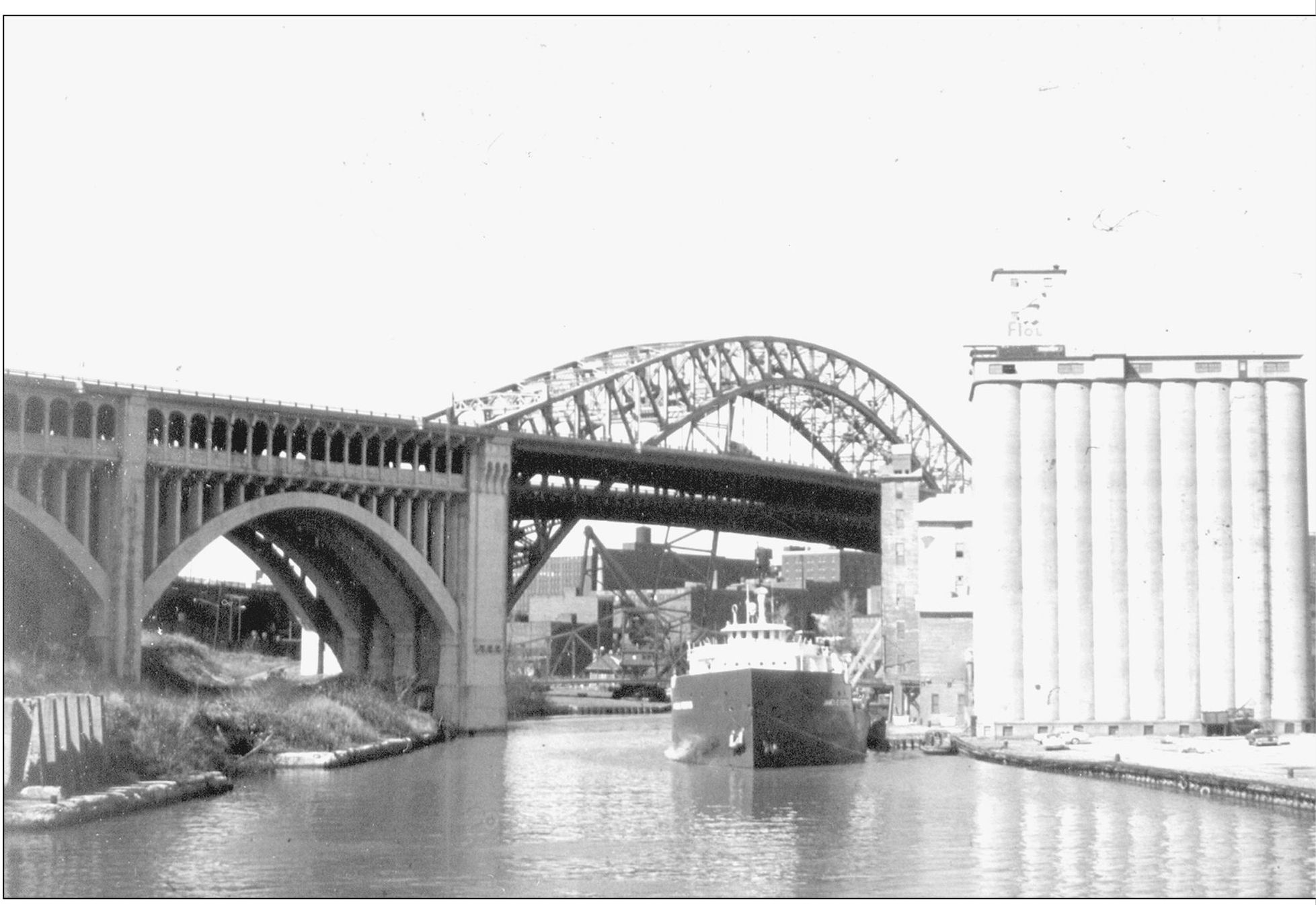
The James E. Ferris unloads grain near the Detroit-Superior Bridge in April 1974, just eight months before it was taken out of service. The erstwhile boat had been built in 1910 and spent its final days, before being scrapped in 1979, as a grain storage hulk in Germany. (Photograph by Robert Vance.)
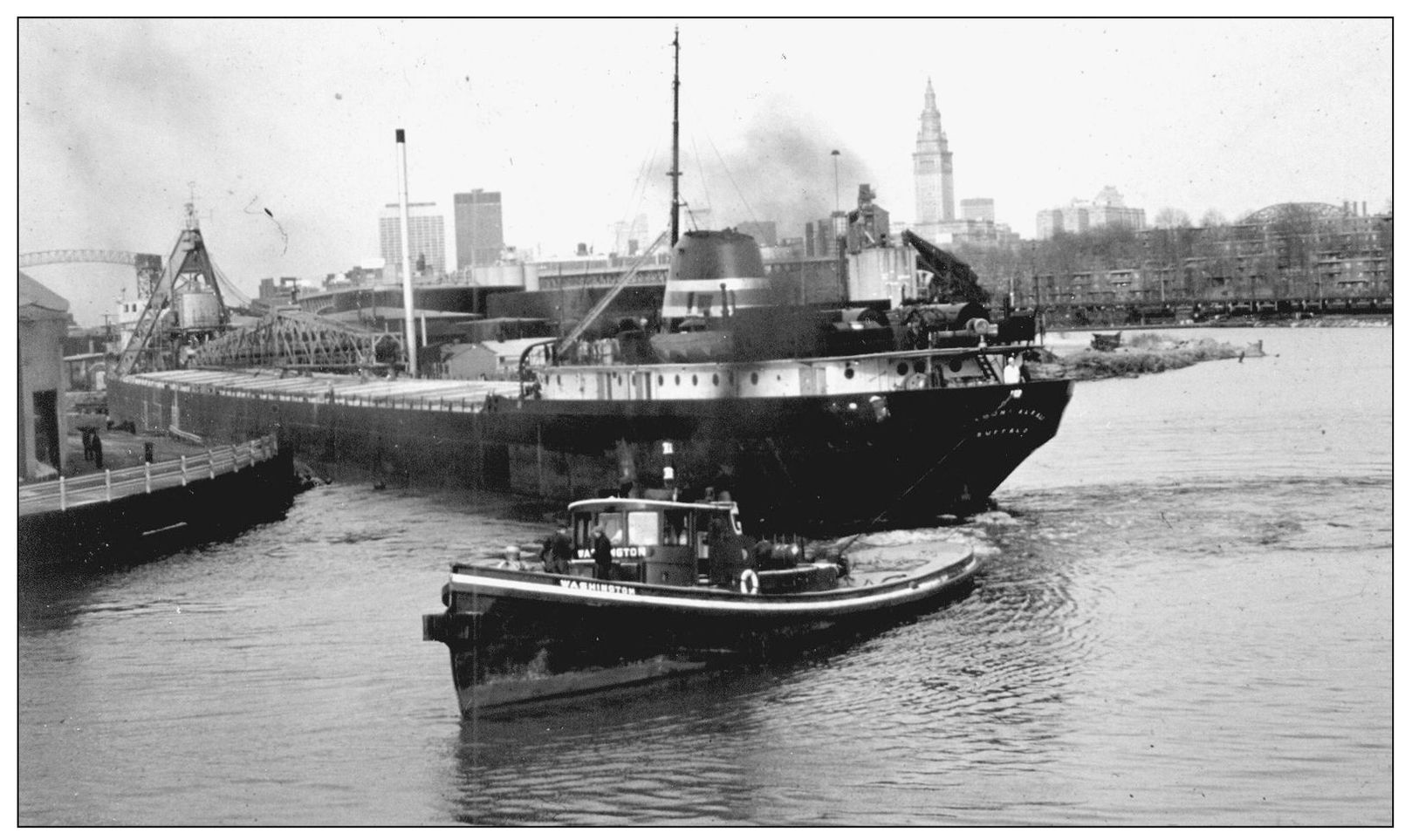
Rock salt has been mined under Lake Erie for decades and Cleveland is one of only two ports on the American side of the Lakes where freighters load salt (the other is Fairport Harbor, Ohio). The salt dock is located along the old river bed of the Cuyahoga and, as this image of the Diamond Alkali demonstrates, any lake boat loading there needs assistance from a trusty Great Lakes Towing Company tug to exit. (Photograph by Robert Vance.)
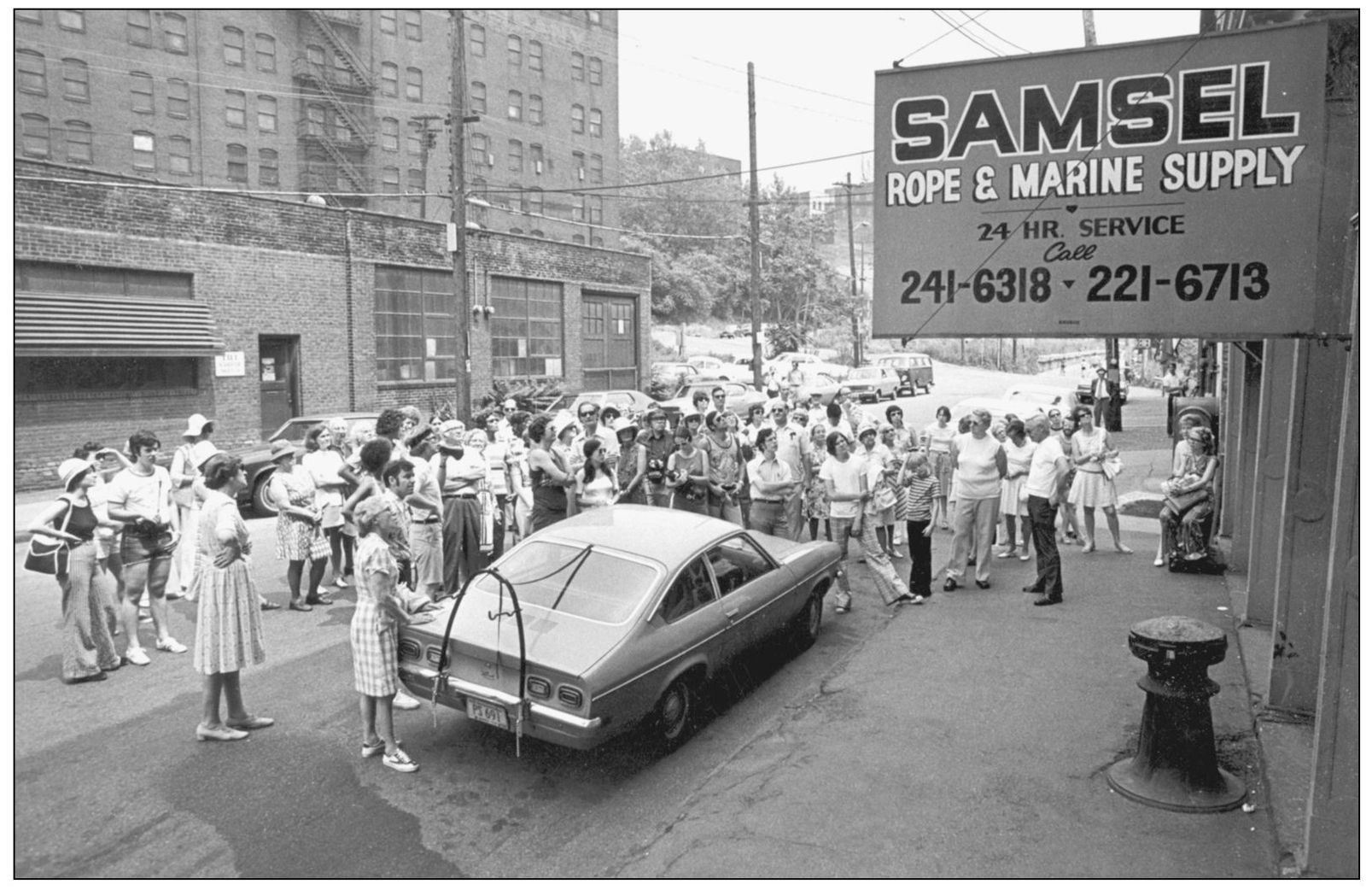
A walking tour of the Flats prepares to step off from the Samsel Supply Company in June 1975. Still in business today, Samsel’s is among the last establishments where one can find lines, ladders, and fenders hand-made from ropes and wires. (Cleveland Press Archives—CSU Library Special Collections.)
This view highlights the water treatment system for Republic Steel’s 84-inch hot and cold strip mills. (Cleveland Press Archives—CSU Library Special Collections.)
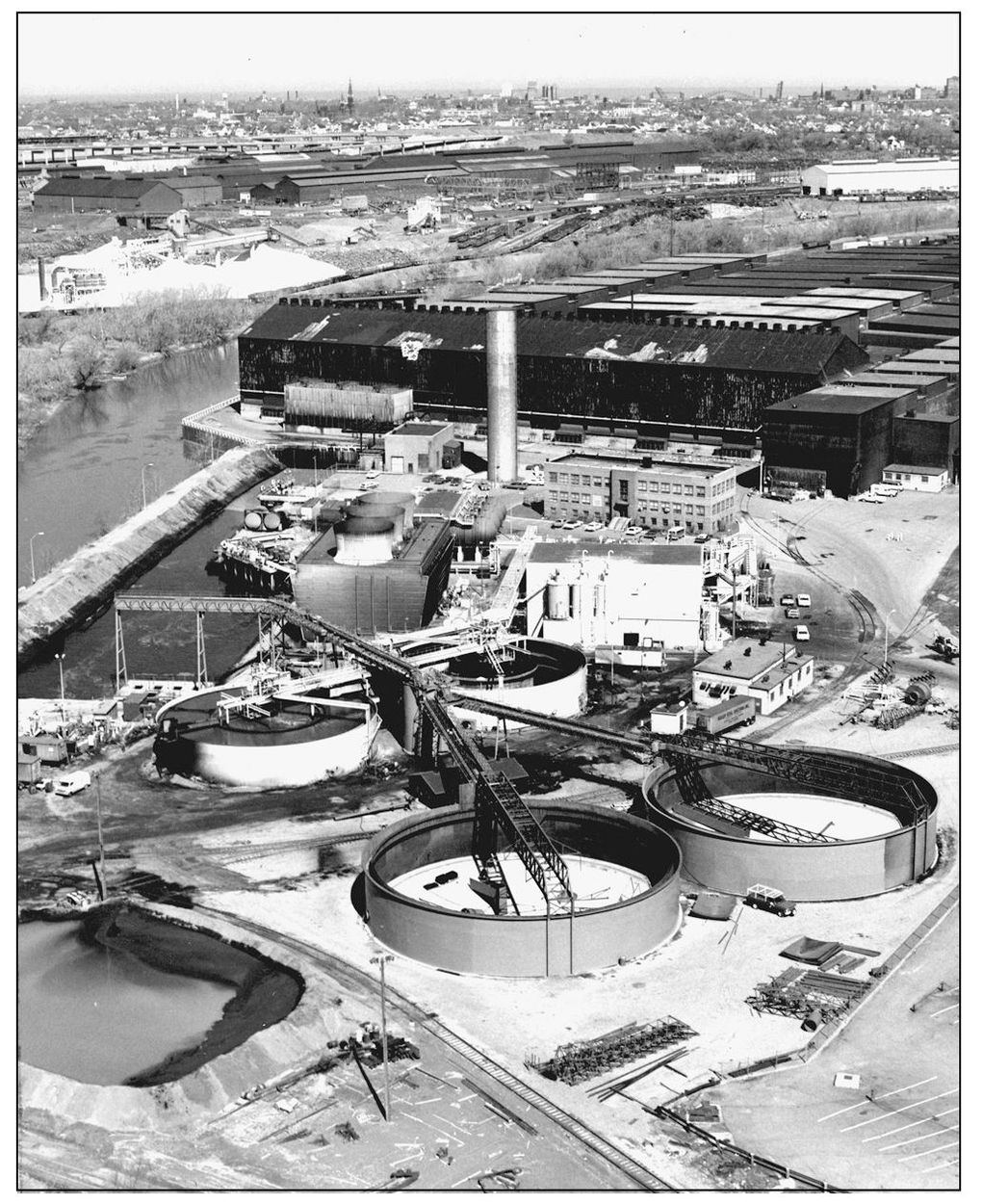
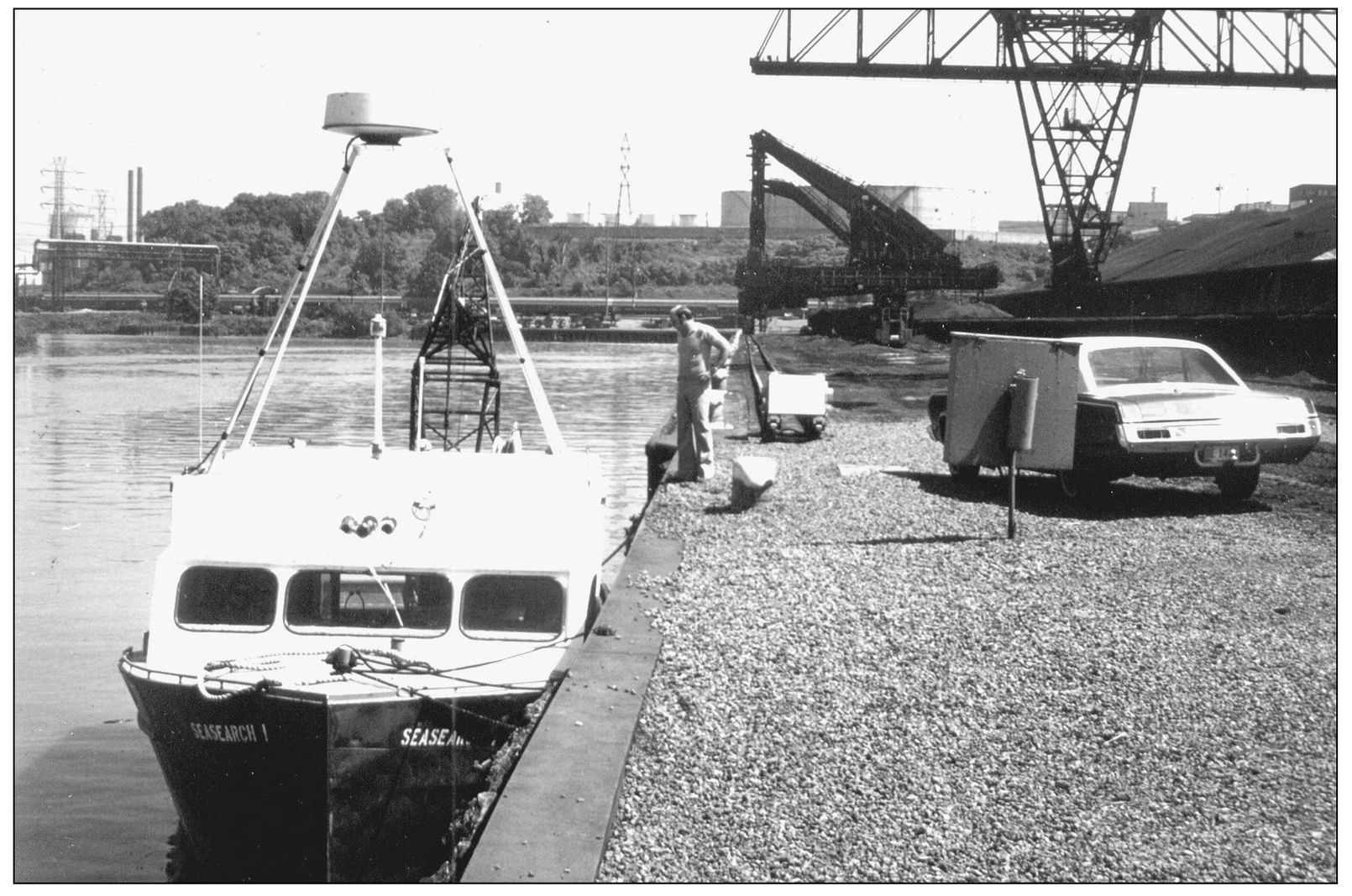
The Upper Republic Steel dock, seen here in 1976 with the Sea Search I, marks the furthest point freighters travel up the Cuyahoga. (Photograph by Robert Vance.)
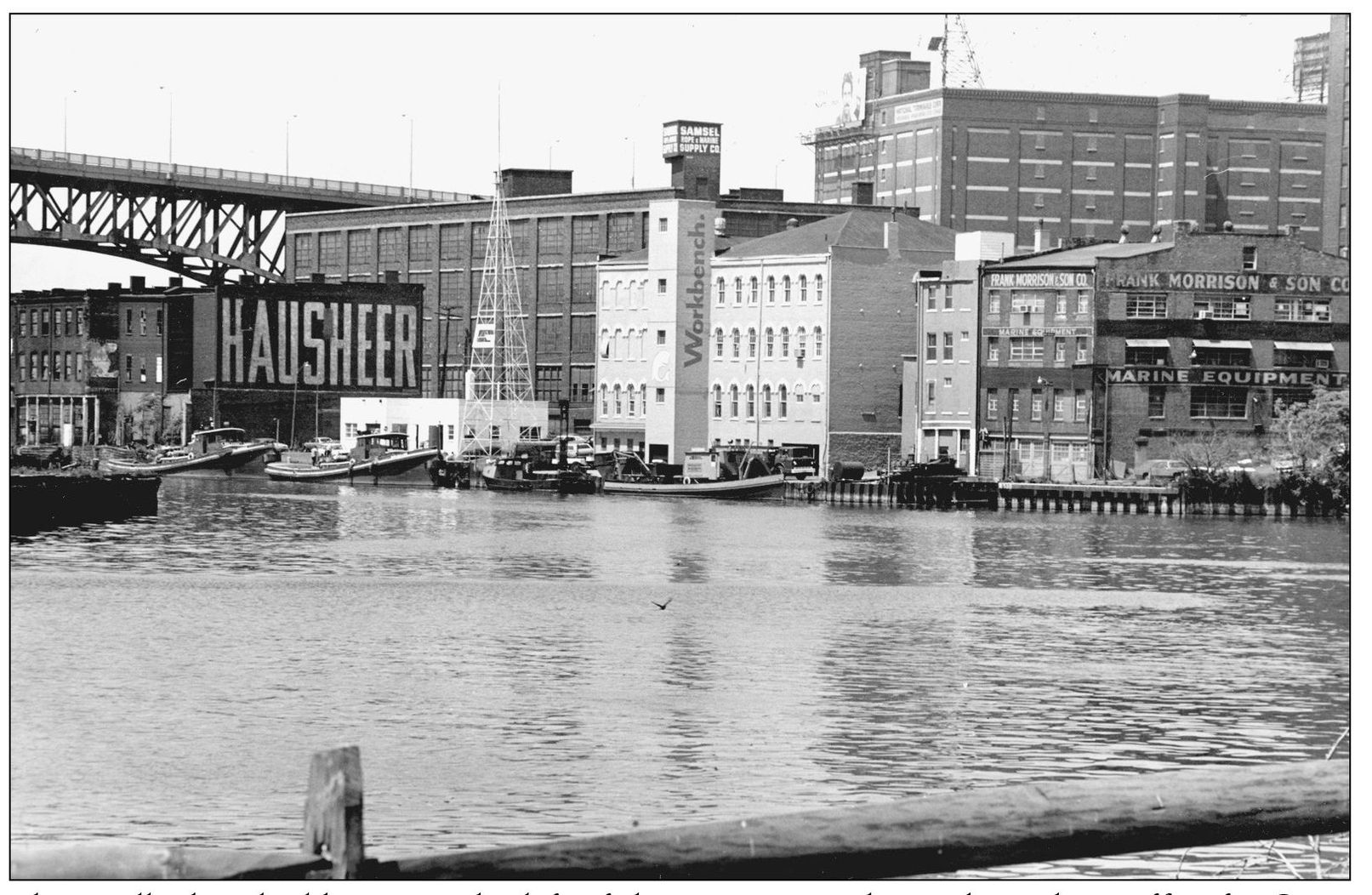
The small white building near the left of this image served as a dispatcher’s office for Great Lakes Towing Company (note the radio antenna with the large “G”). Eventually, Great Lakes Towing would move all of its operations to the old river channel of the Cuyahoga. (Photograph by Timothy Culek; Cleveland Press Archives—CSU Library Special Collections.)
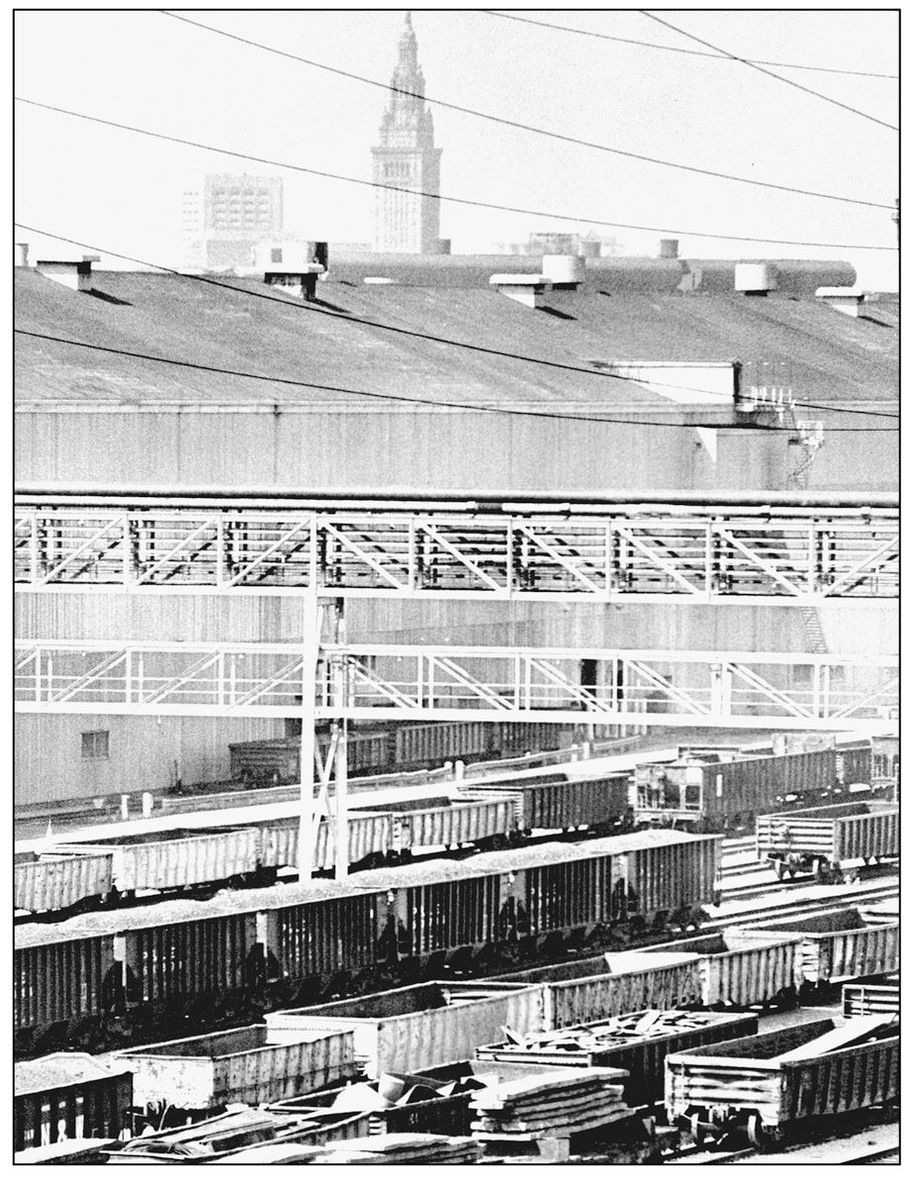
One could get lost quite easily inside the massive complex of buildings and rail lines of Republic Steel. The only reference points for the confused traveler in this instance would be the Justice Center and Terminal Tower, both seen in the background. (Photograph by Larry O. Nighswander; Cleveland Press Archives—CSU Library Special Collections.)
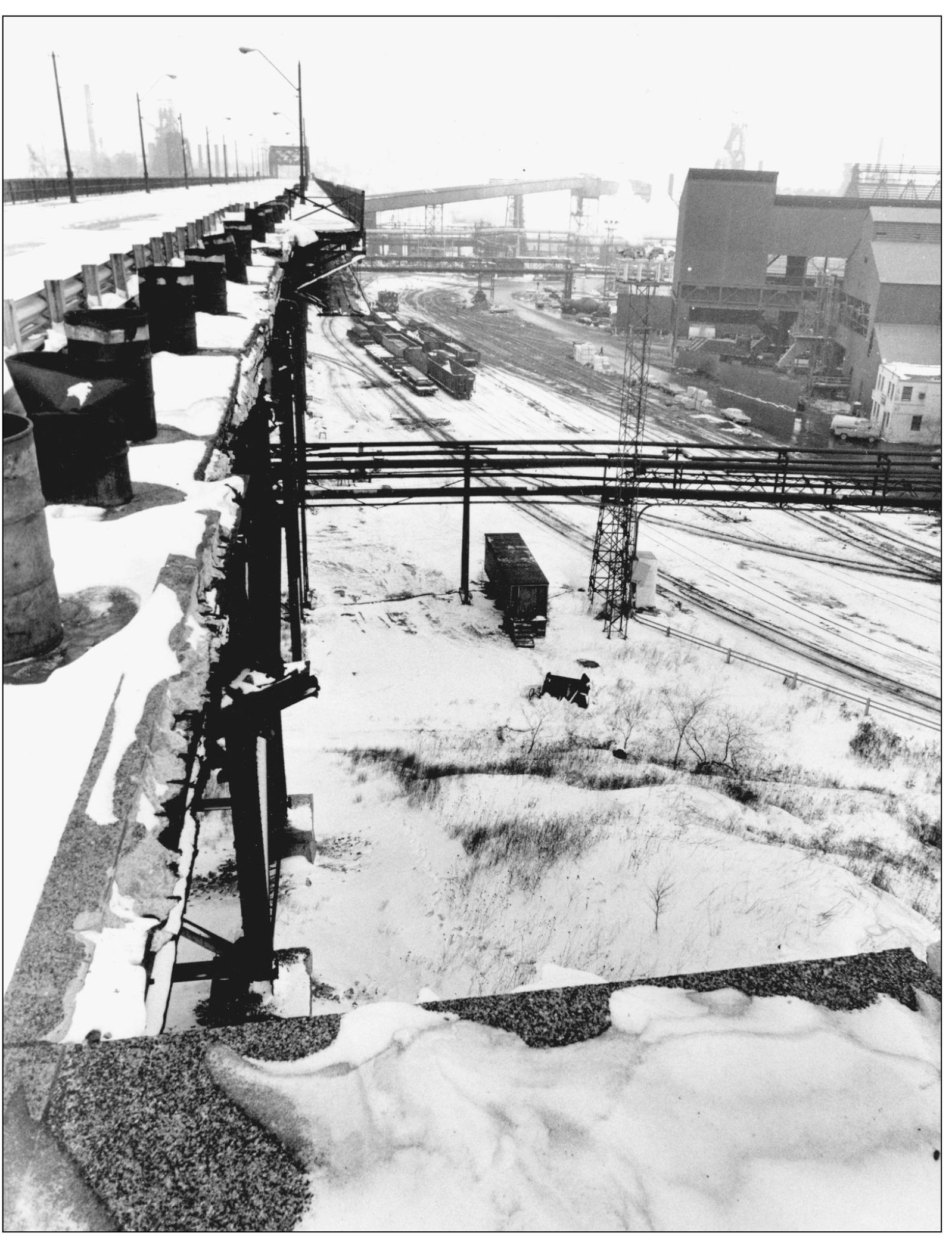
Clark Avenue travels to the west as the viewer peers into Republic Steel in March 1979. The cold of a Cleveland winter can almost be felt by just looking at the image. (Photograph by Bernie Noble; Cleveland Press Archives—CSU Library Special Collections.)
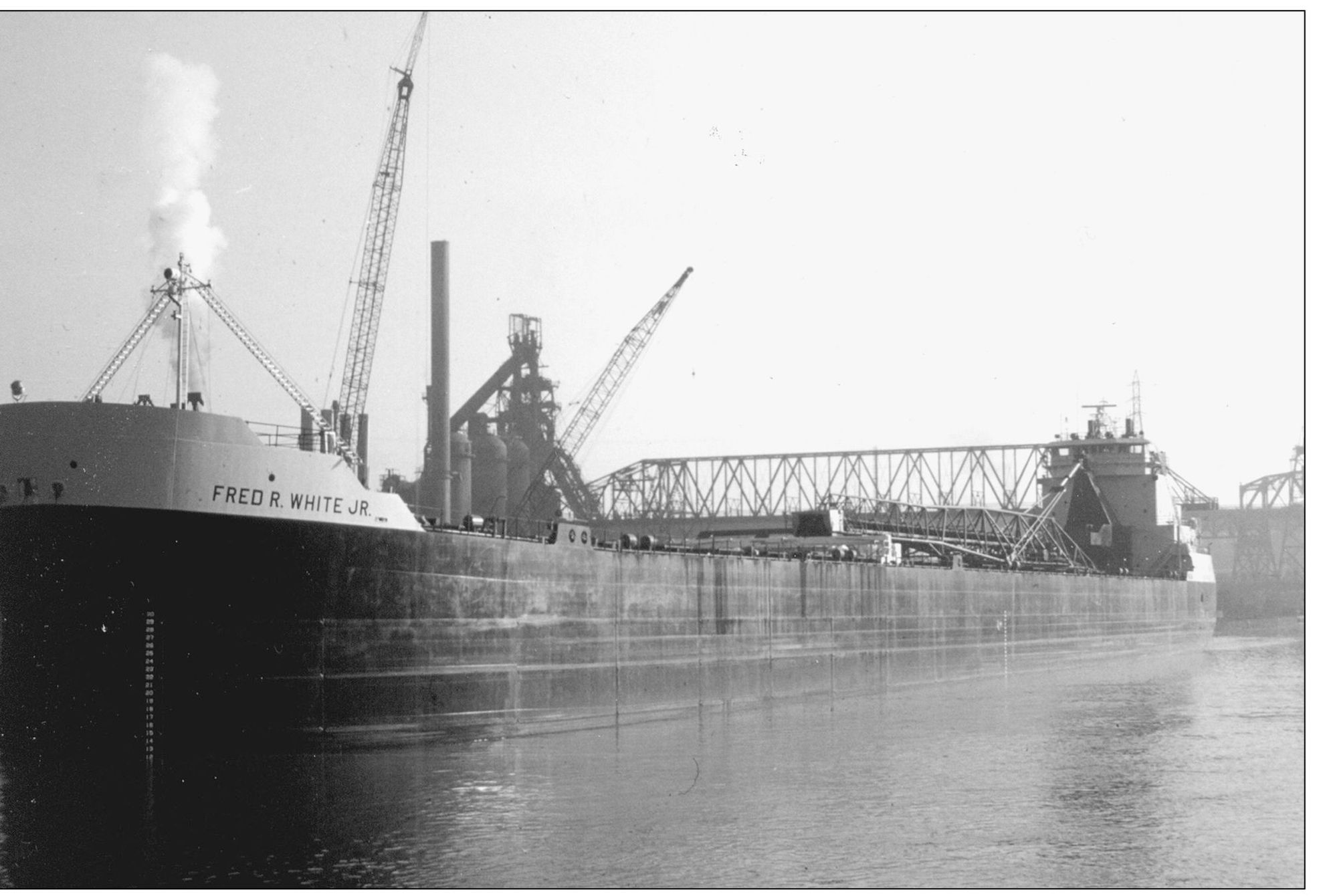
The Fred White Jr., shown here on its maiden voyage near Republic Steel, was among a new class of lake boats constructed in the late 1970s and early 1980s. The primary goal for these “river class” boats was navigating tight rivers and harbors, especially the Cuyahoga. Ships like the White tended to be 620 to 630 feet in length and could carry approximately 20,000 tons of cargo. (Photograph by Robert Vance.)
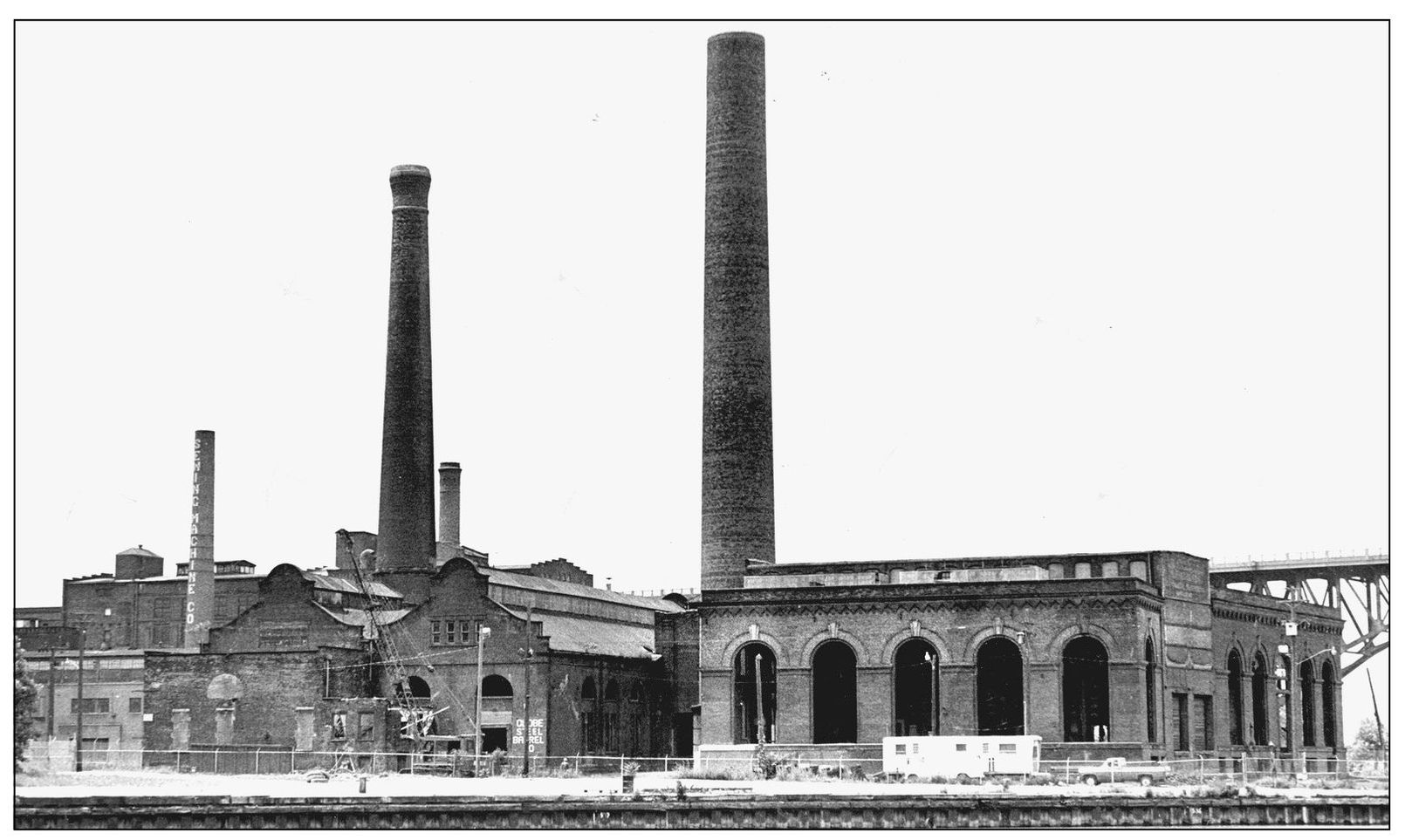
In 1892, Marcus Hannah’s Woodland Avenue and Westside Railway Company built a powerhouse to provide electricity for its street cars. By the 1970s, however, the building was nothing more than a brick shell with its roof and windows long since crumbled away. A plan was launched to turn the old building into something resembling San Francisco’s Ghiradelli Square or Seattle’s Trolley Square. By the end of the 1980s, restaurants, a video arcade, and a comedy club would occupy the space where dynamos used to labor. (Cleveland Press Archives—CSU Library Special Collections.)
Here is another view of the remains of the powerhouse. (Photograph by Clayton Knipper; Cleveland Press Archives—CSU Library Special Collections.)
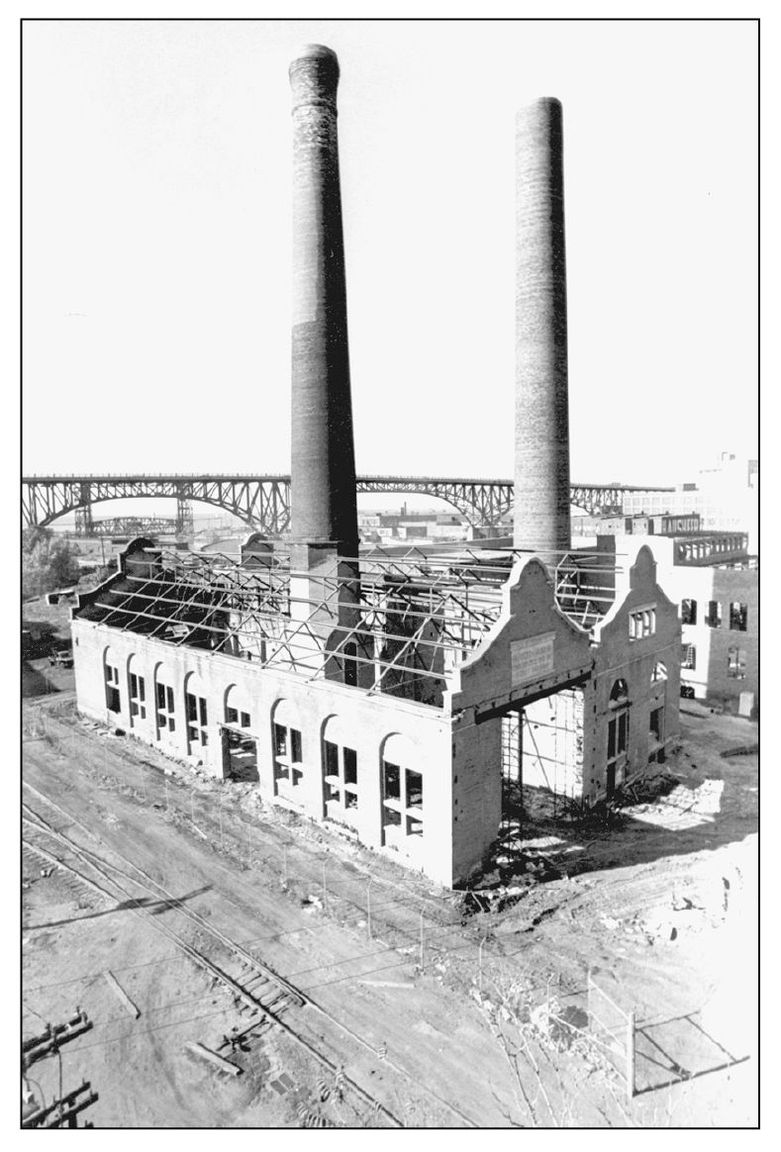
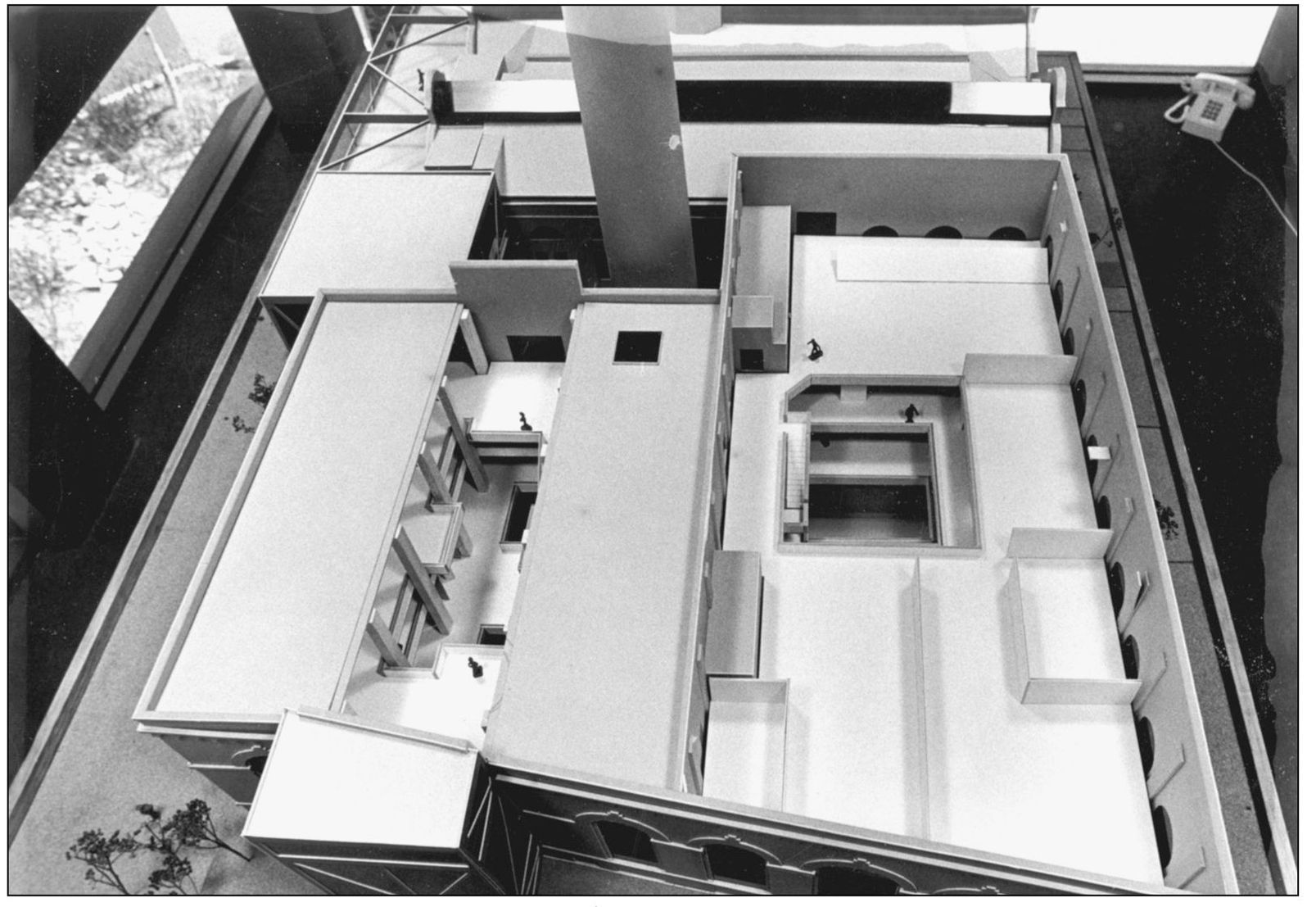
An architect’s model of the proposed $5 million powerhouse project. (Cleveland Press Archives—CSU Library Special Collections.)
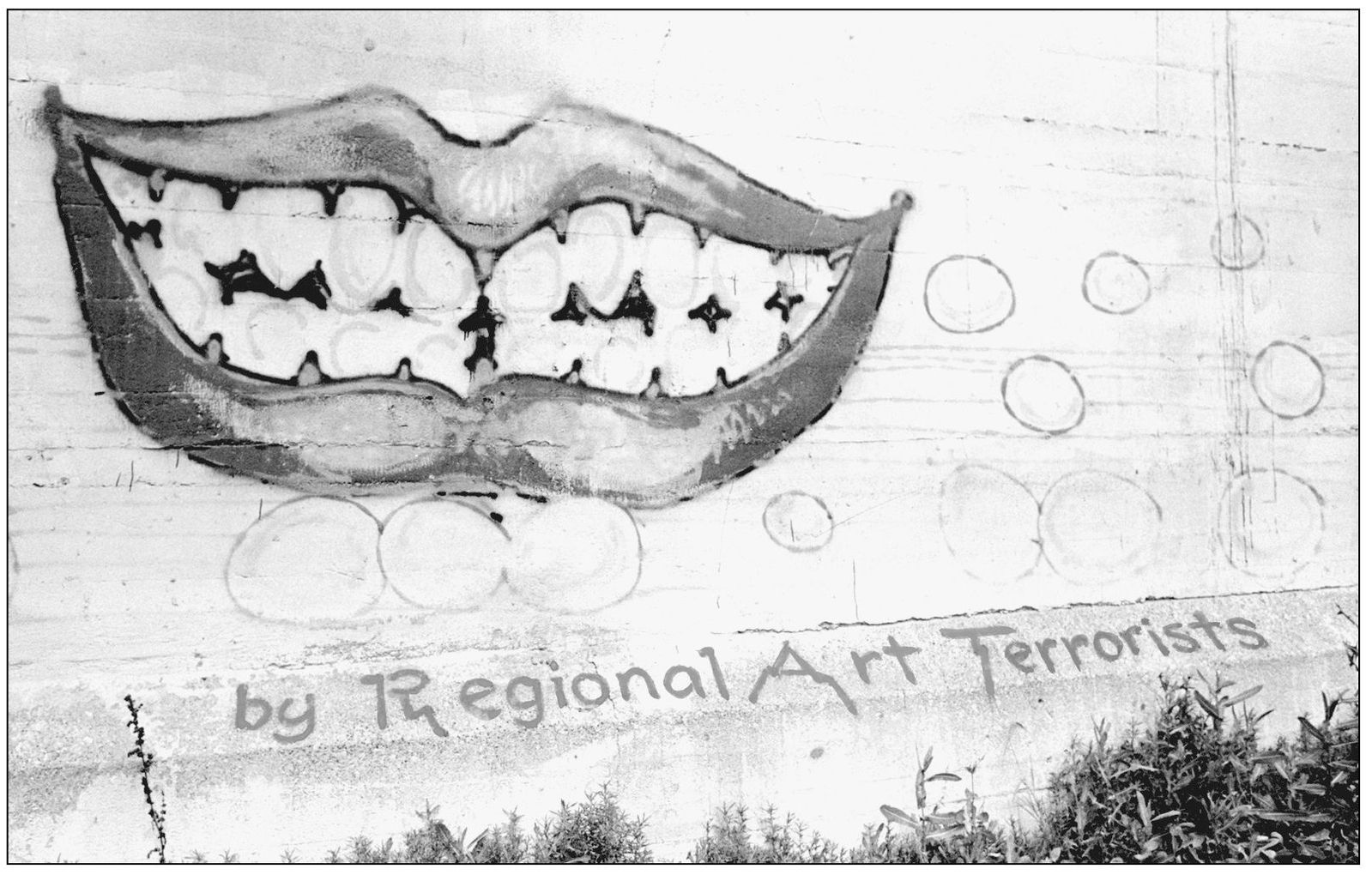
In the 1970s, graffiti artists would use the deteriorating buildings, bridge piers, and transit cars of America’s large cities as canvasses for their work. Here an outfit known as the Regional Art Terrorists has left its mark underneath the Detroit-Superior Bridge. (Photograph by Bill Nehez; Cleveland Press Archives—CSU Library Special Collections.)
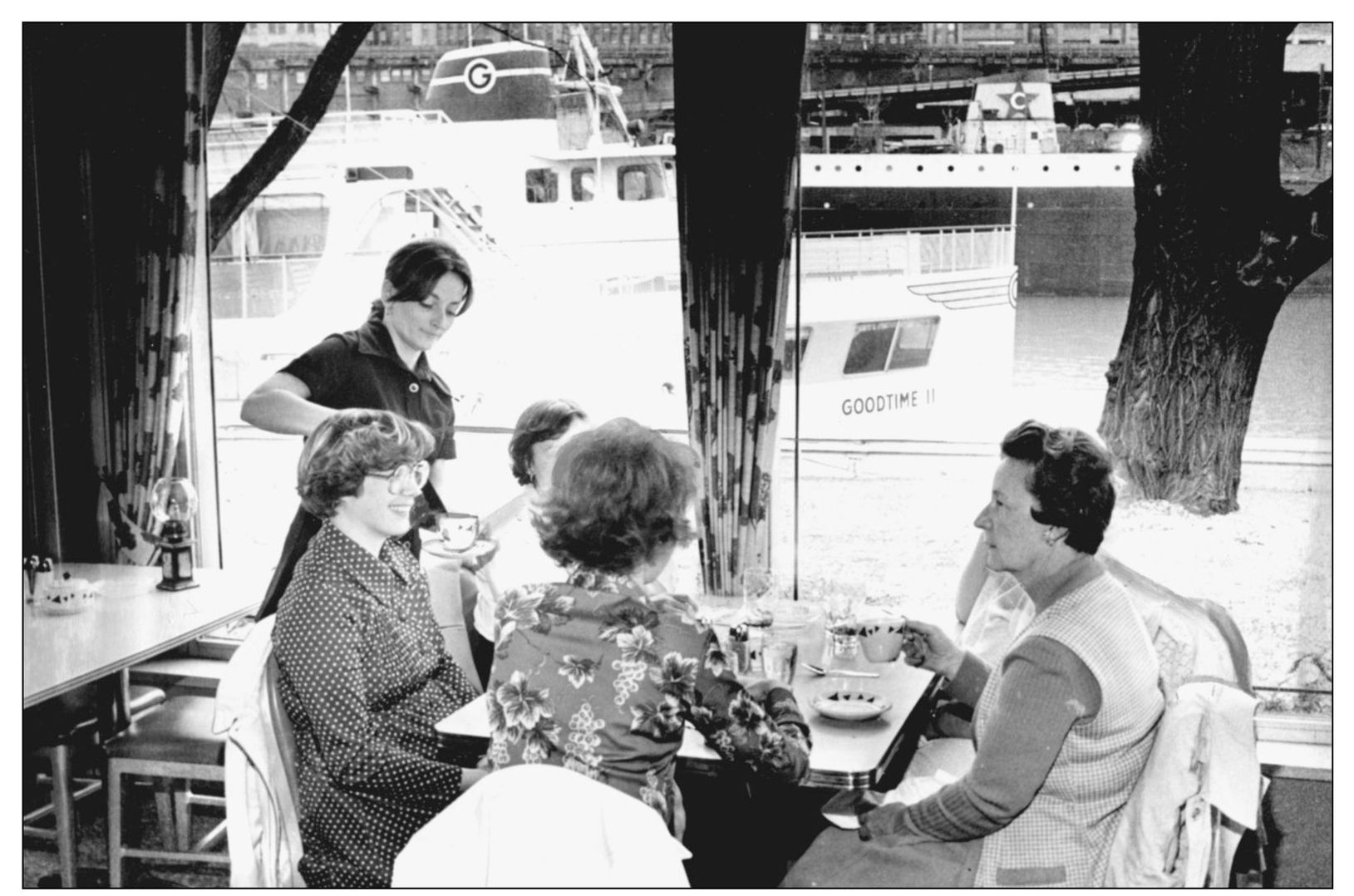
Diners enjoy lunch and a unique view at Jim’s Steak House on an early-spring day in 1978. Sitting outside the window is the Goodtime II excursion boat which would take passengers on tours of the Cuyahoga and Lake Erie. Moored on the other side of the river is a member of the Columbia Transportation fleet (known now as Oglebay Norton Marine Services). (Photograph by Tom Tomsic; Cleveland Press Archives—CSU Library Special Collections.)

The Hannah fleet’s Joseph H. Thompson waits out the winter of 1978-1979 on an ice-choked Cuyahoga. The Thompson was a particularly interesting vessel to watch as it had started its life as a C-4 cargo ship built for transporting troops during World War II. The Thompson and several other former C-4 ships would be converted to Great Lakes freighter in the 1950s. (Photograph by Frank Reed. Cleveland Press Archives—CSU Library Special Collections.)
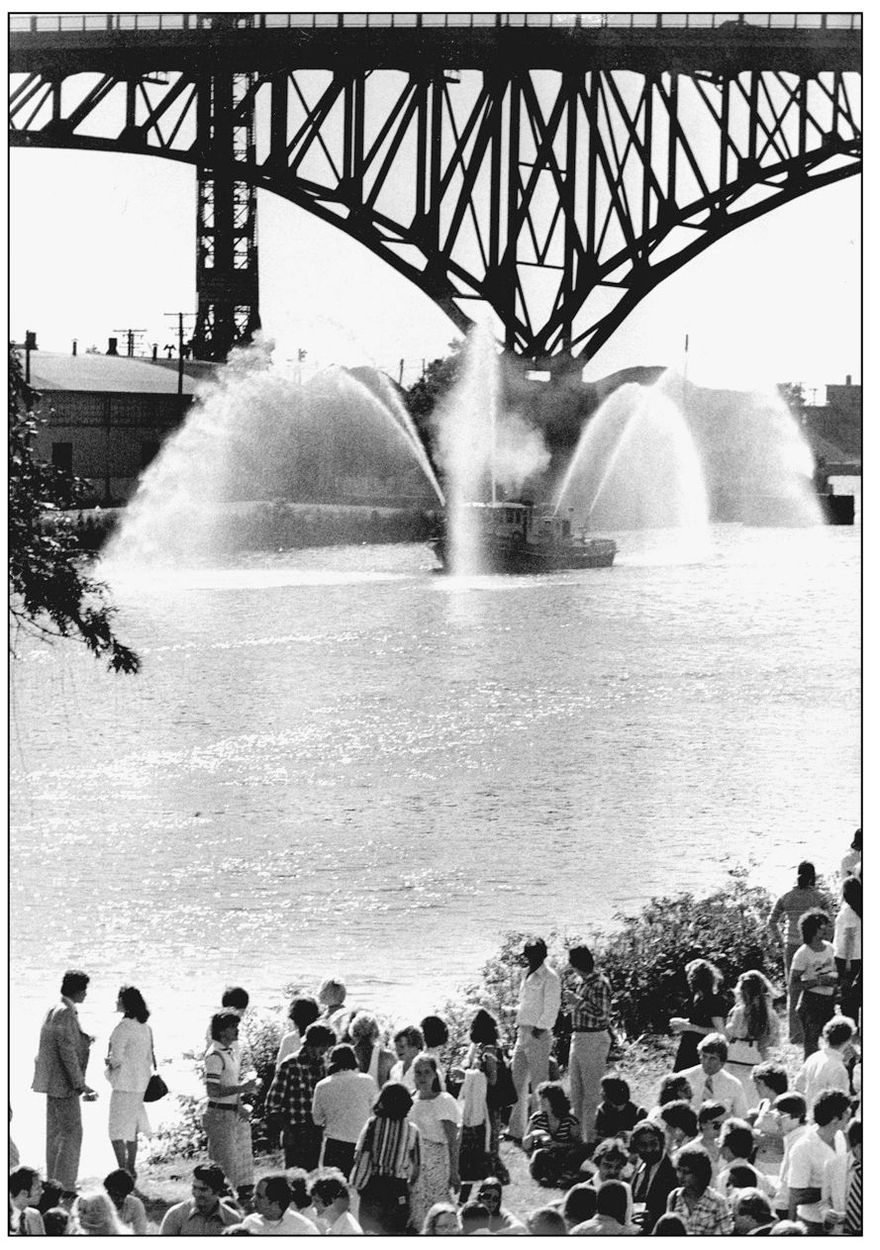
Default, a weakening industrial base, and a continued exodus to the suburbs would all take their toll on Cleveland as the 1970s came to a close. There were some reasons to celebrate however, such as work to clean-up the Cuyahoga and Lake Erie. A group of Clevelanders gather here to mark the 10th anniversary of the infamous 1969 fire along a much cleaner river. (Cleveland Press Archives—CSU Library Special Collections.)
Clevelanders could also take pride in their city’s remarkable ethnic diversity. Germans, Irish, Poles, Czechs, and African Americans were only a few of the different backgrounds to be found in the city. A Peoples and Cultures Benefit was held in the Flats in the fall of 1979 to celebrate Cleveland’s colorful quilt of ethnicities. Helping to staff the benefit were (front to back) Alicia Ciliberto, Diane M. Ruppelt, Richard Fuerst, and Judy Strauss. (Photograph by Van Dillard; Cleveland Press Archives—CSU Library Special Collections.)
